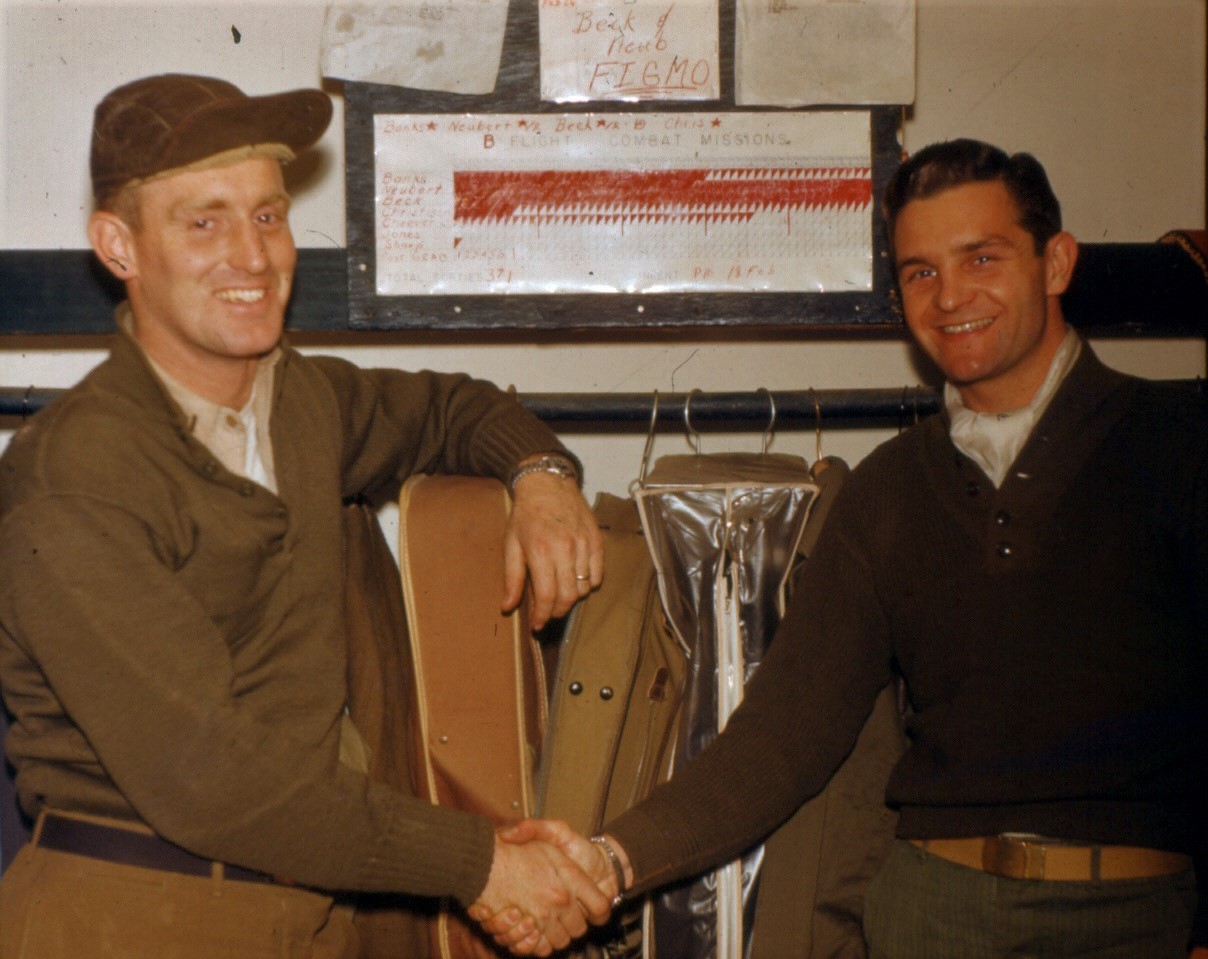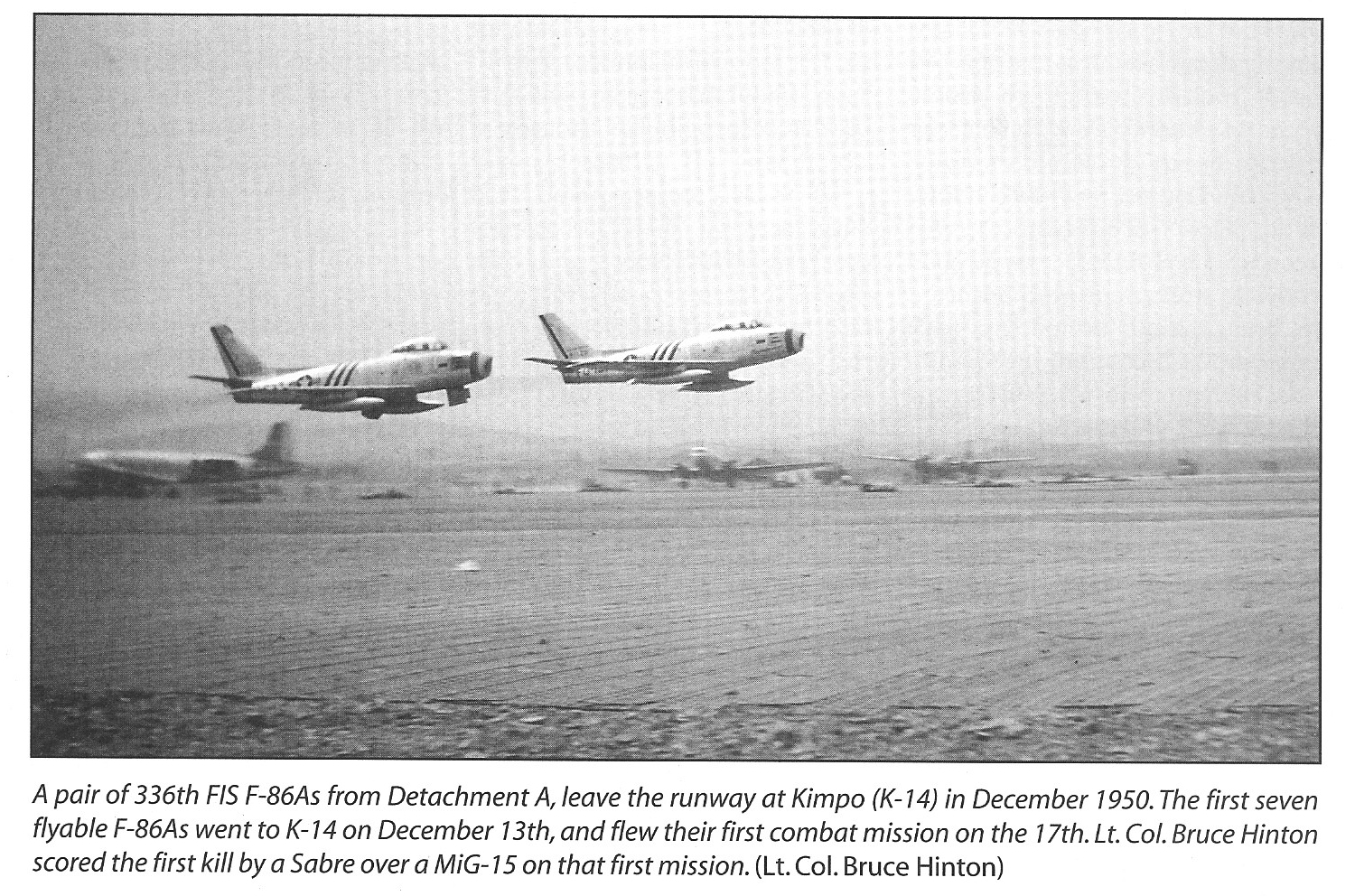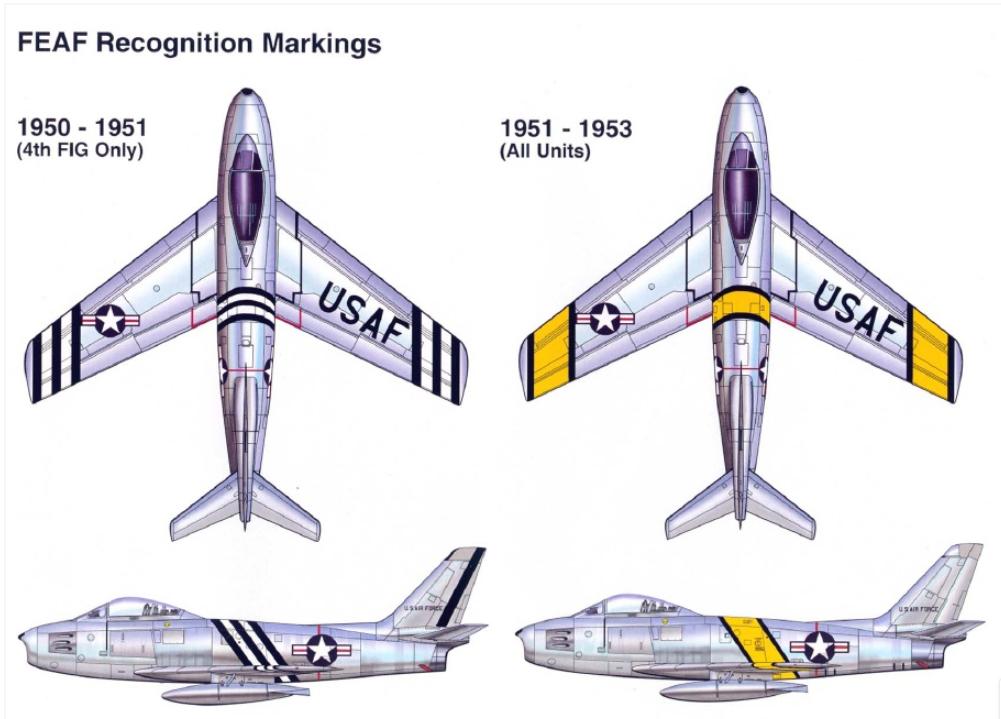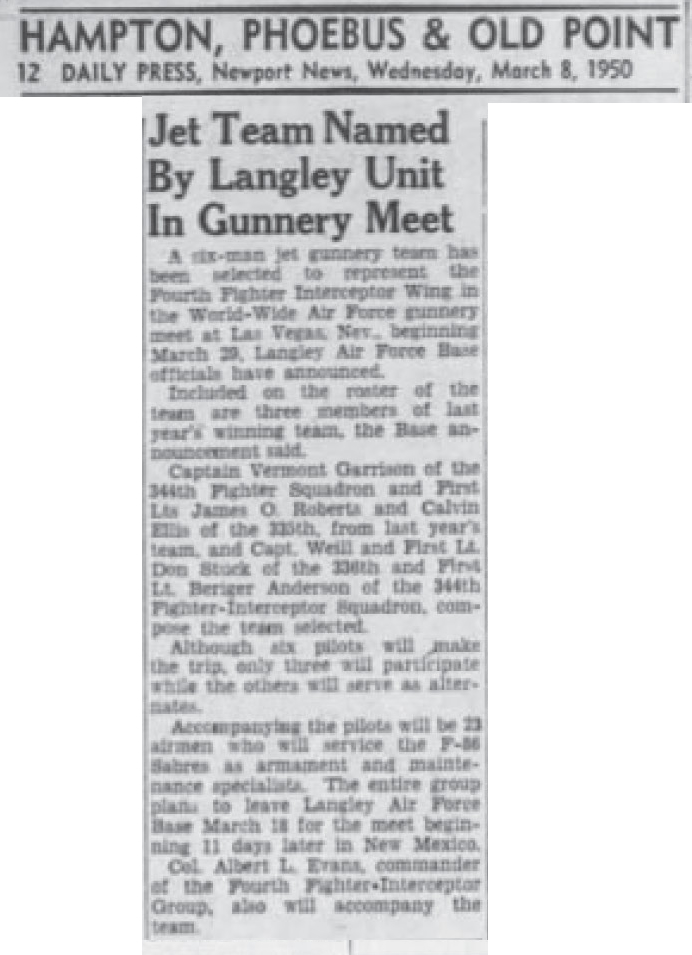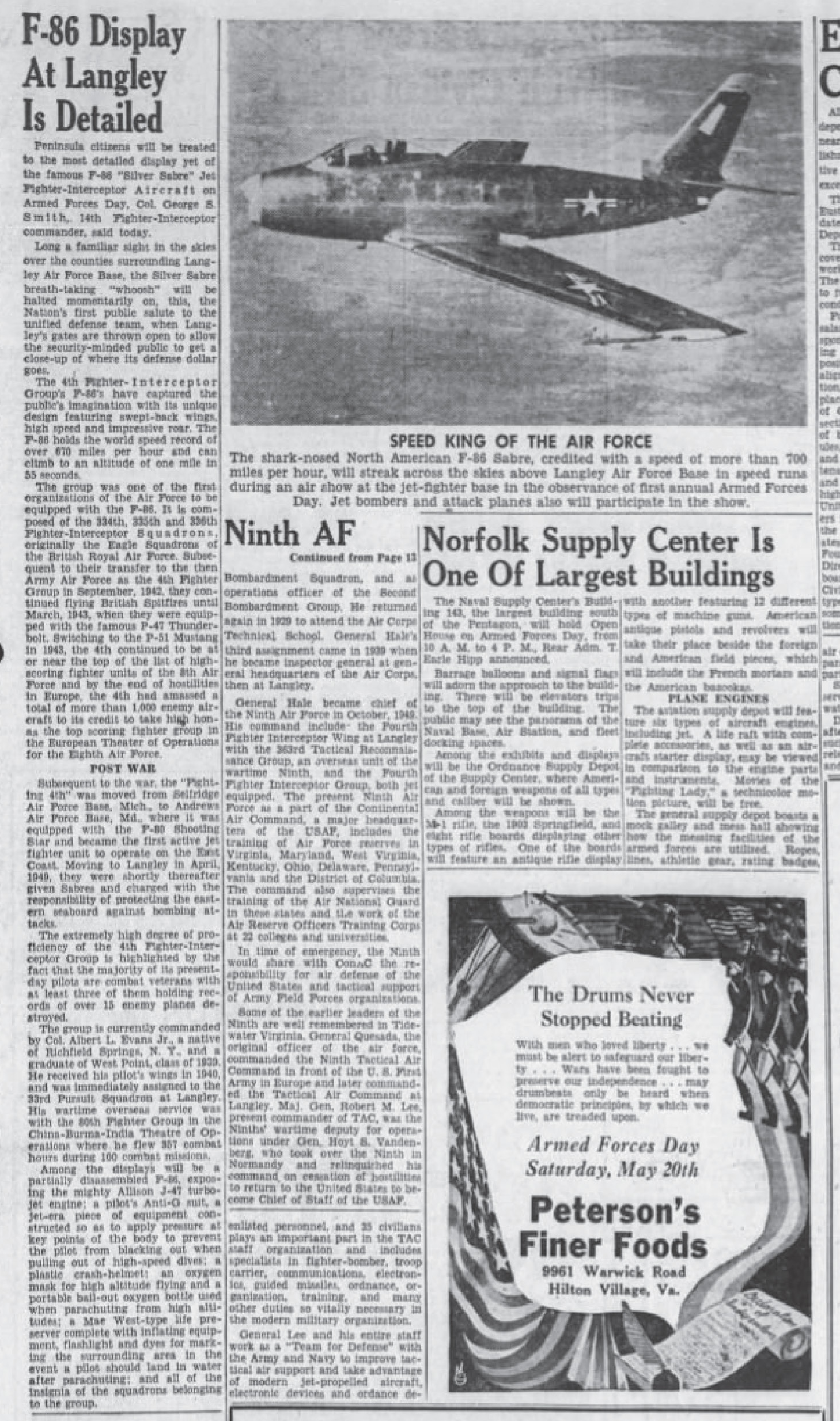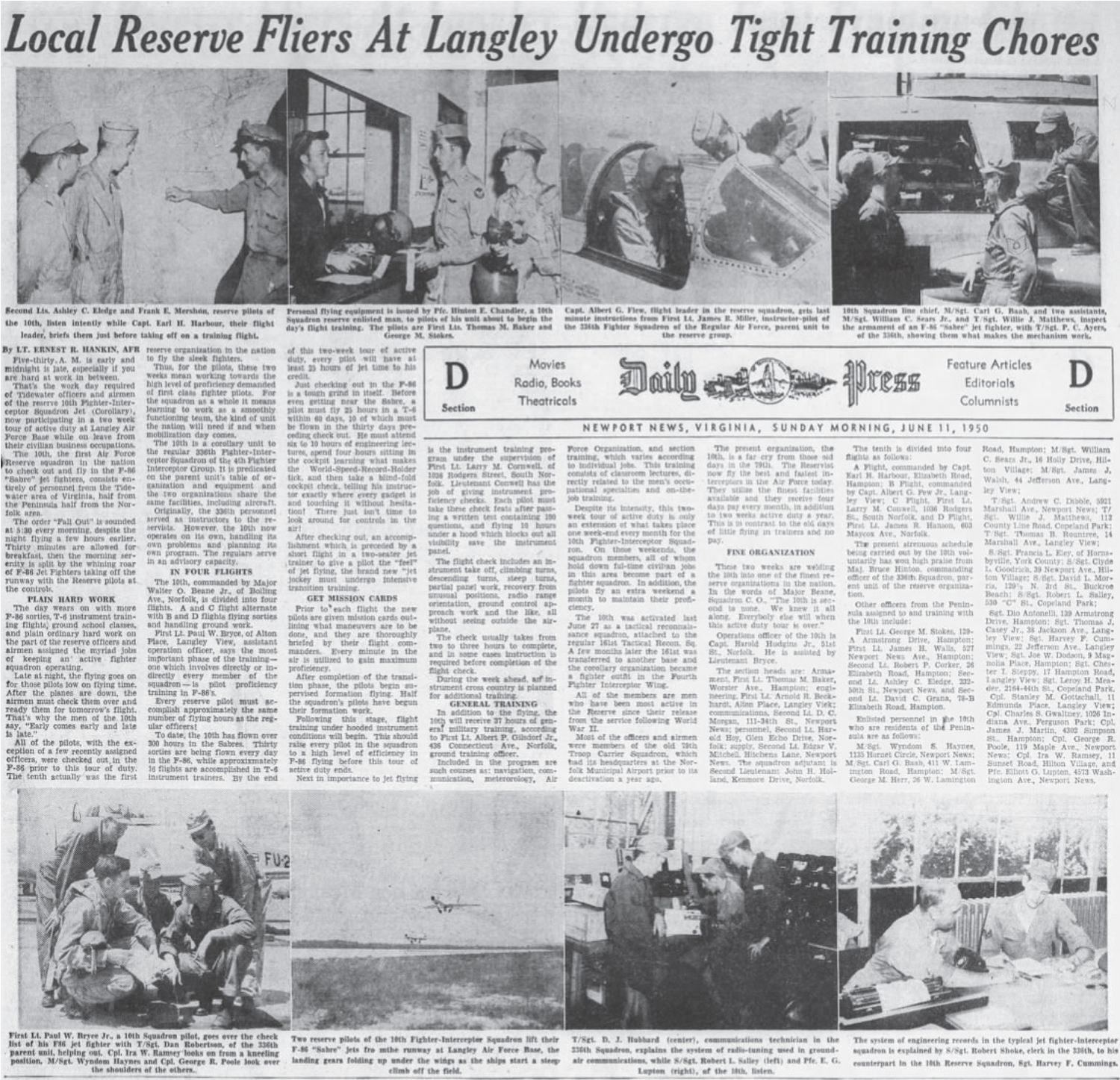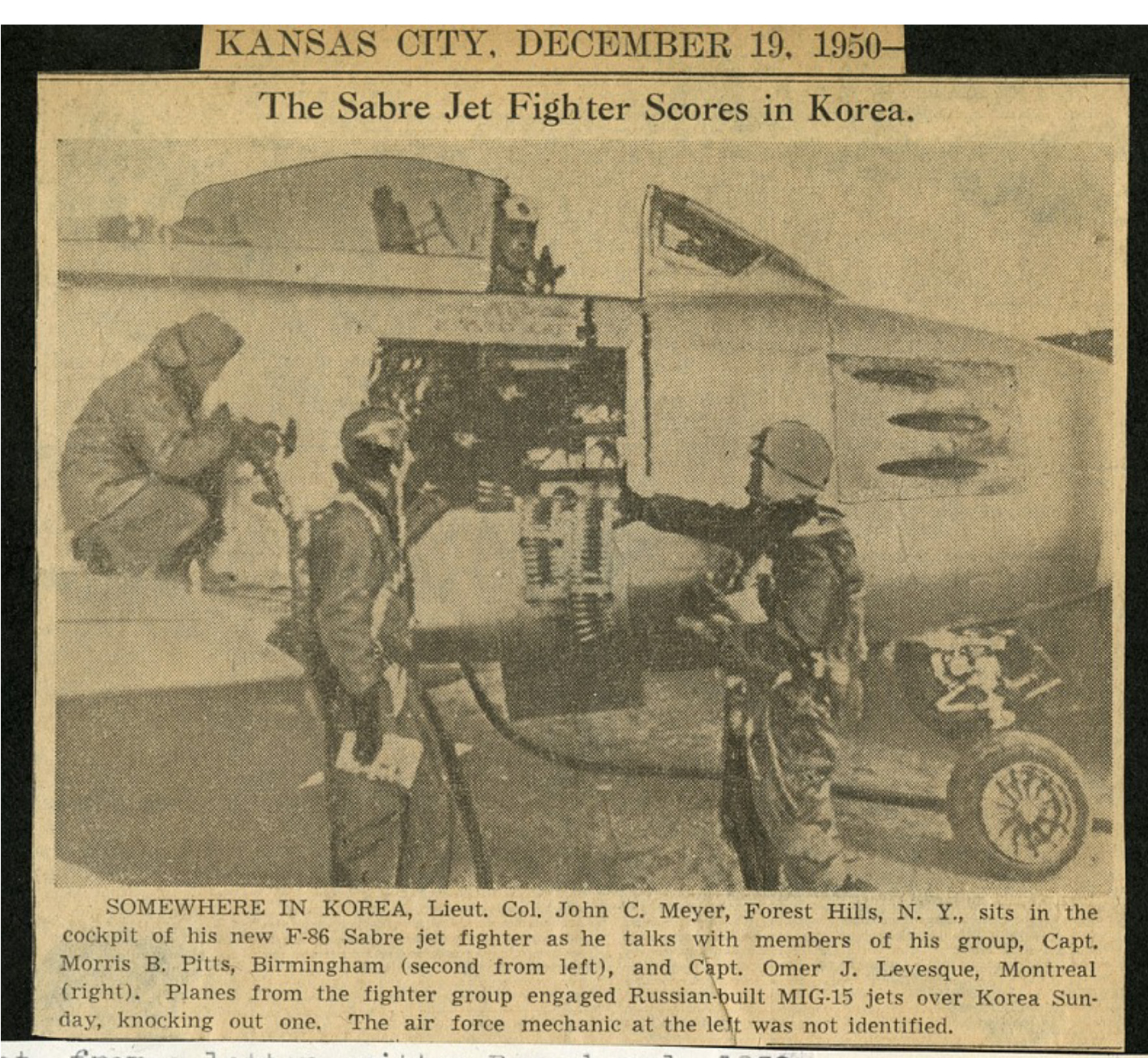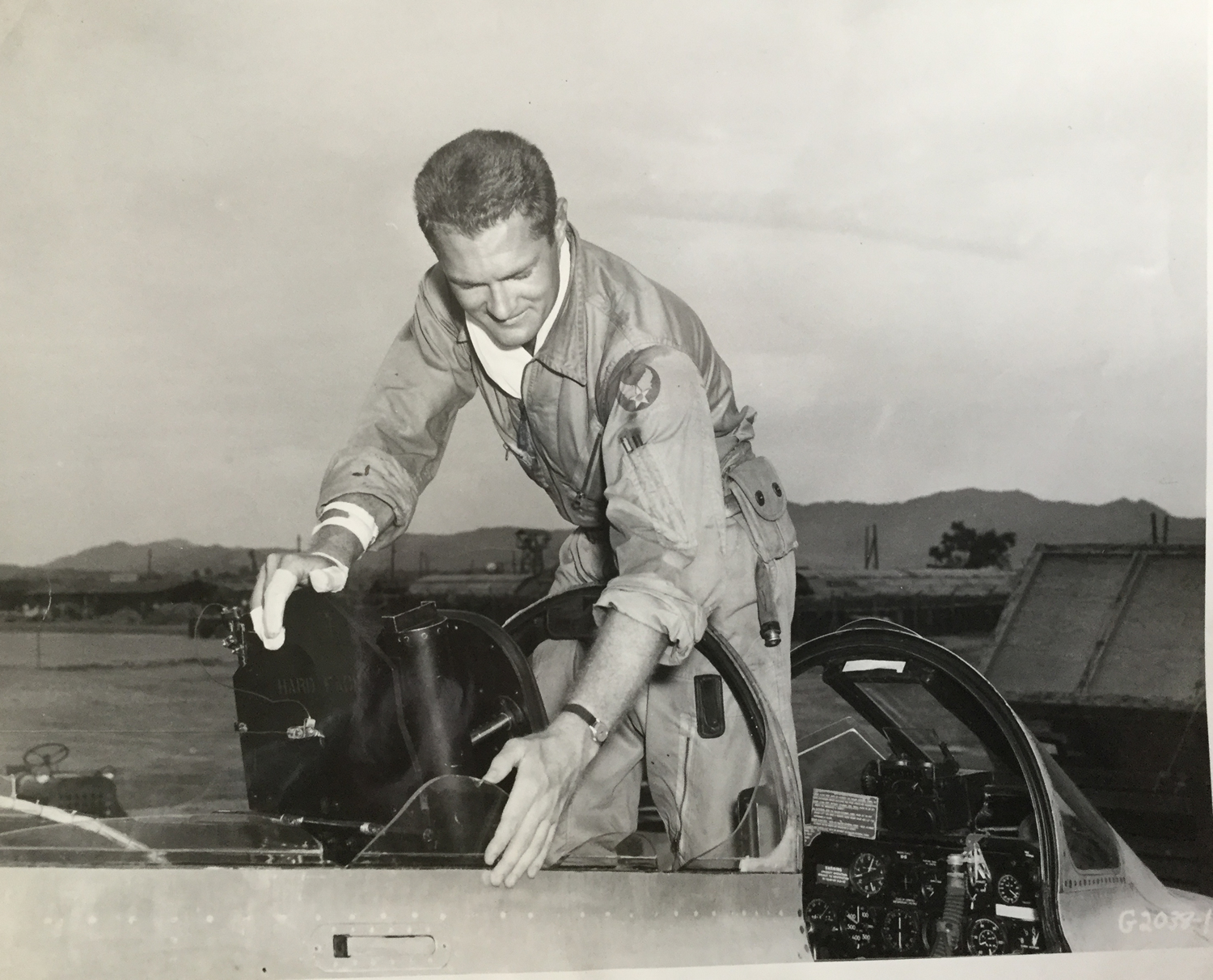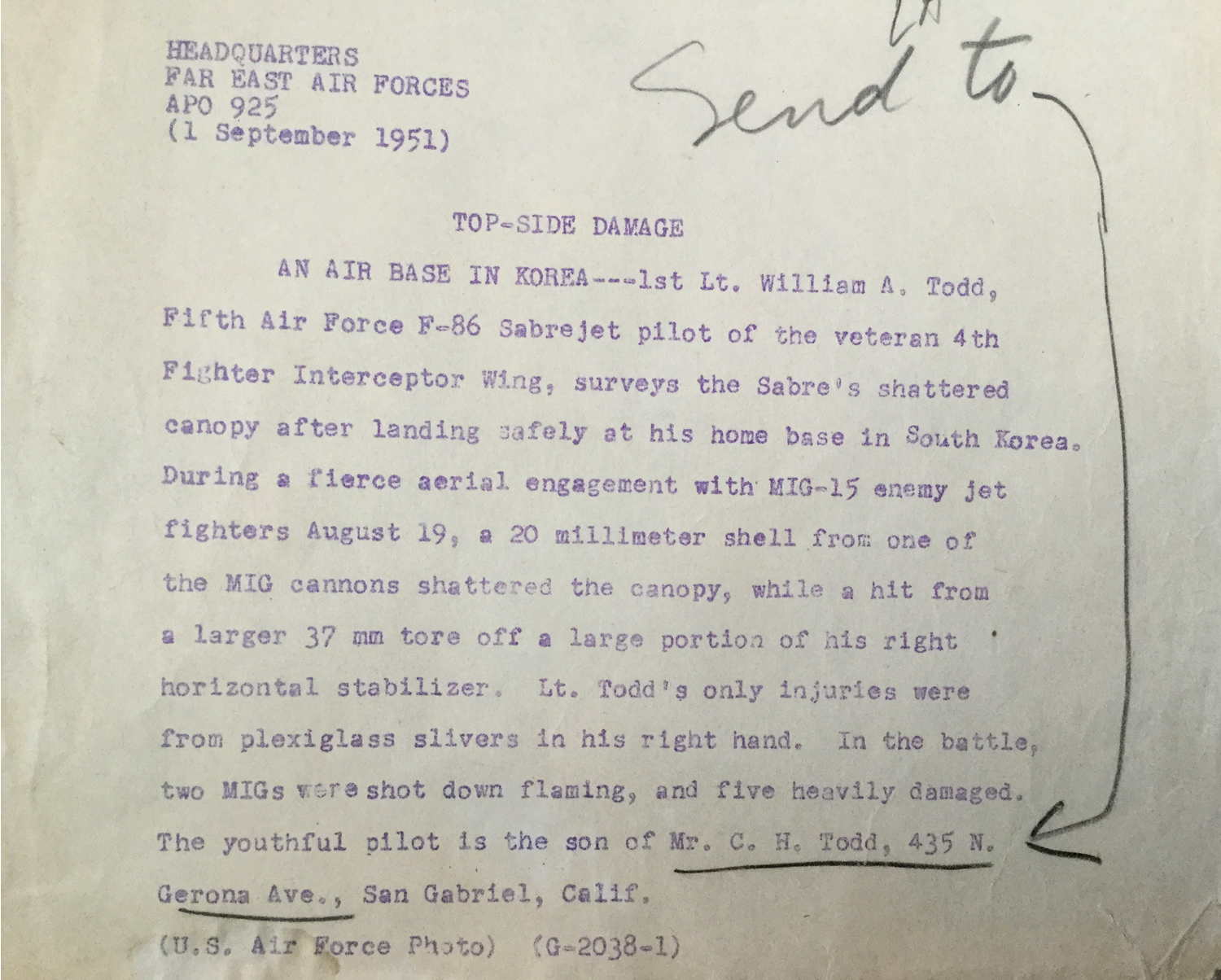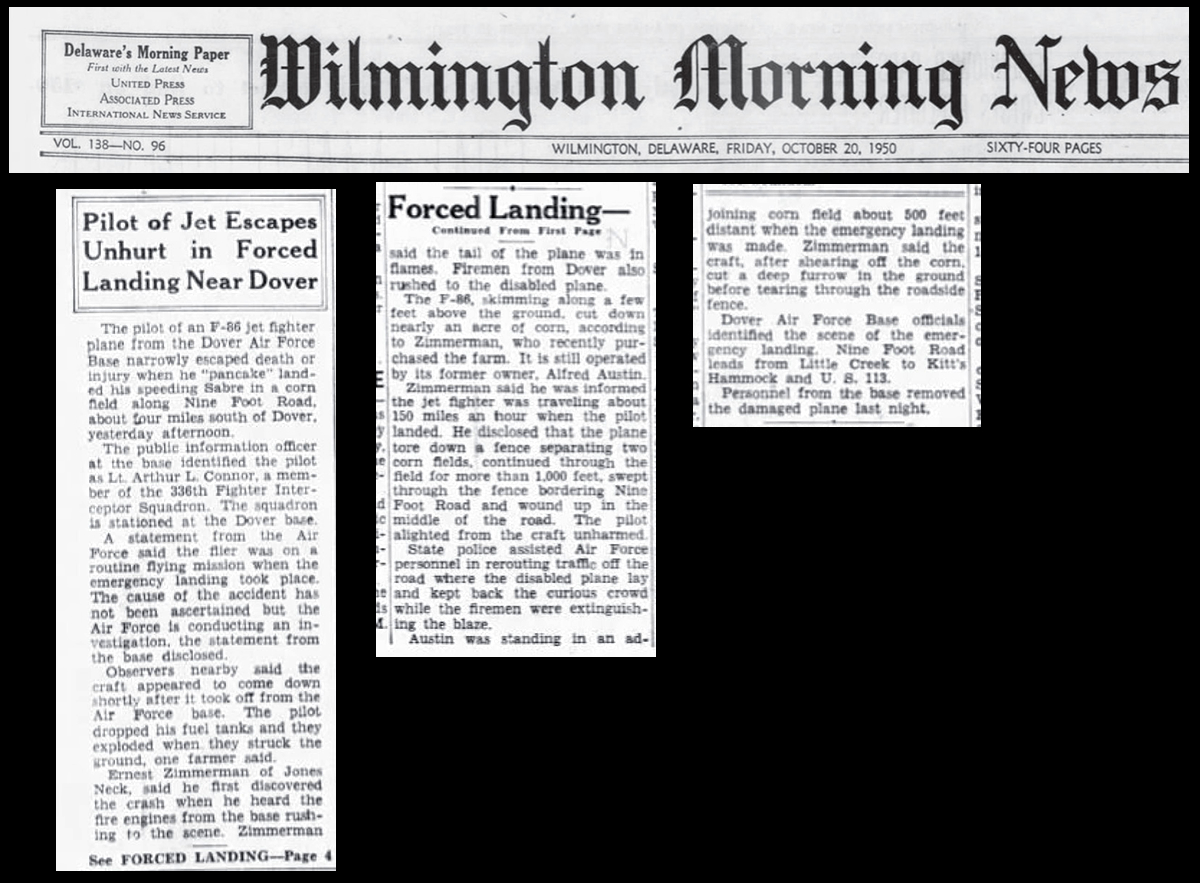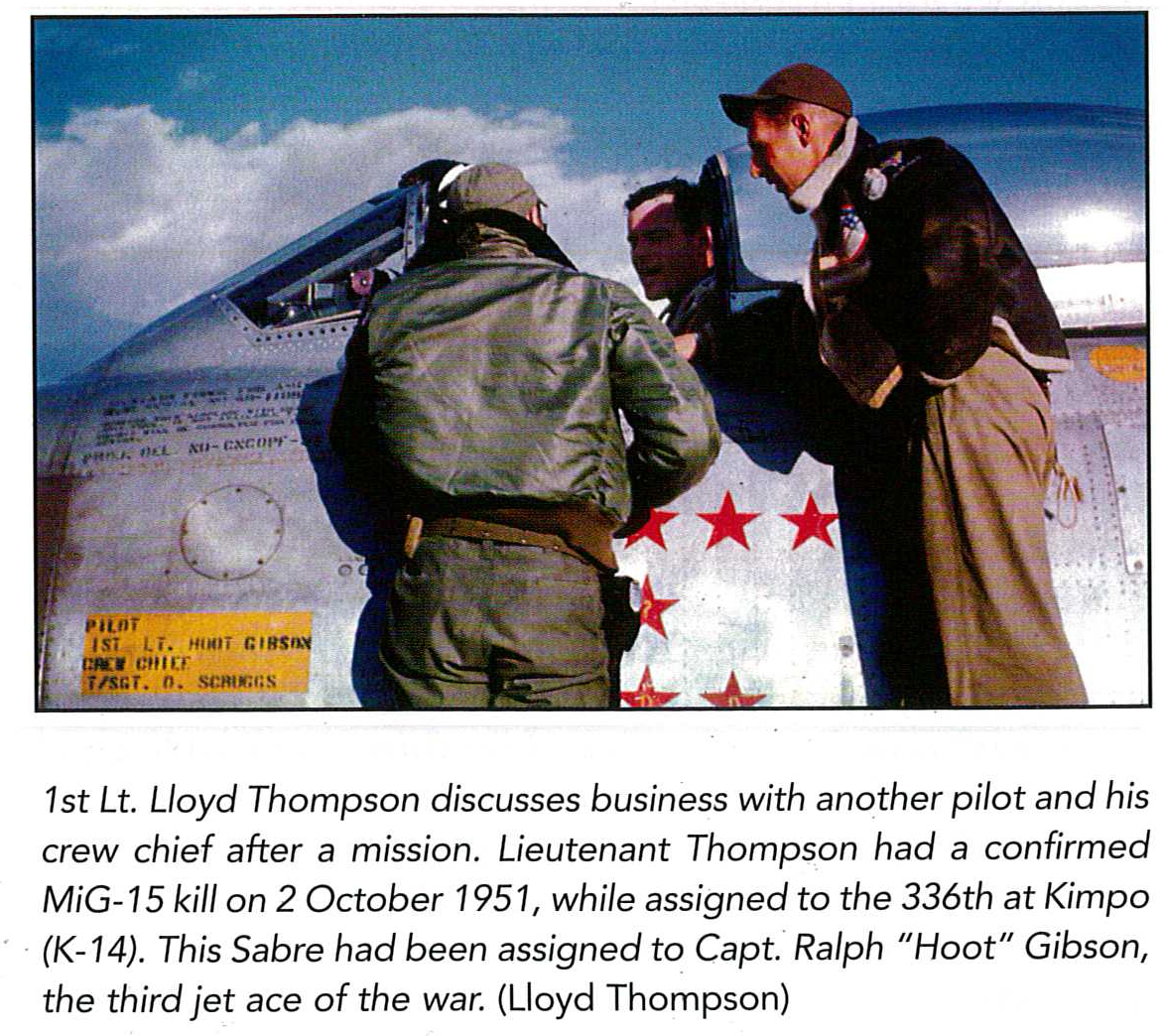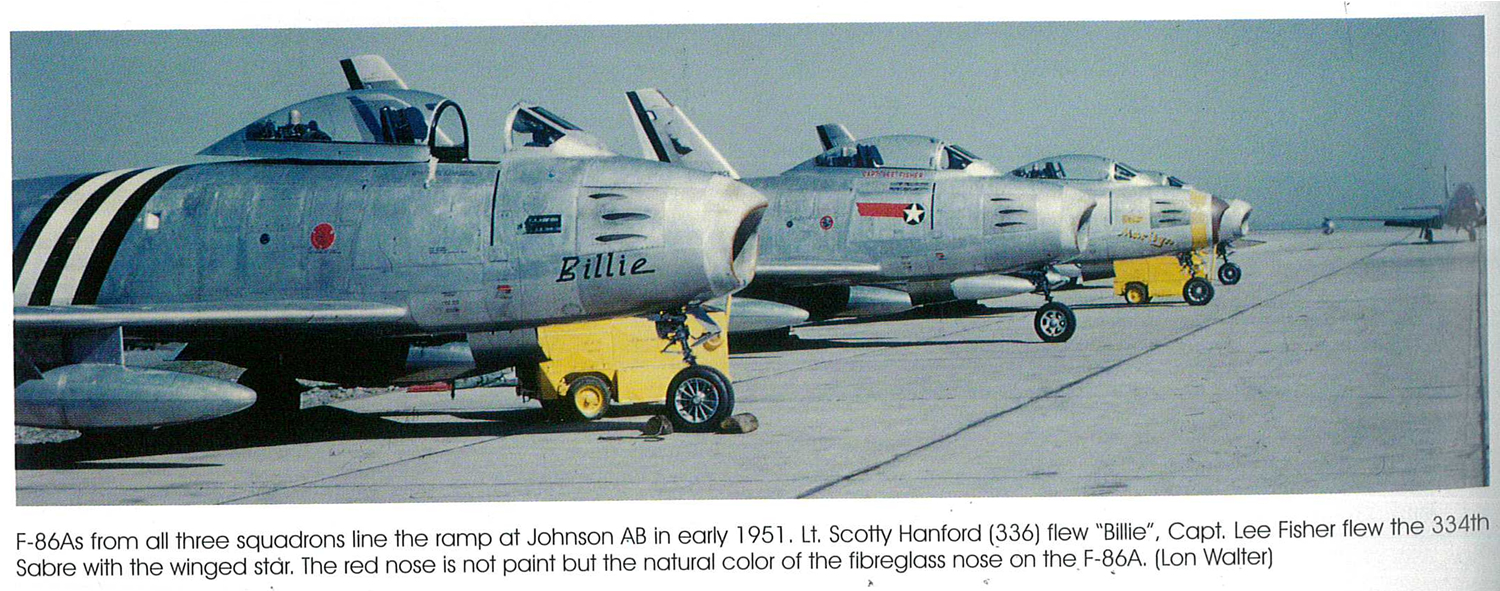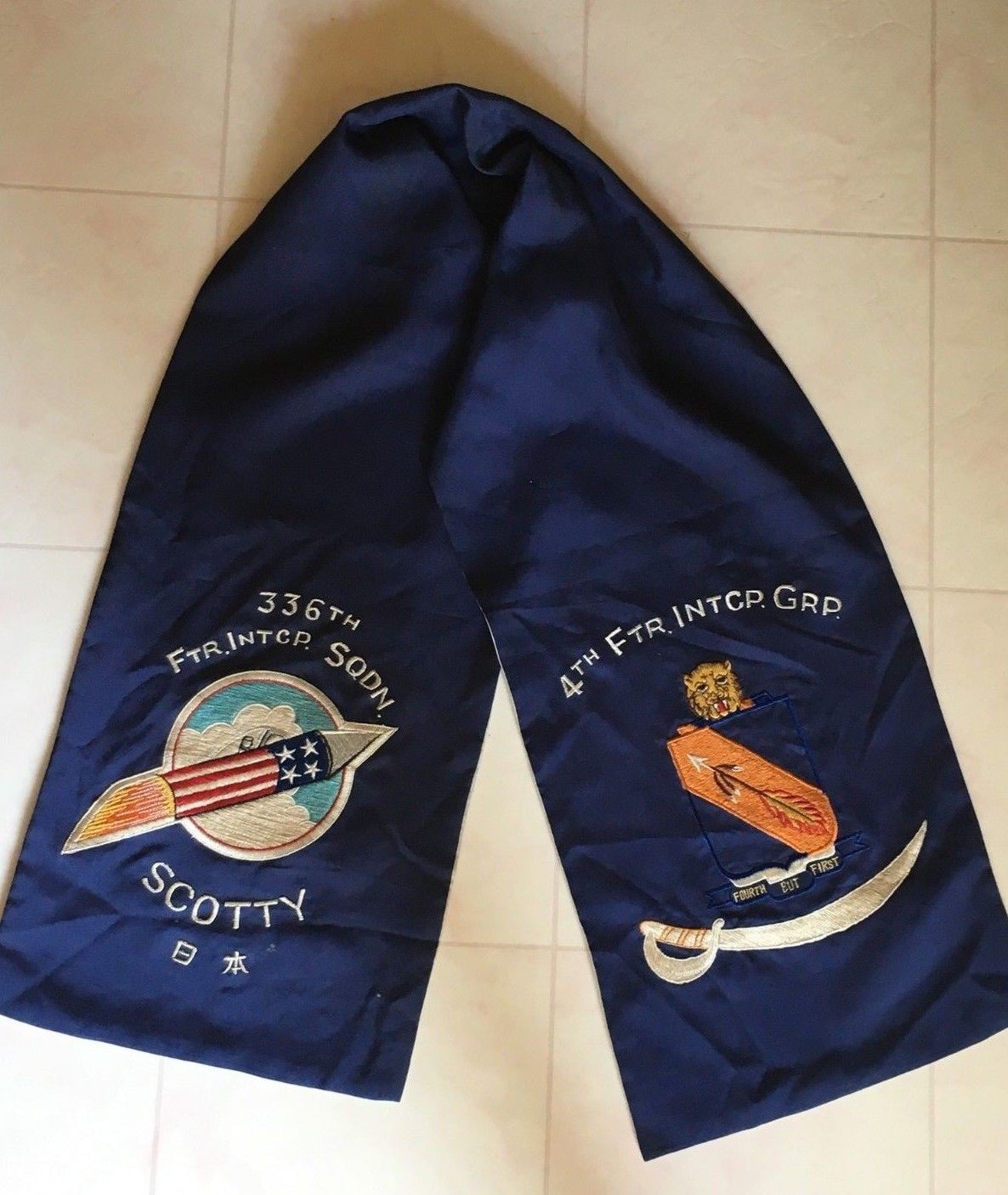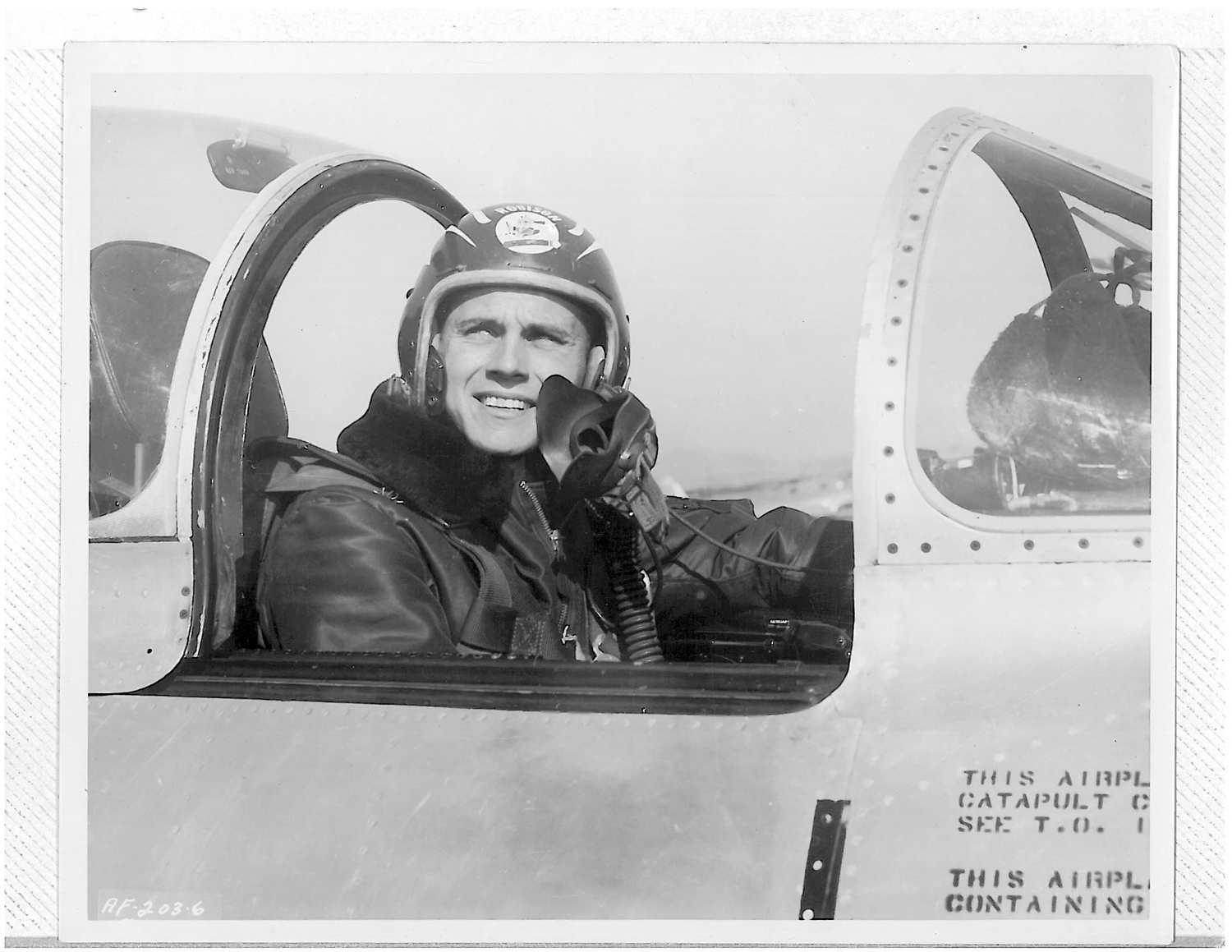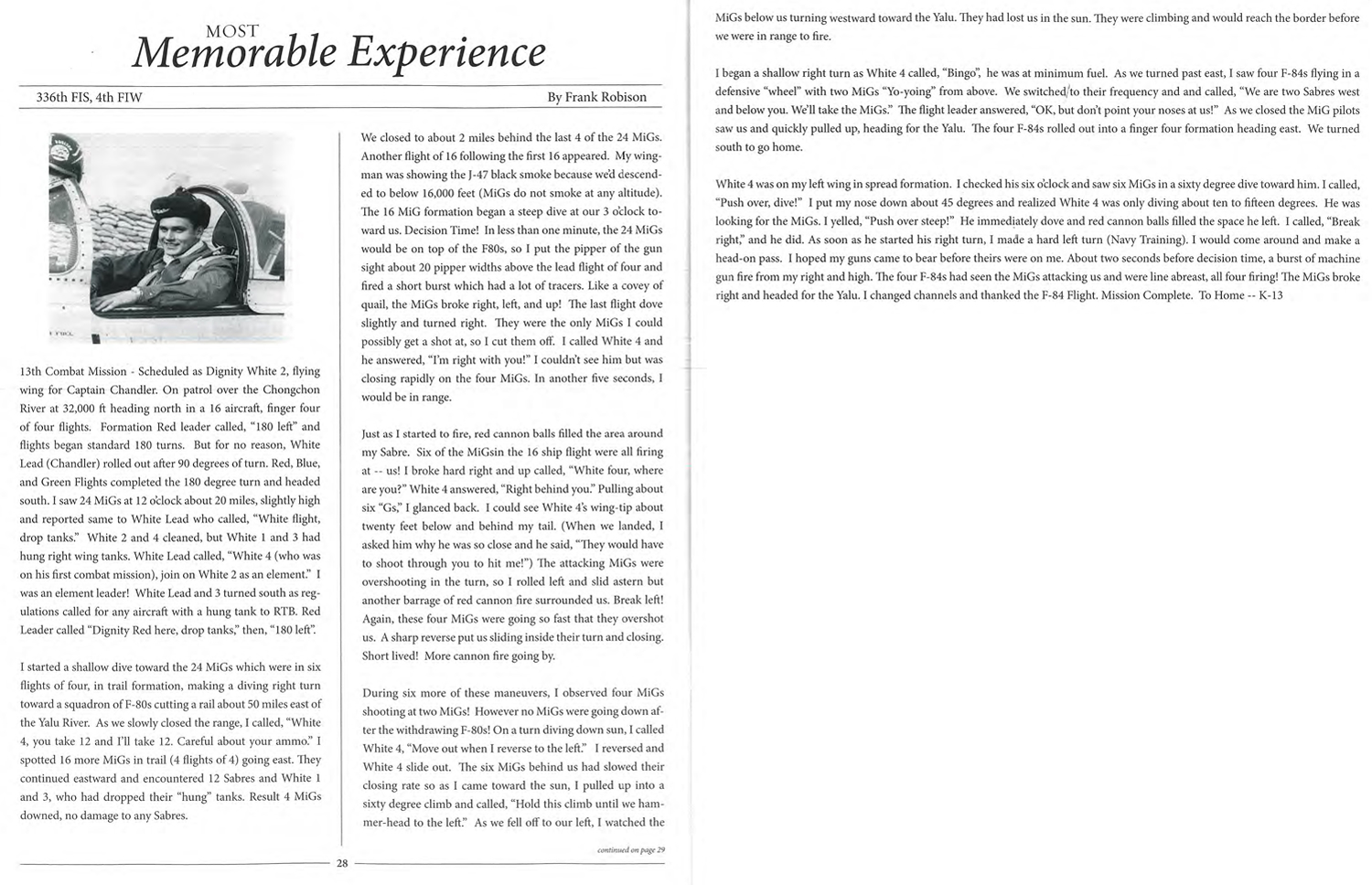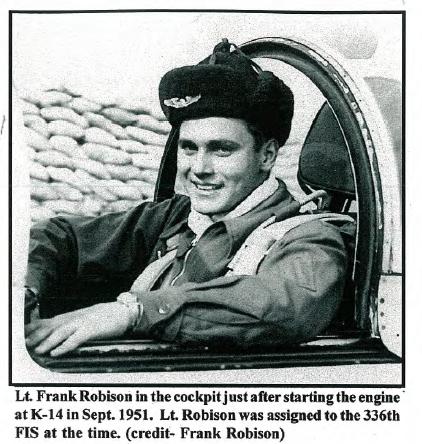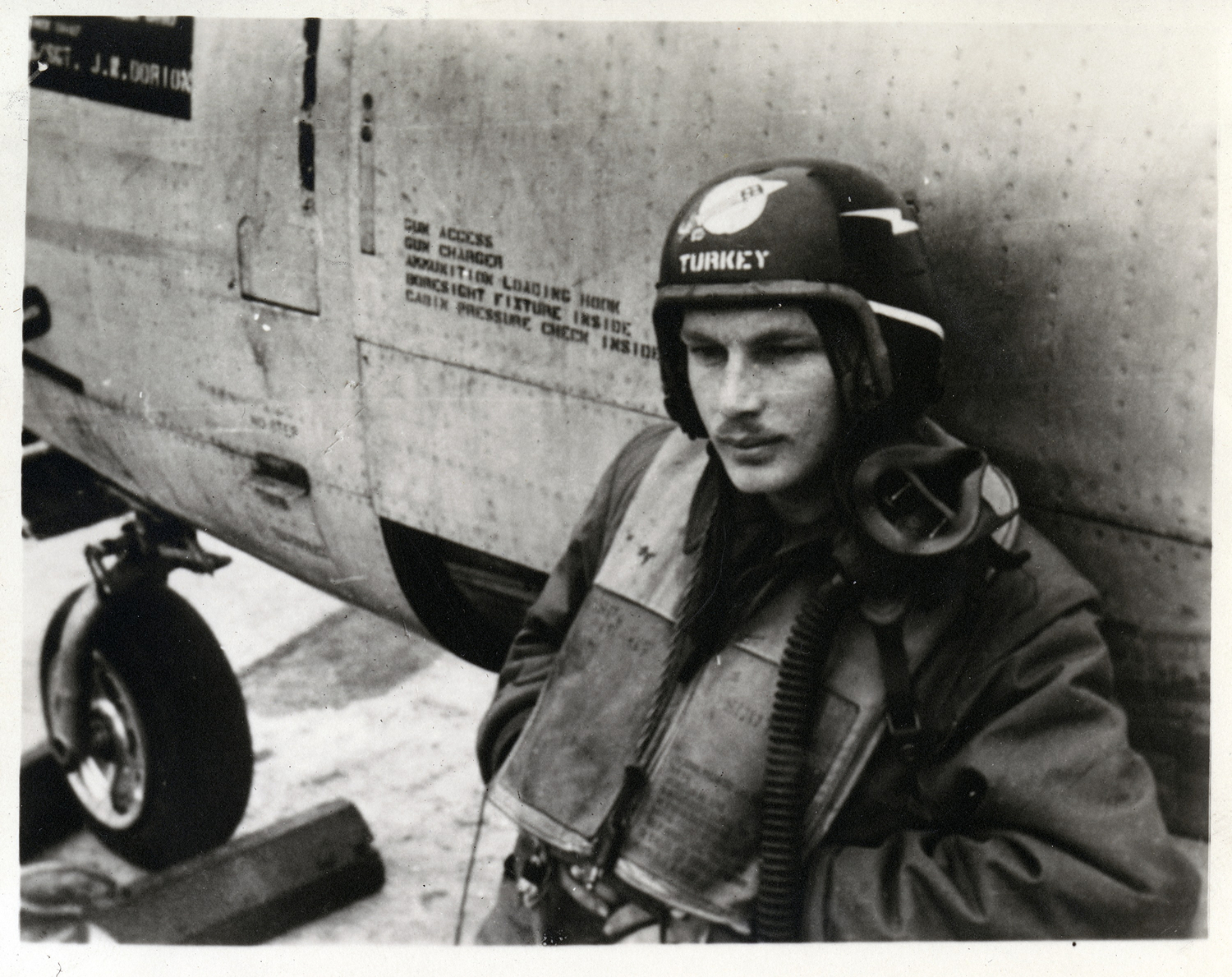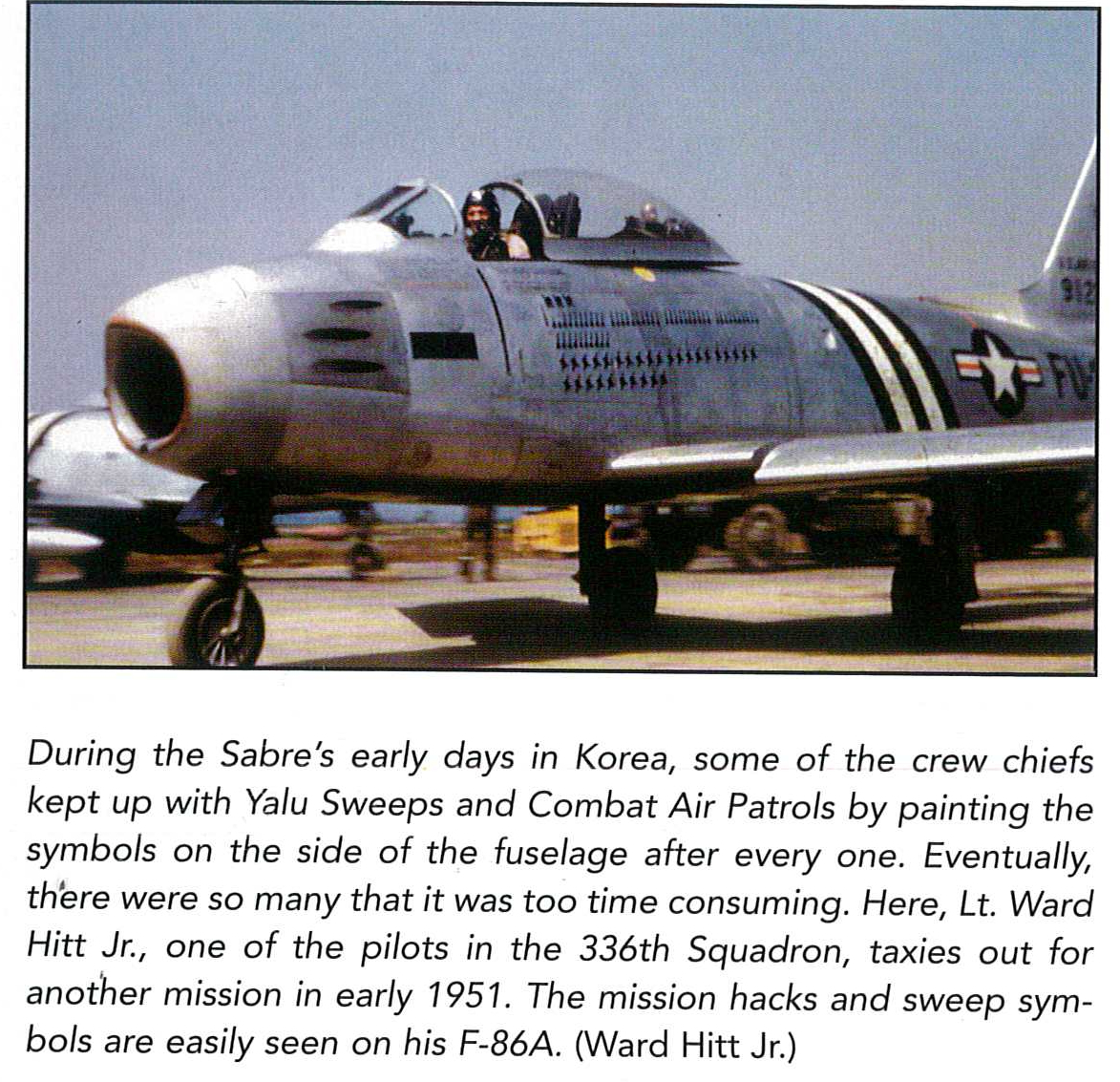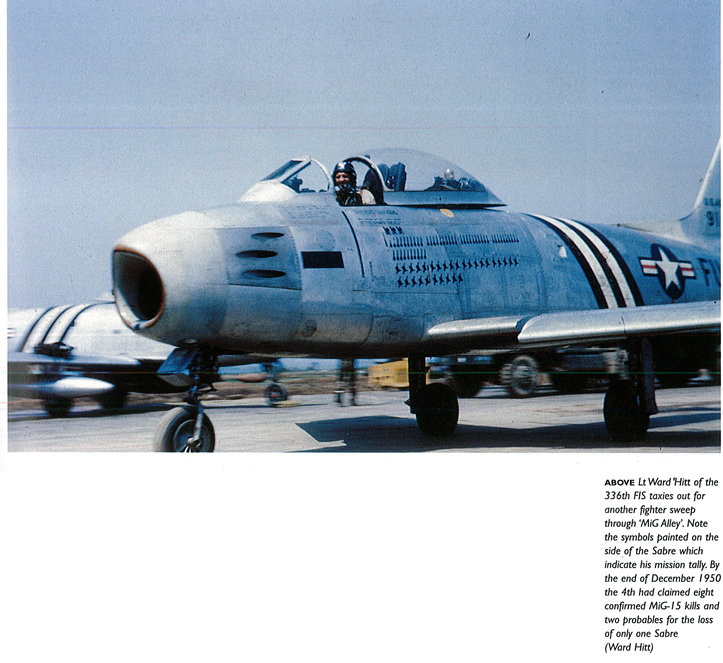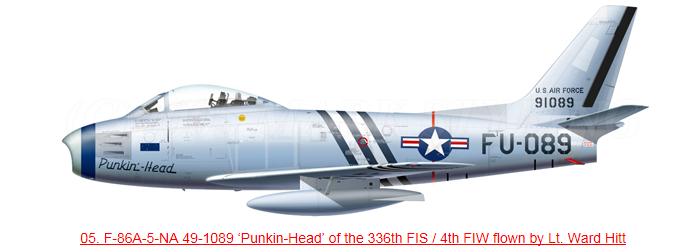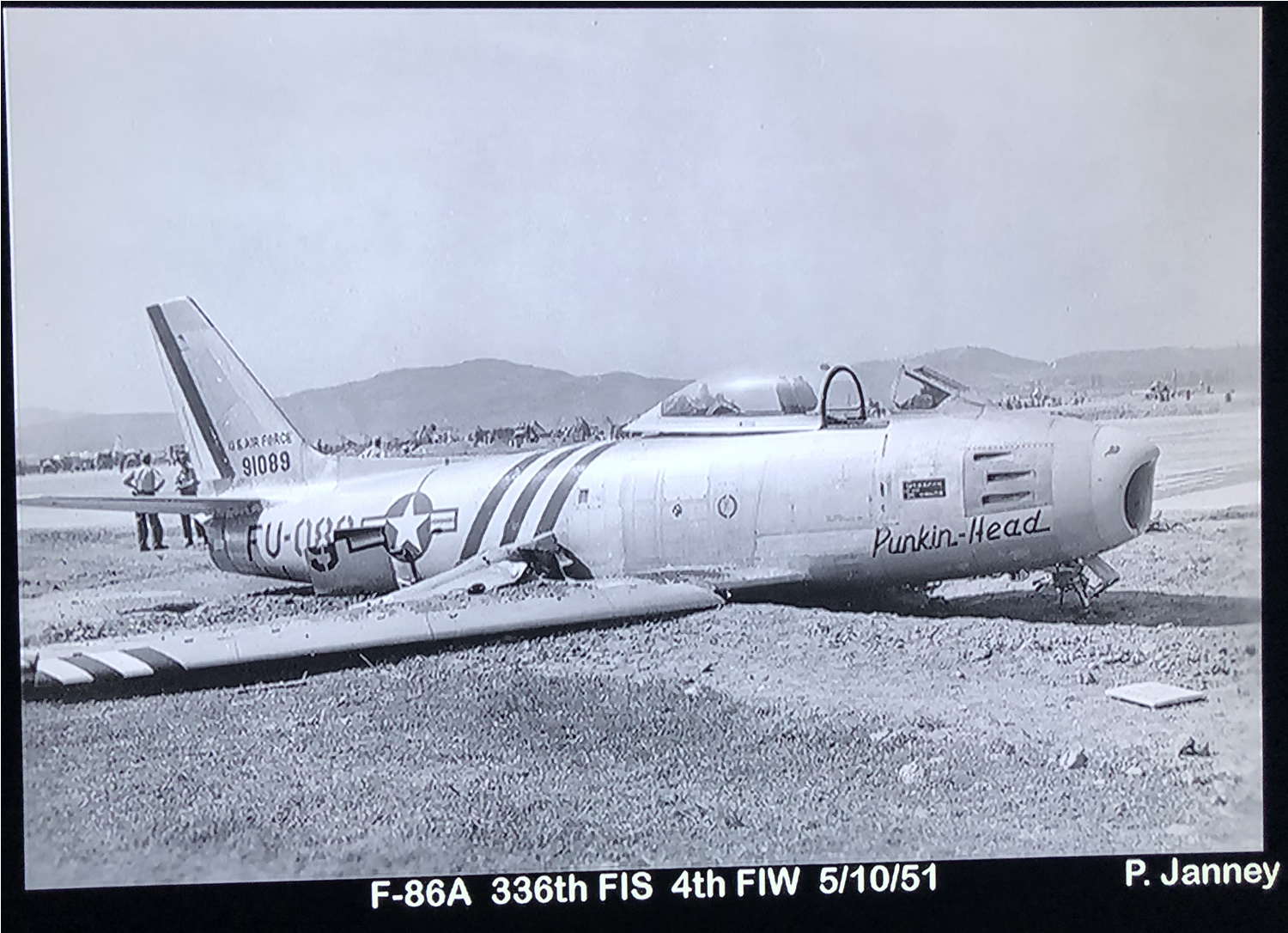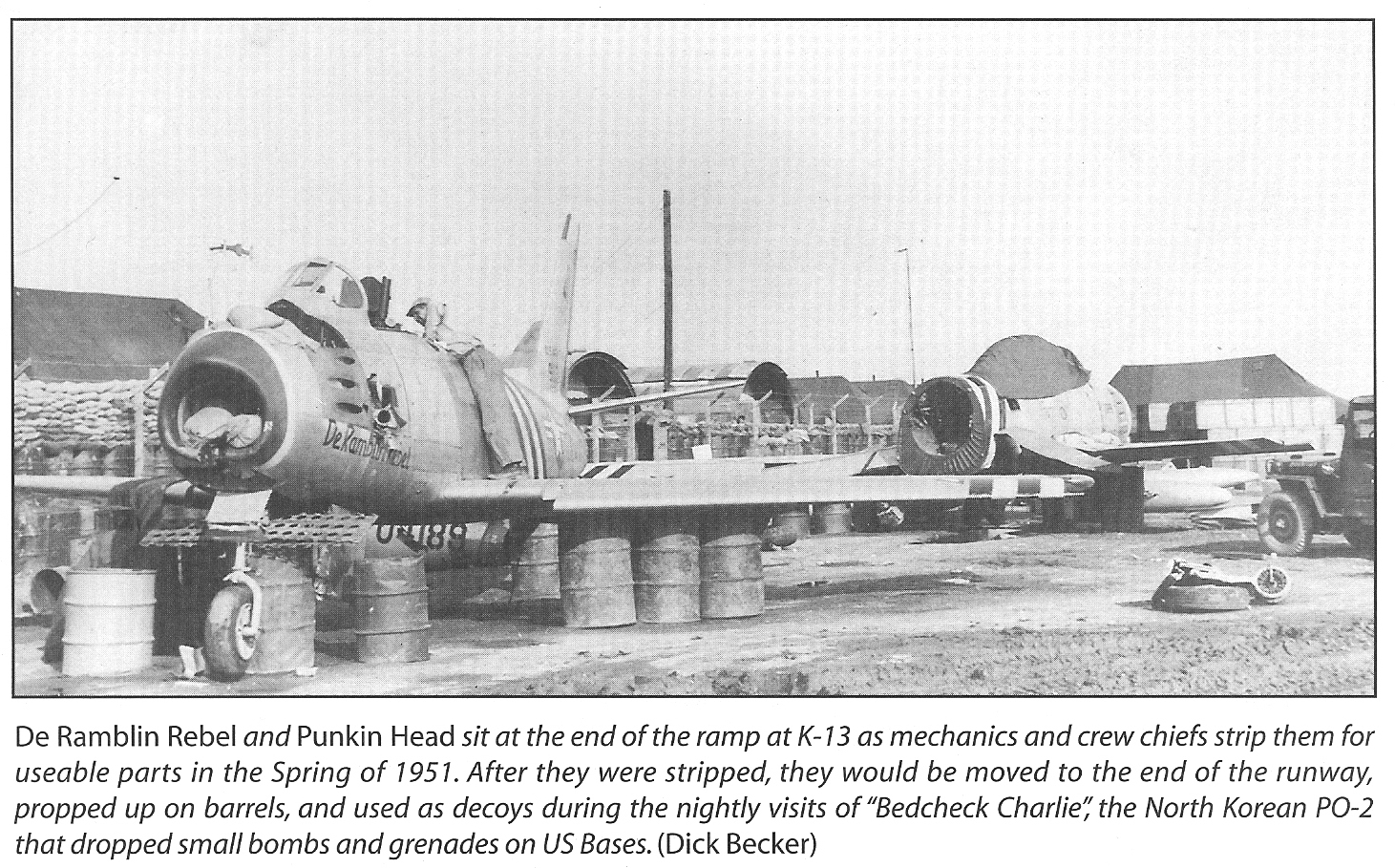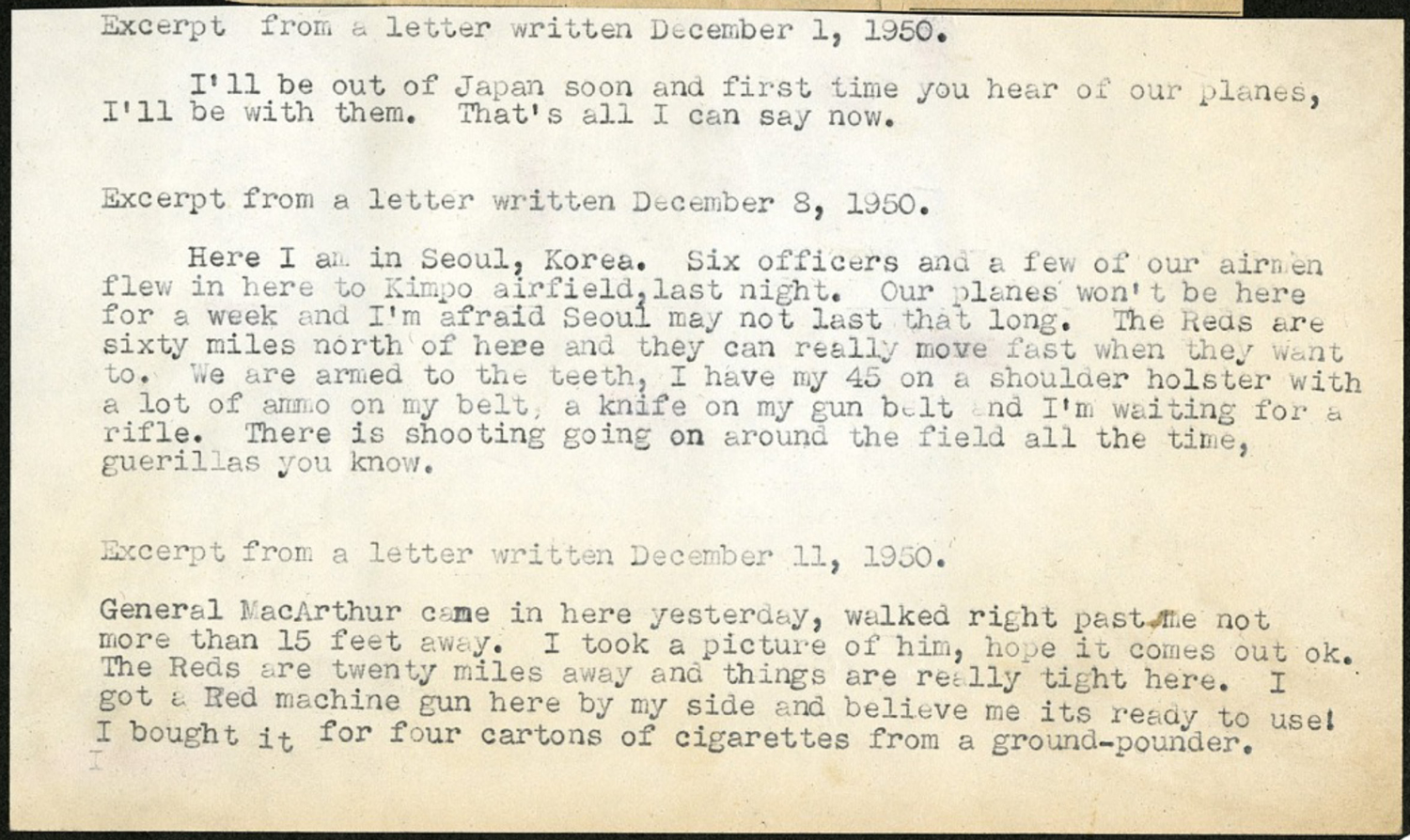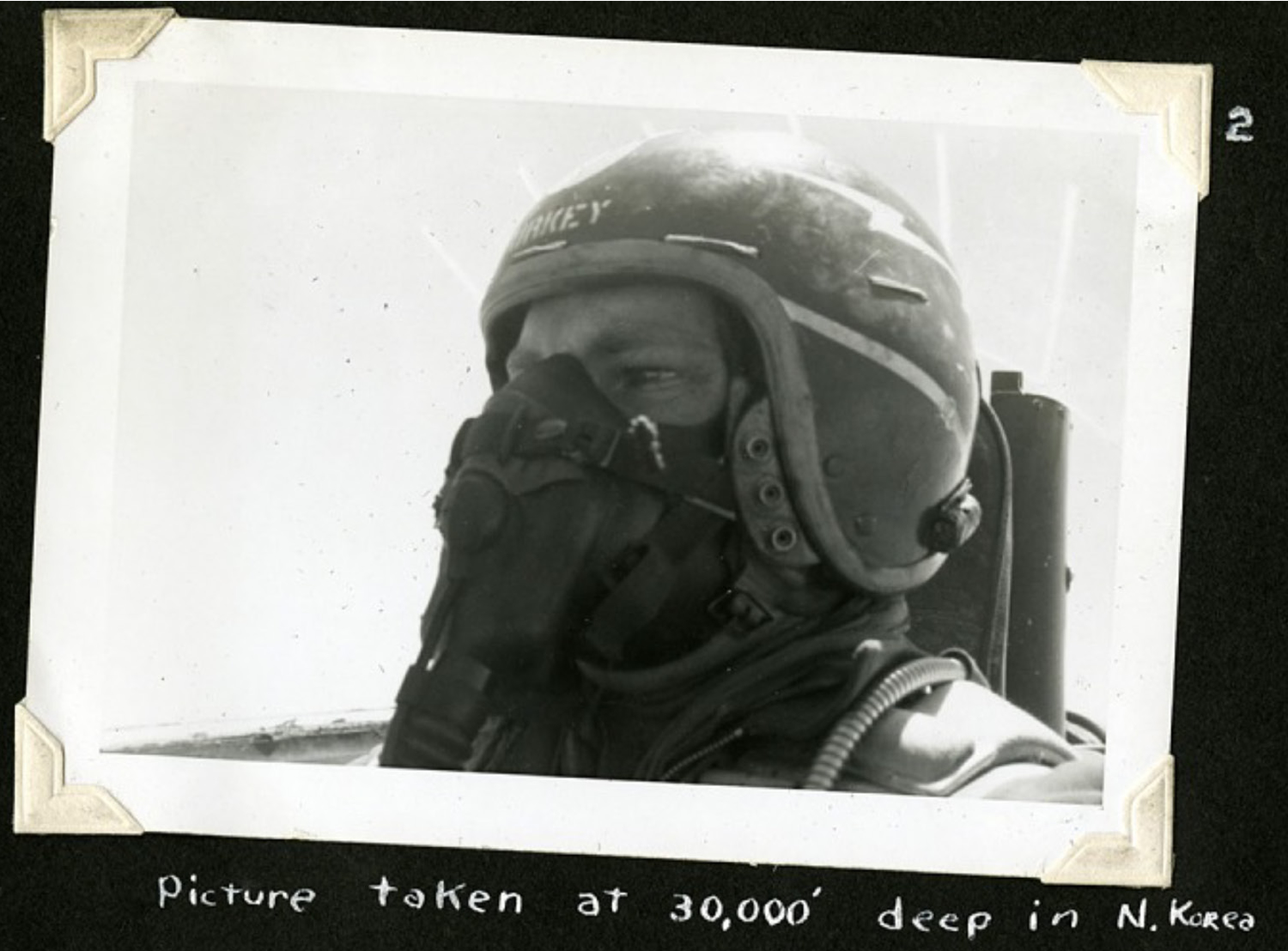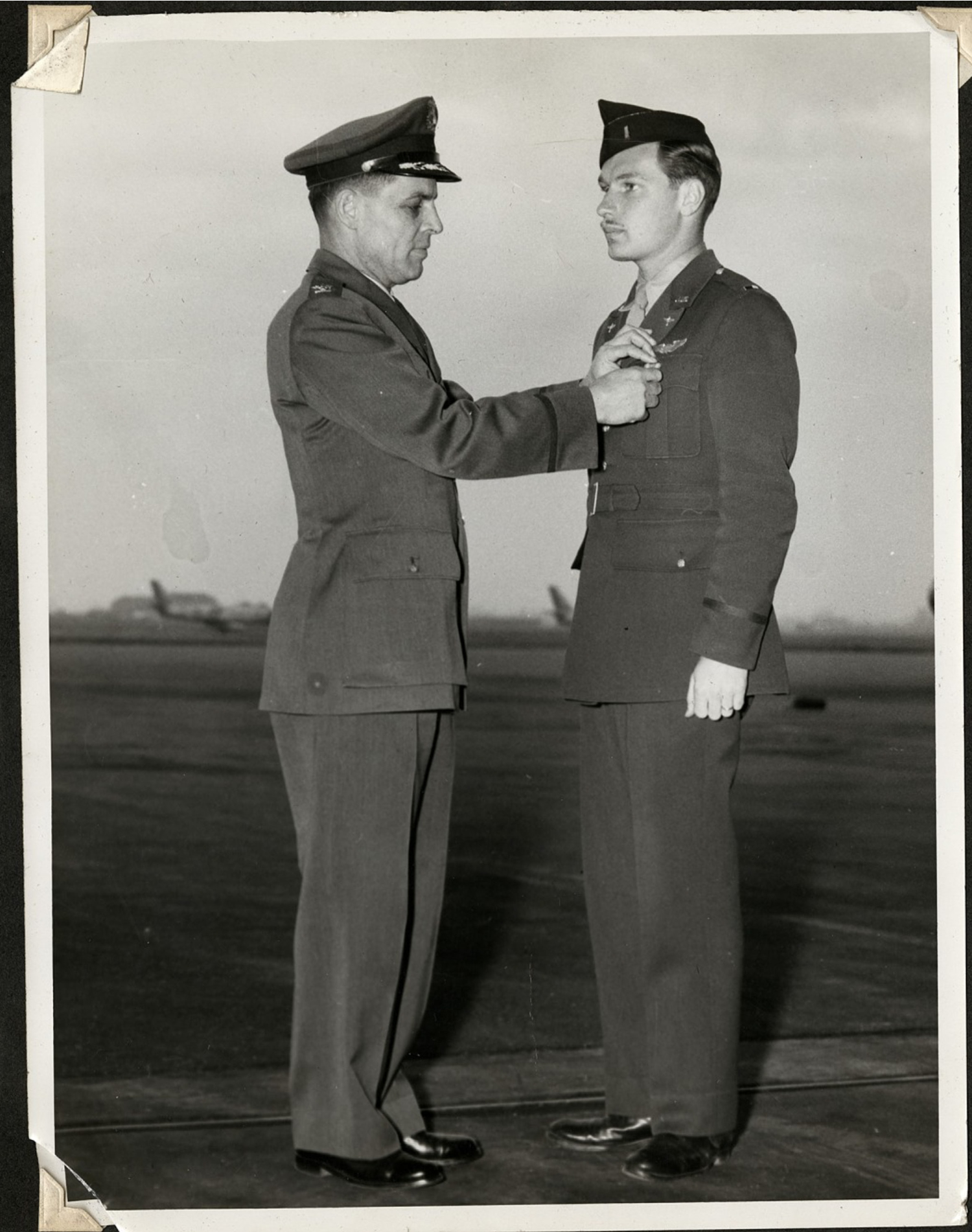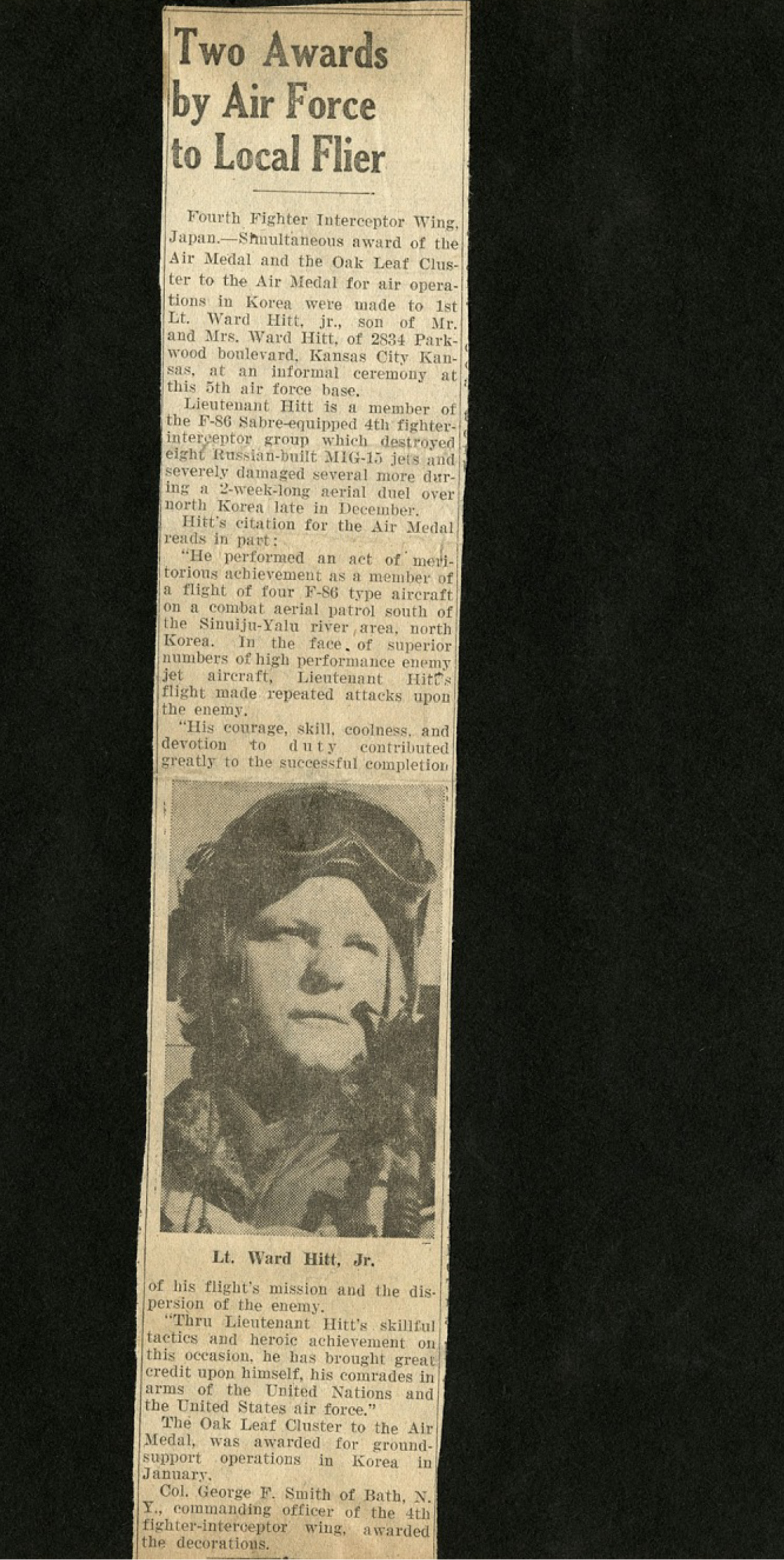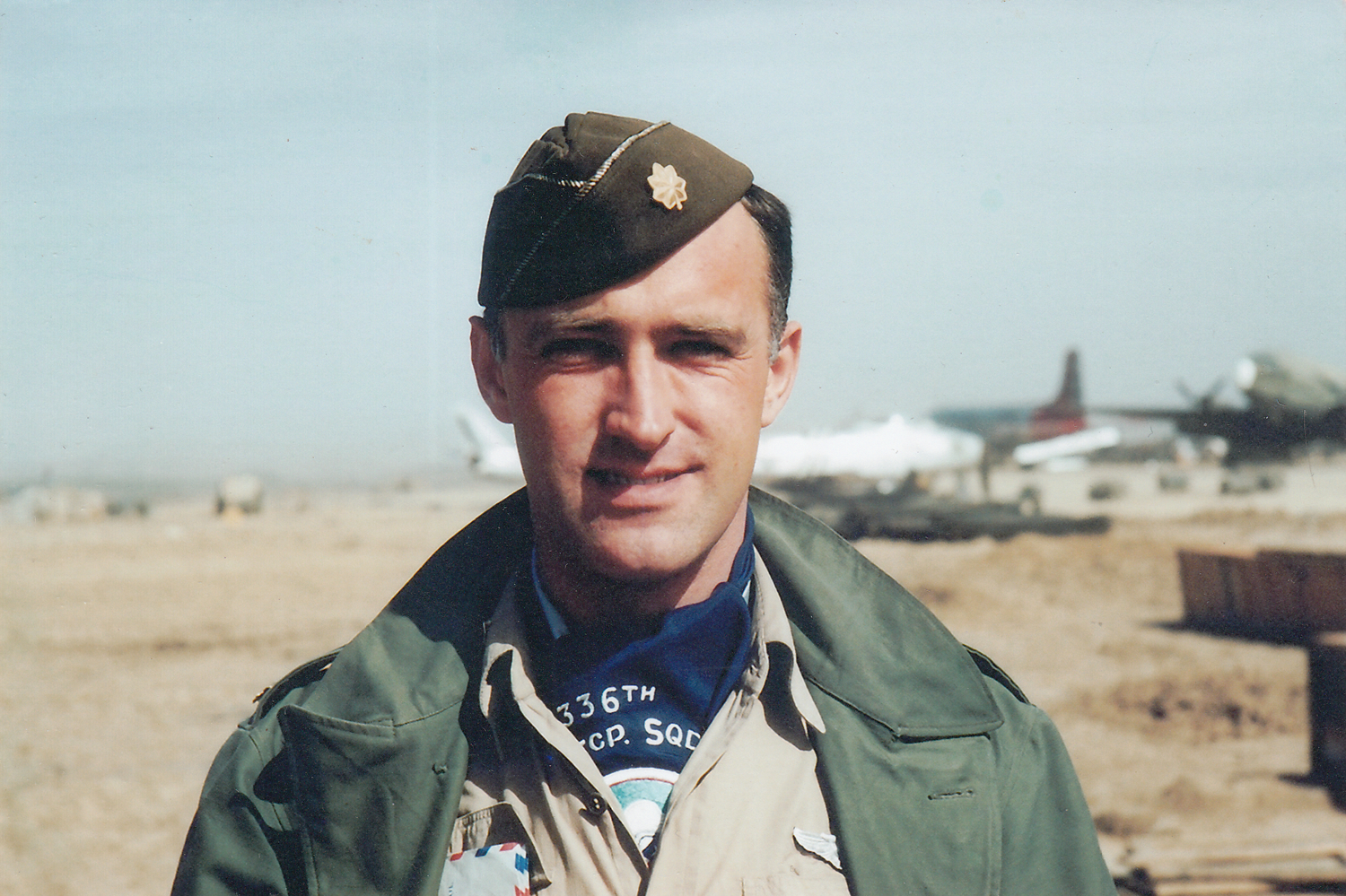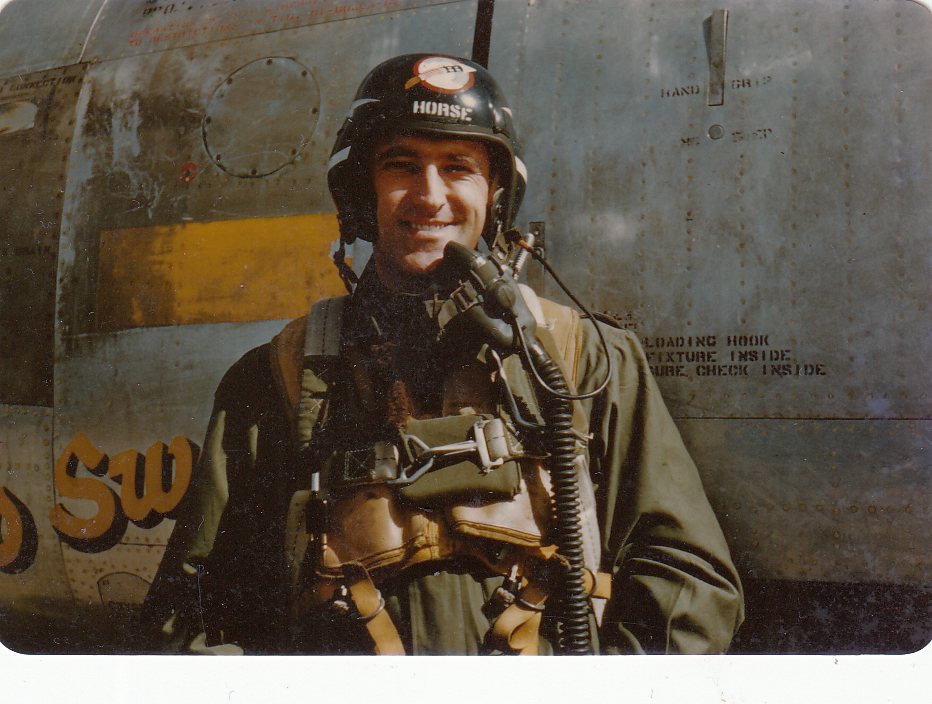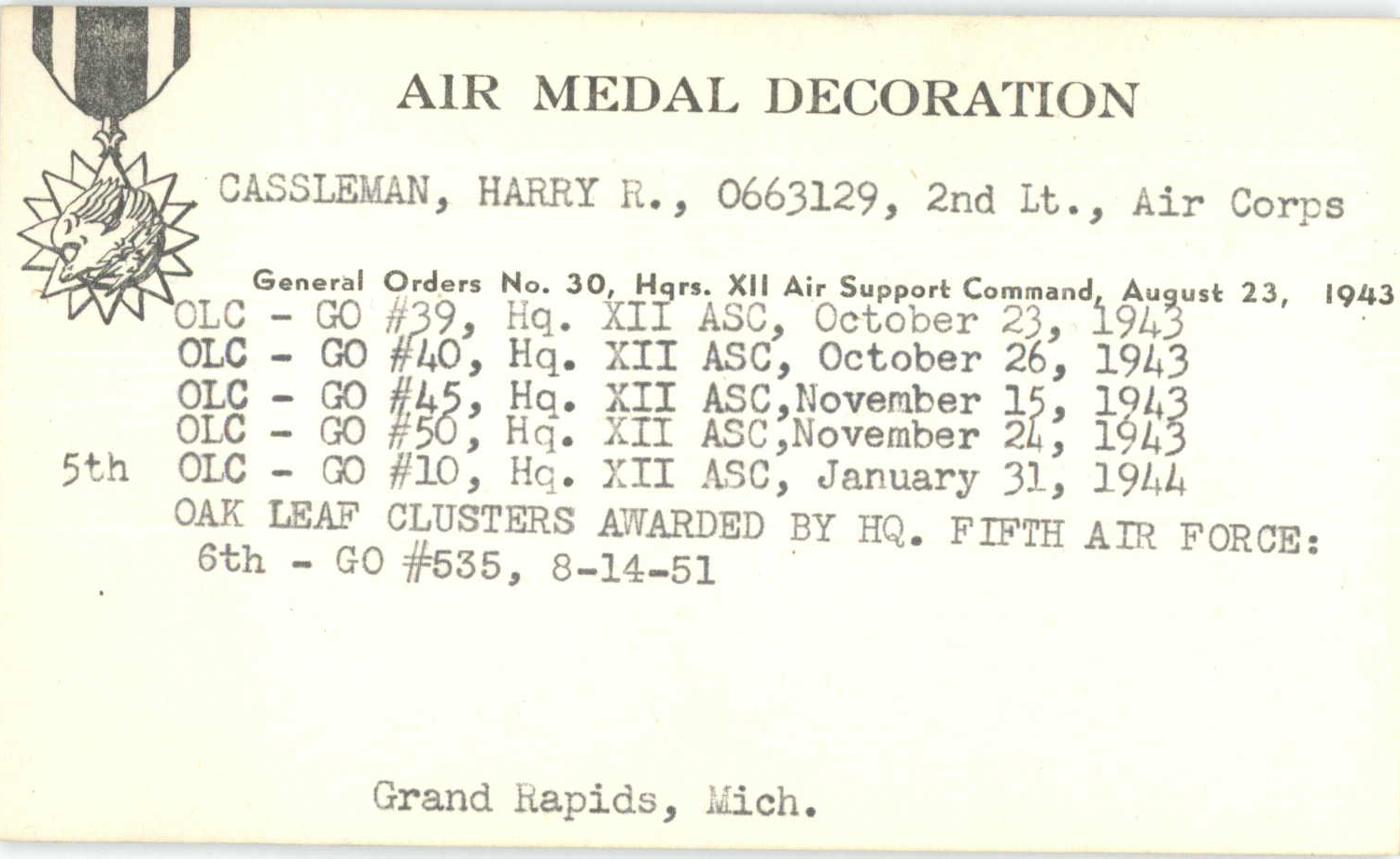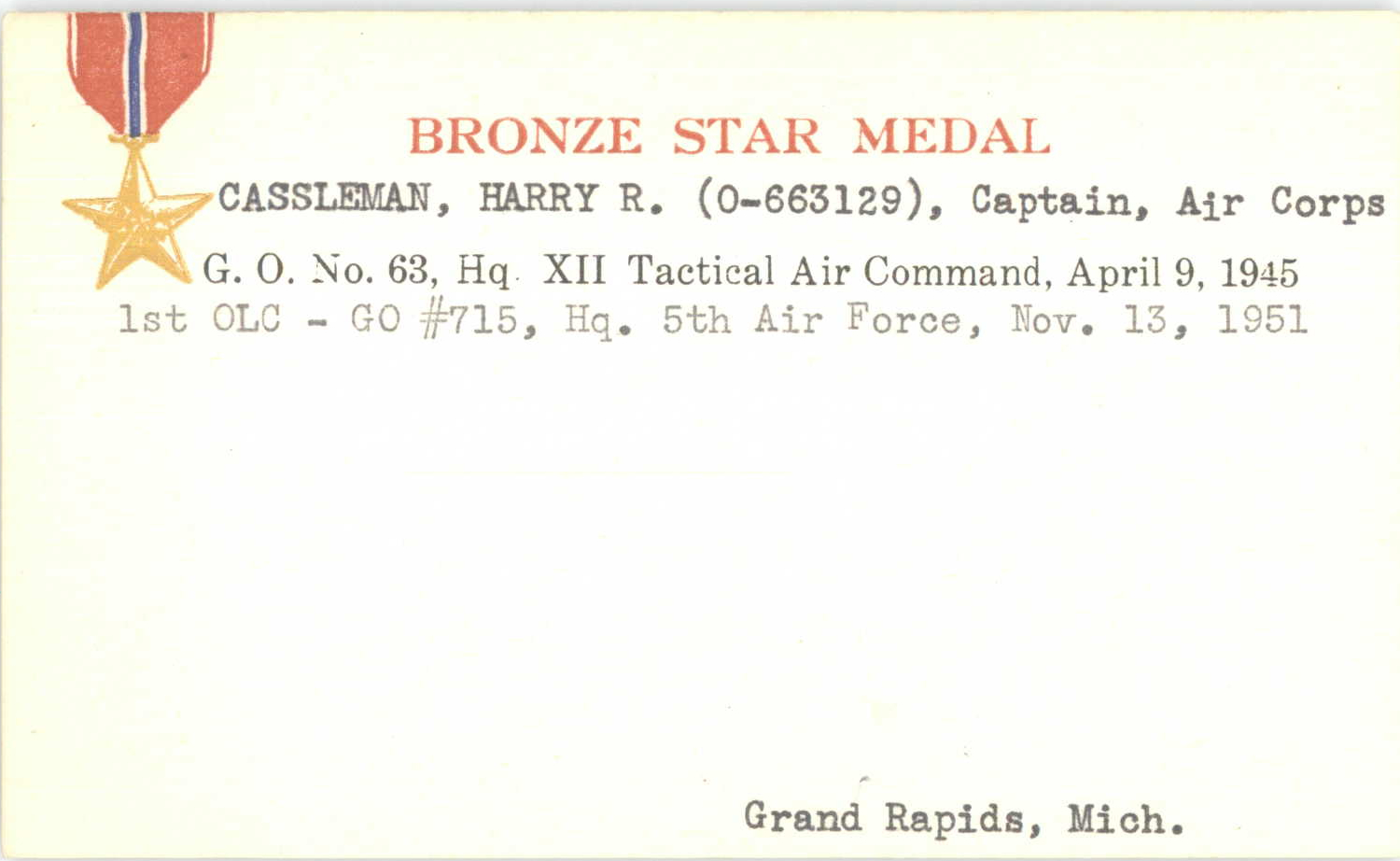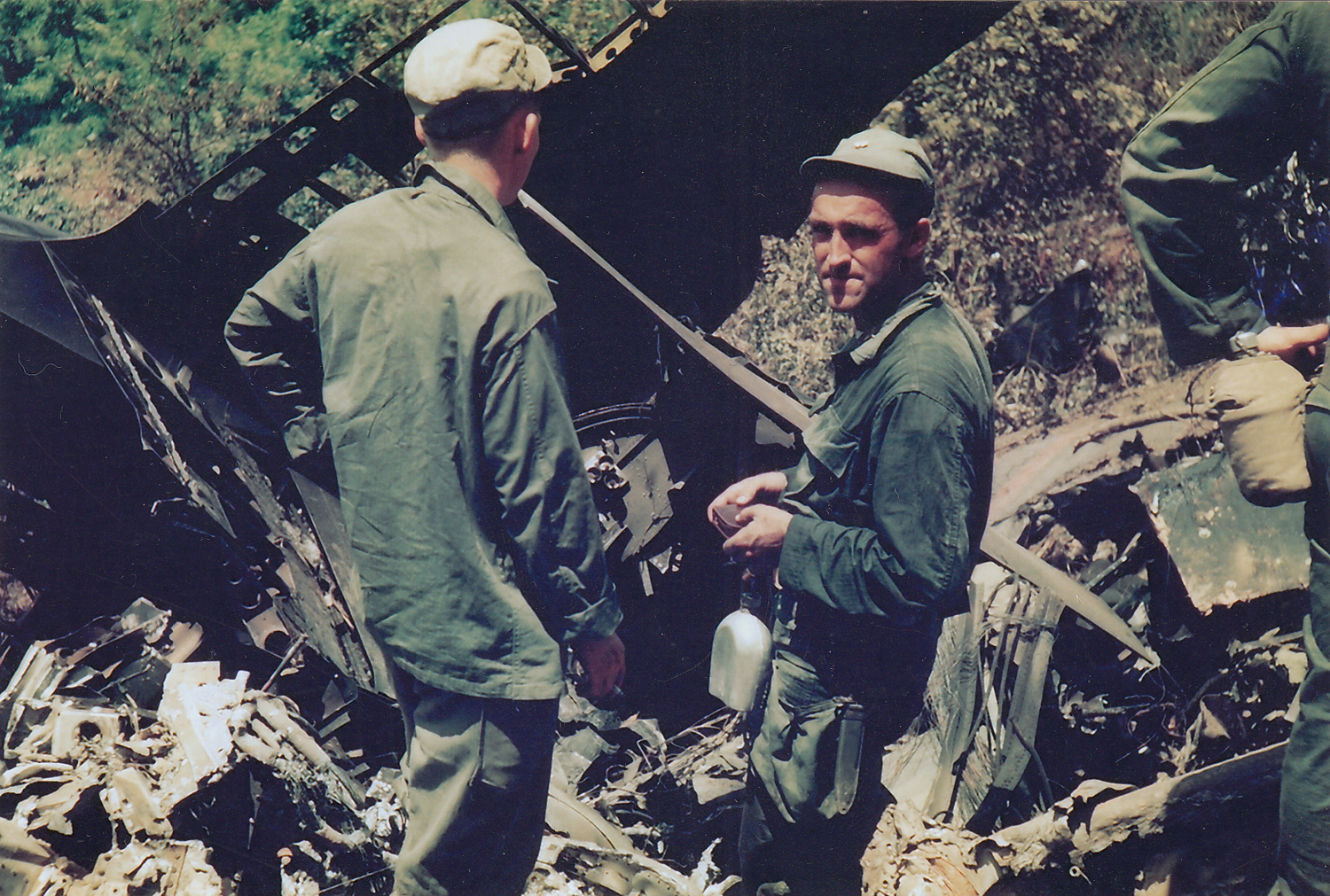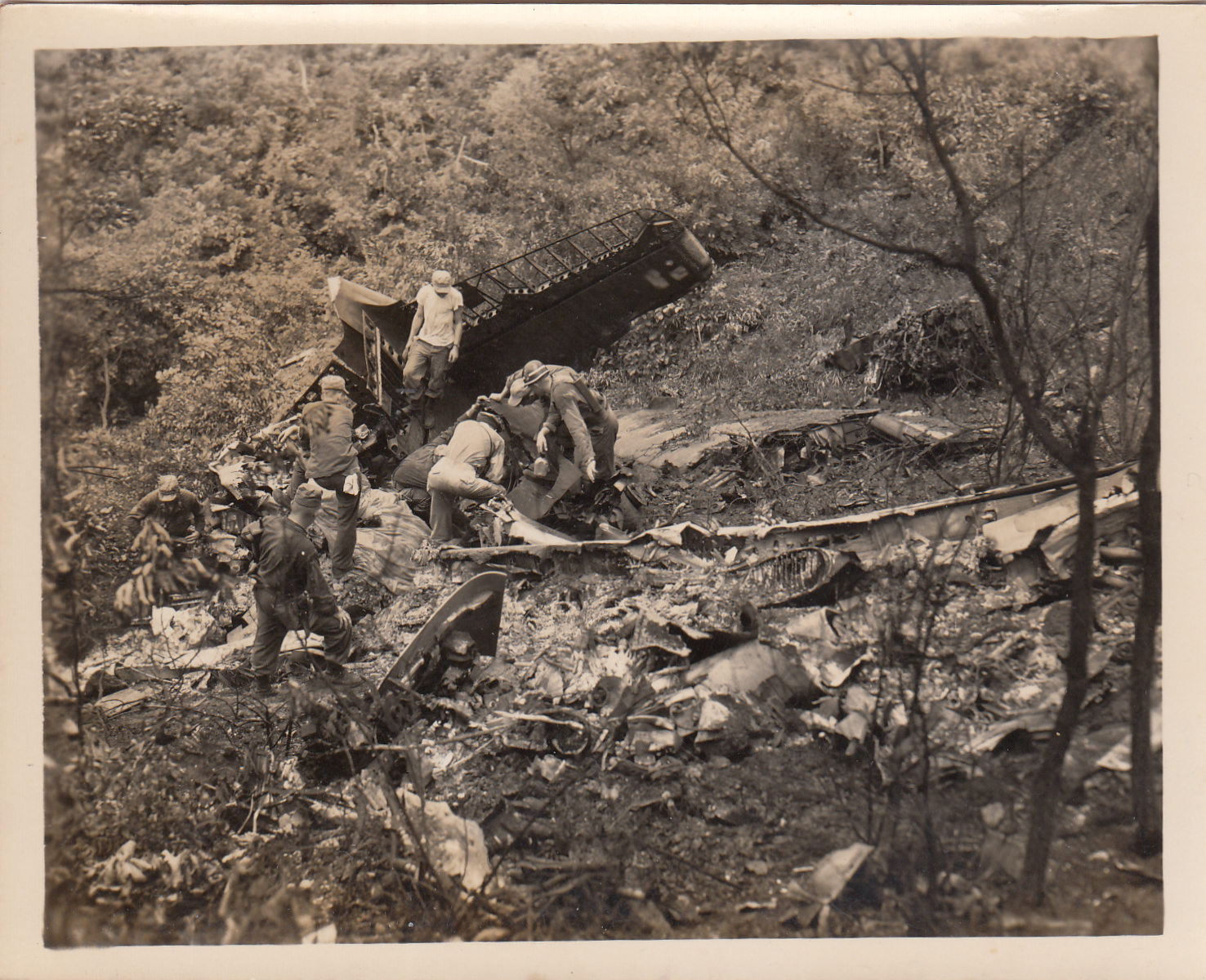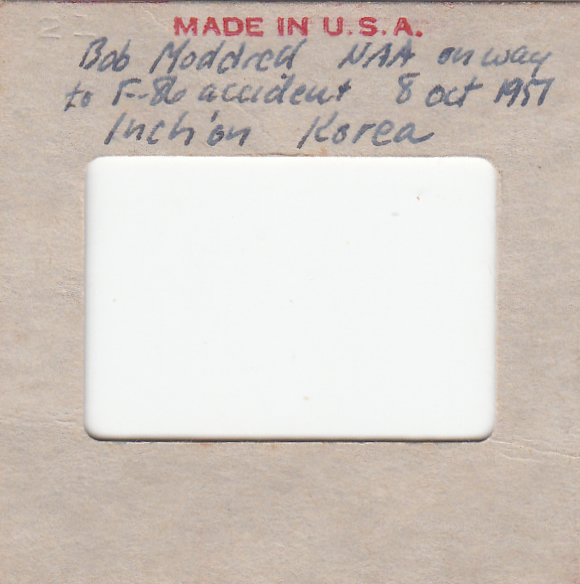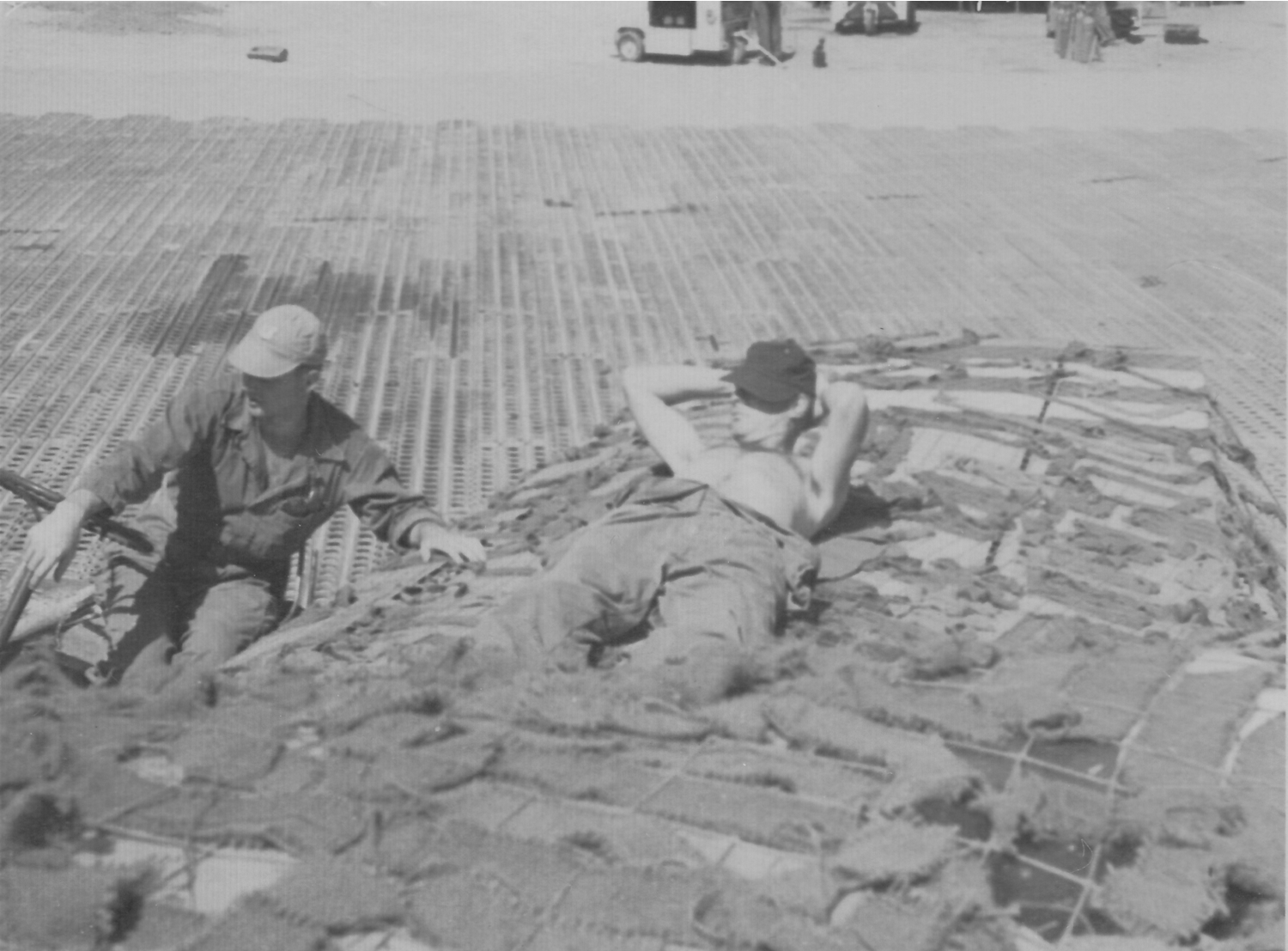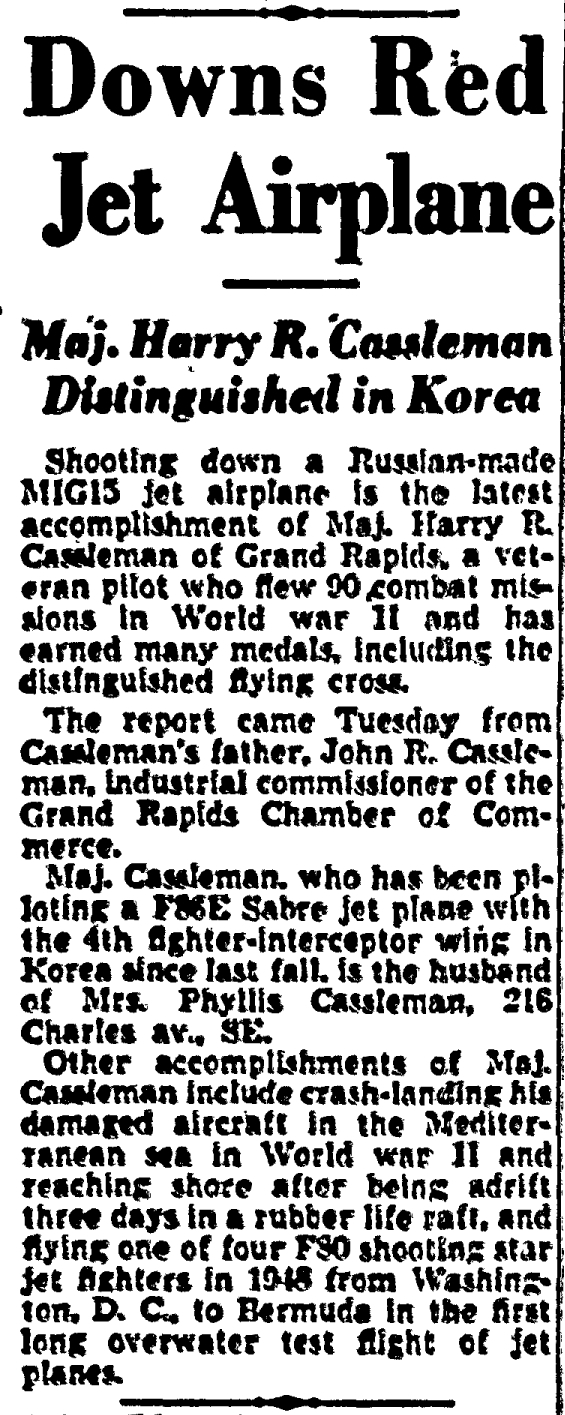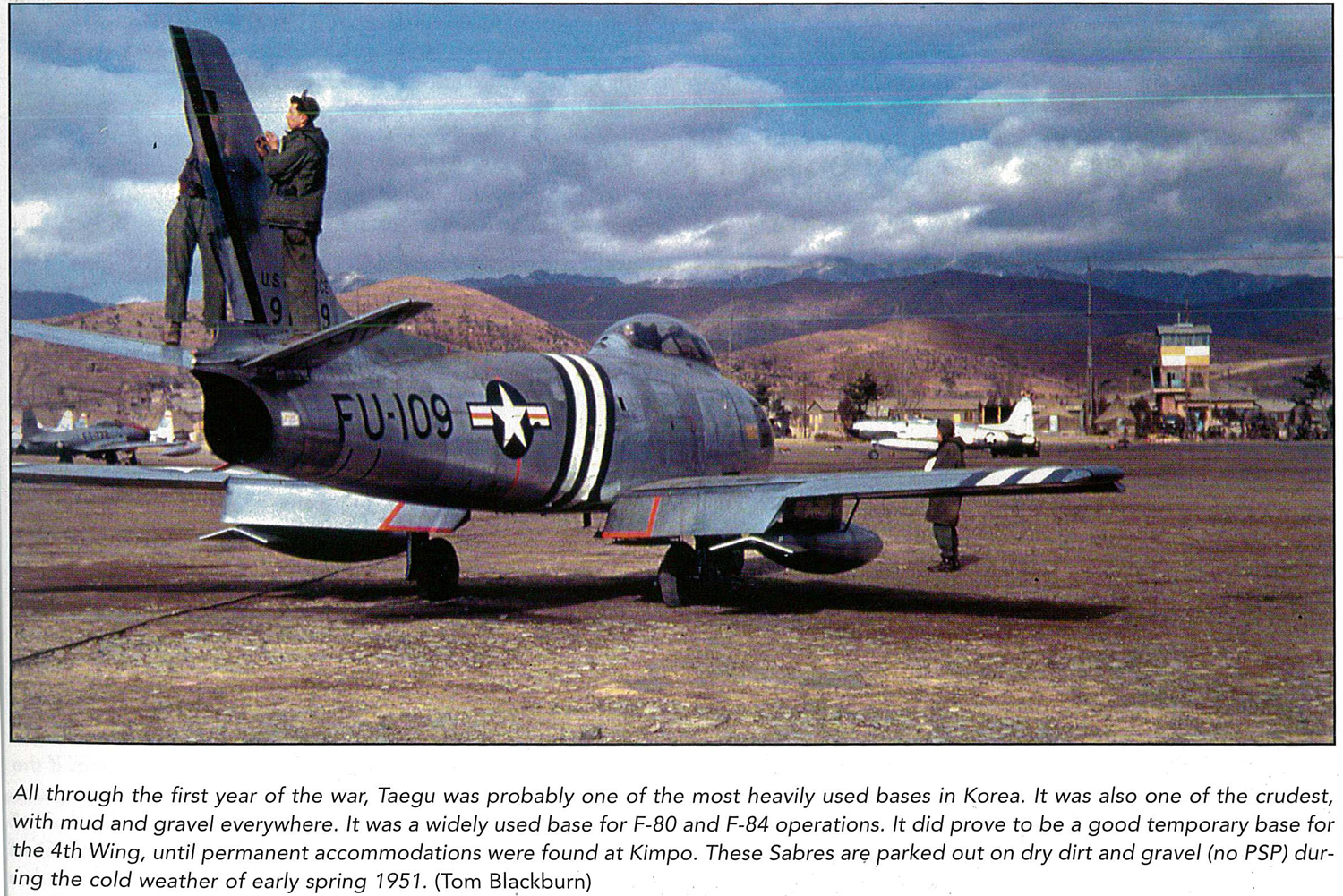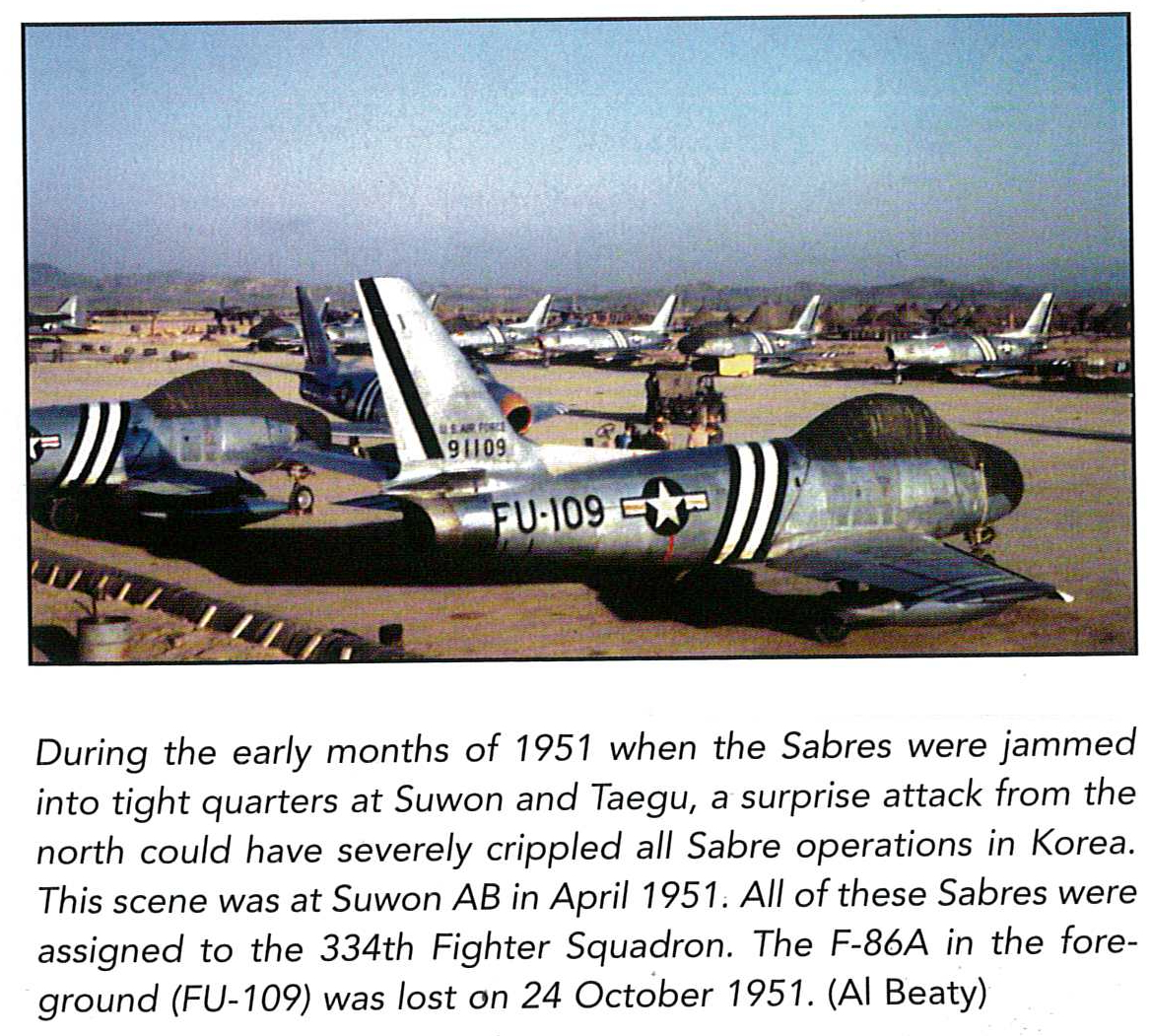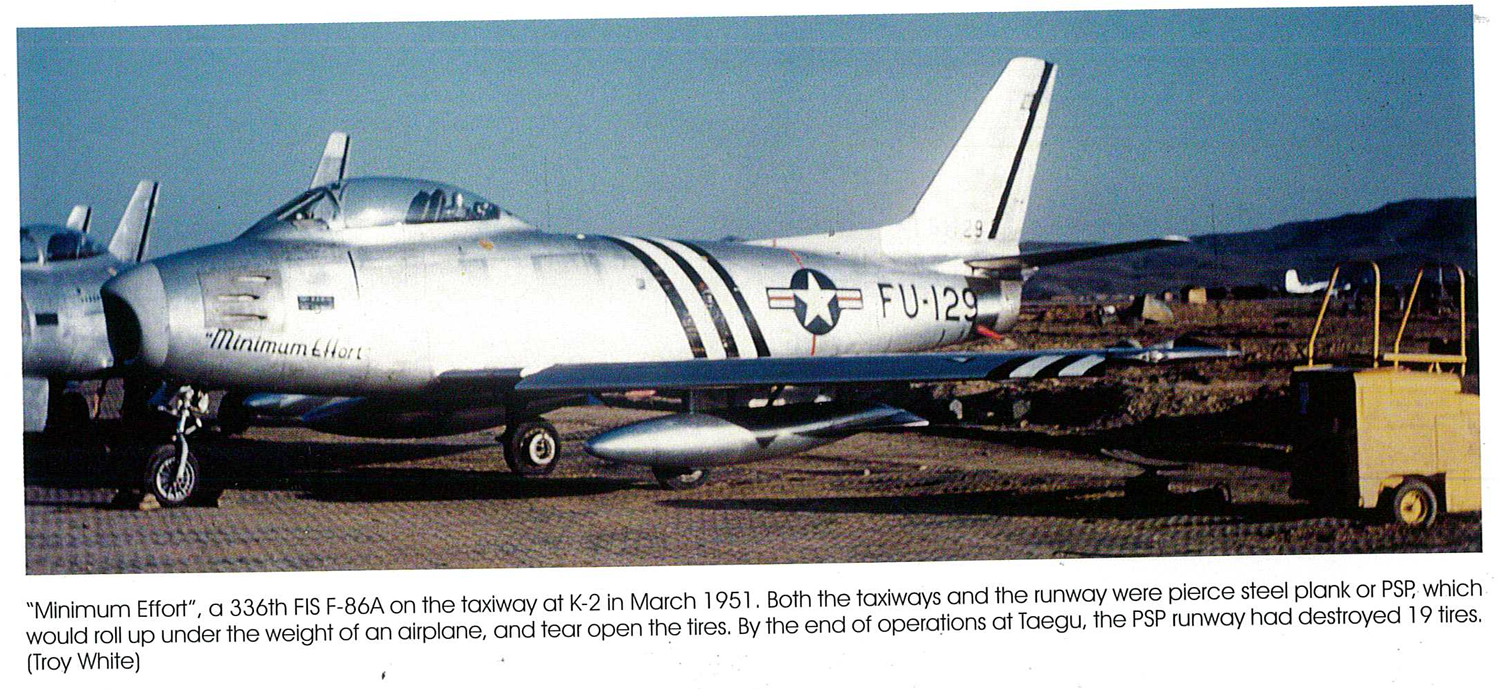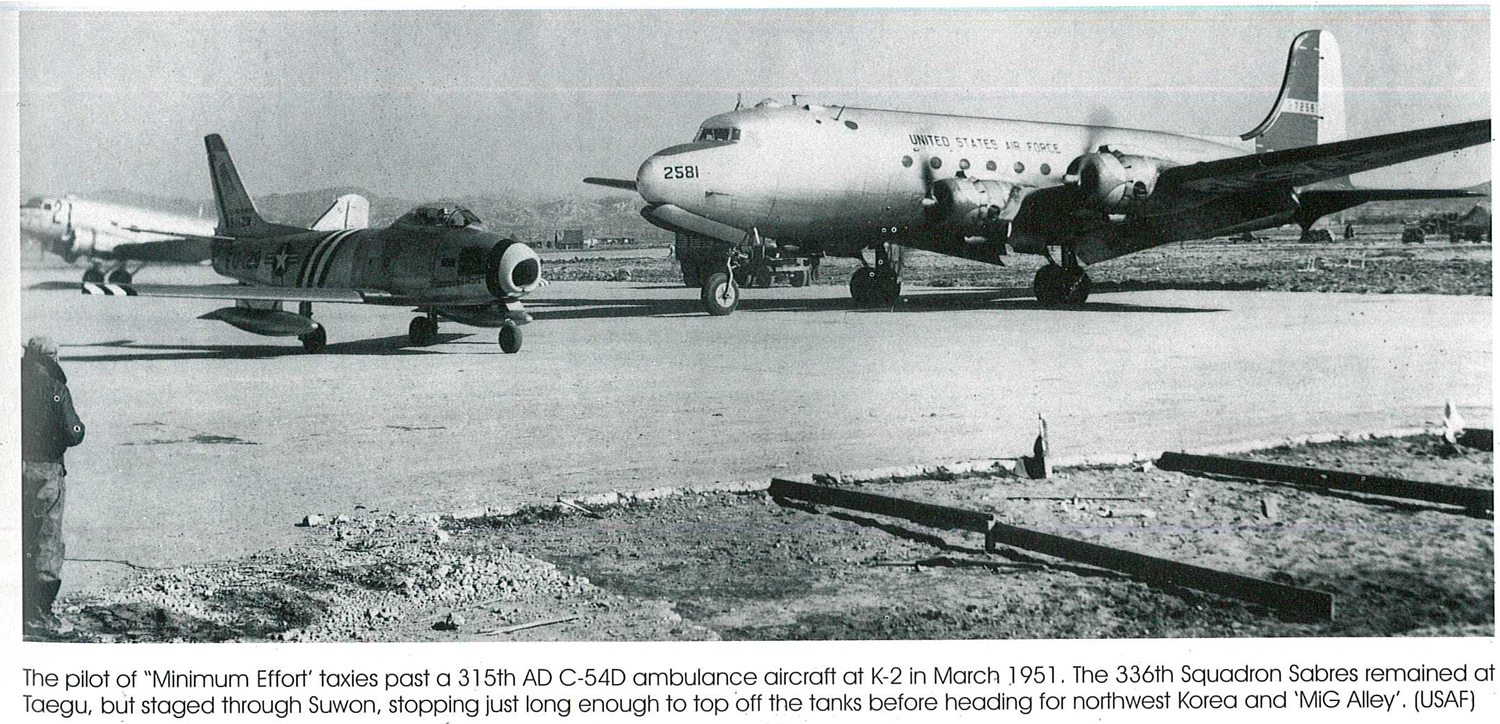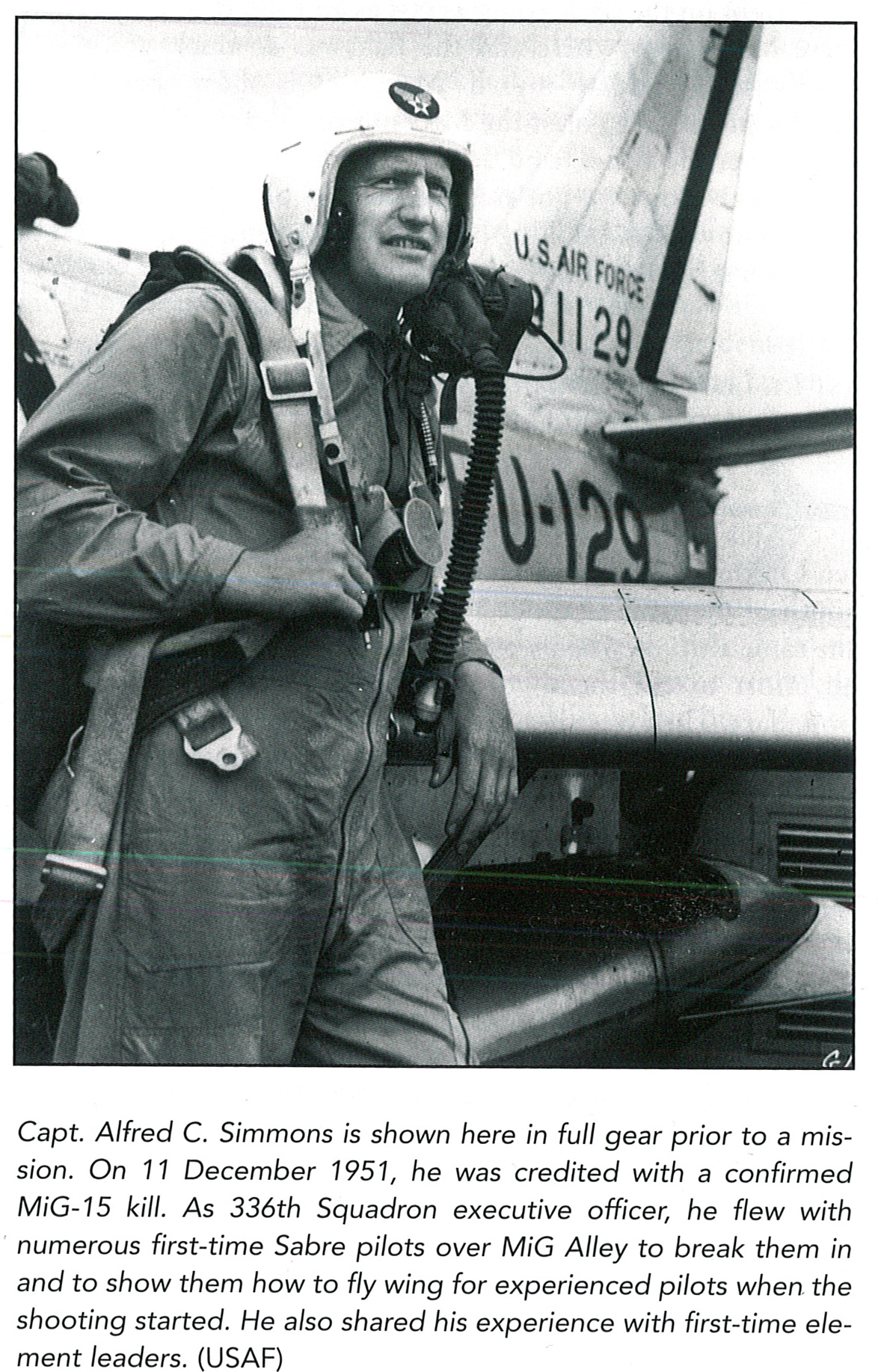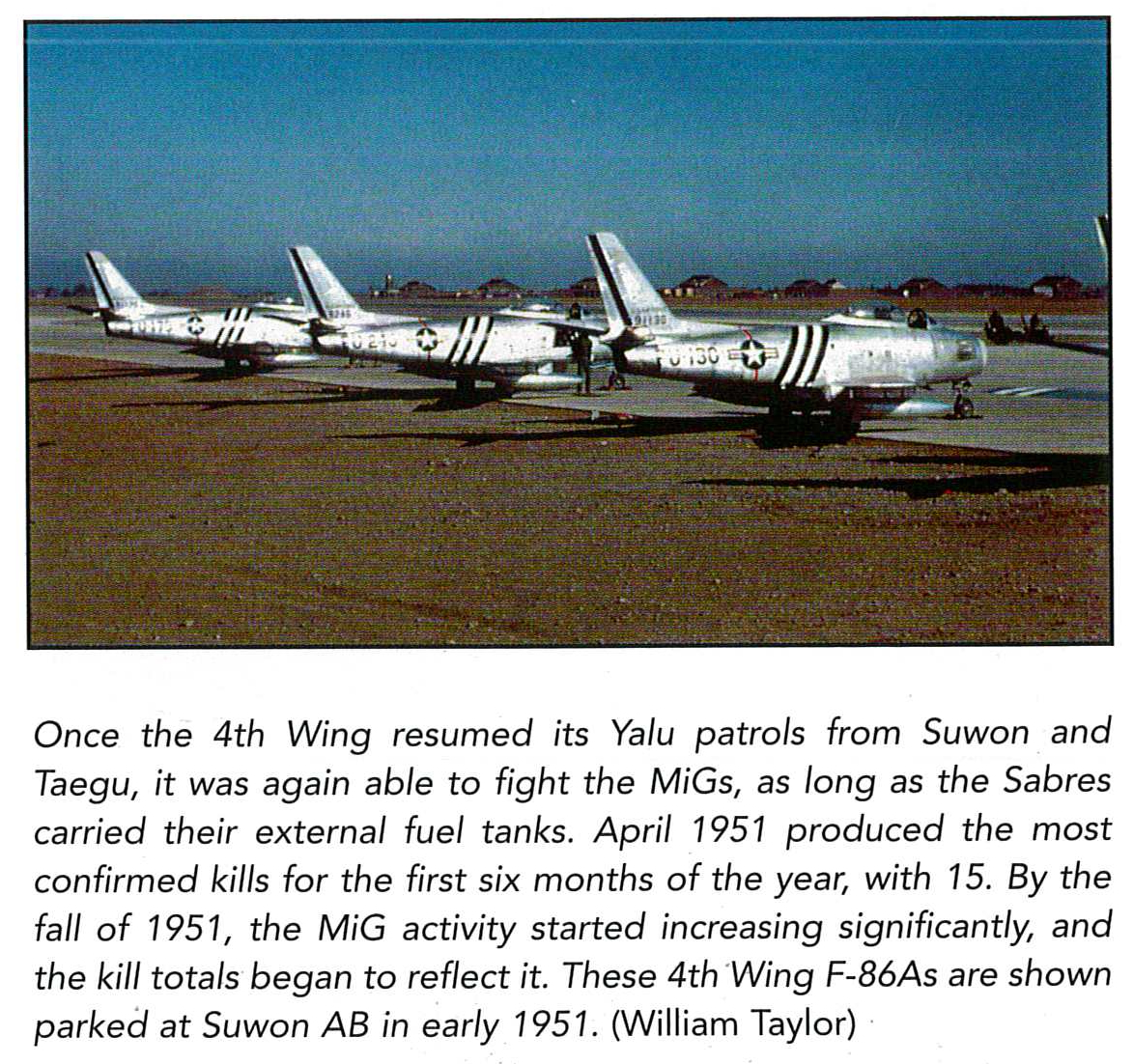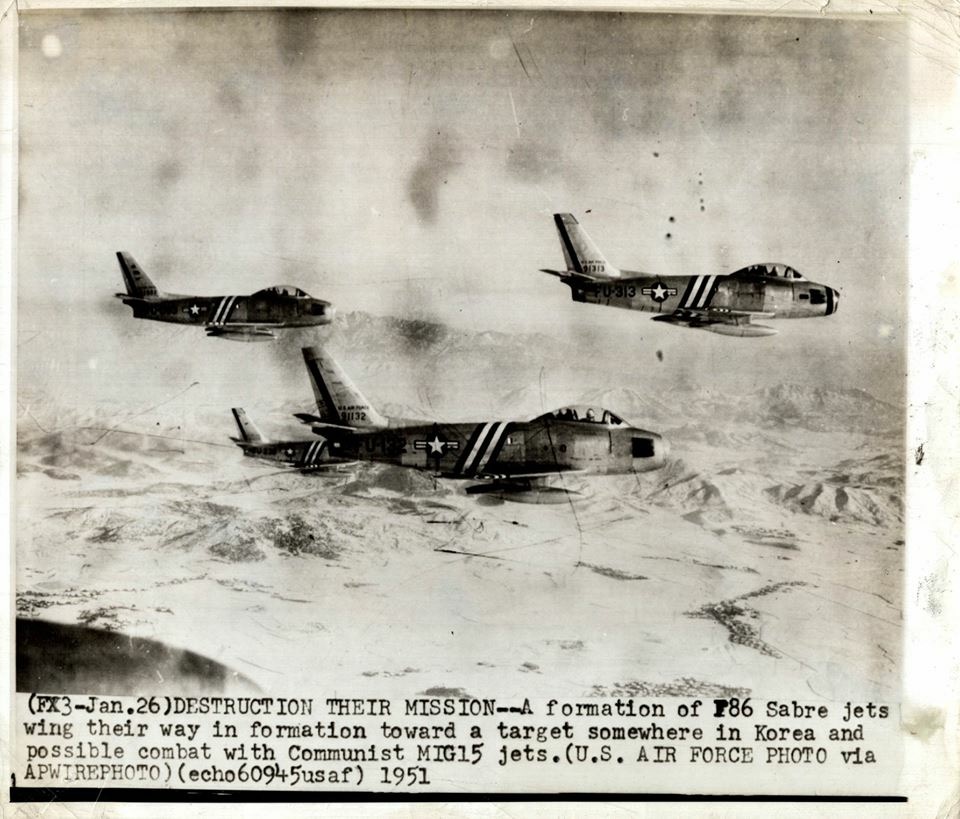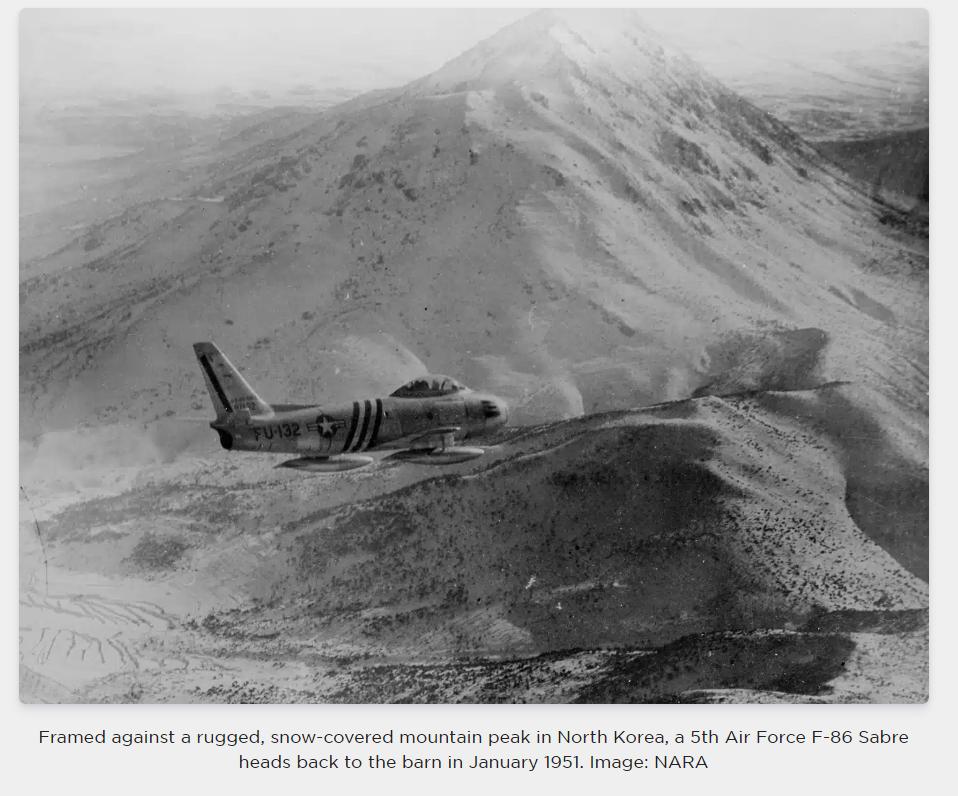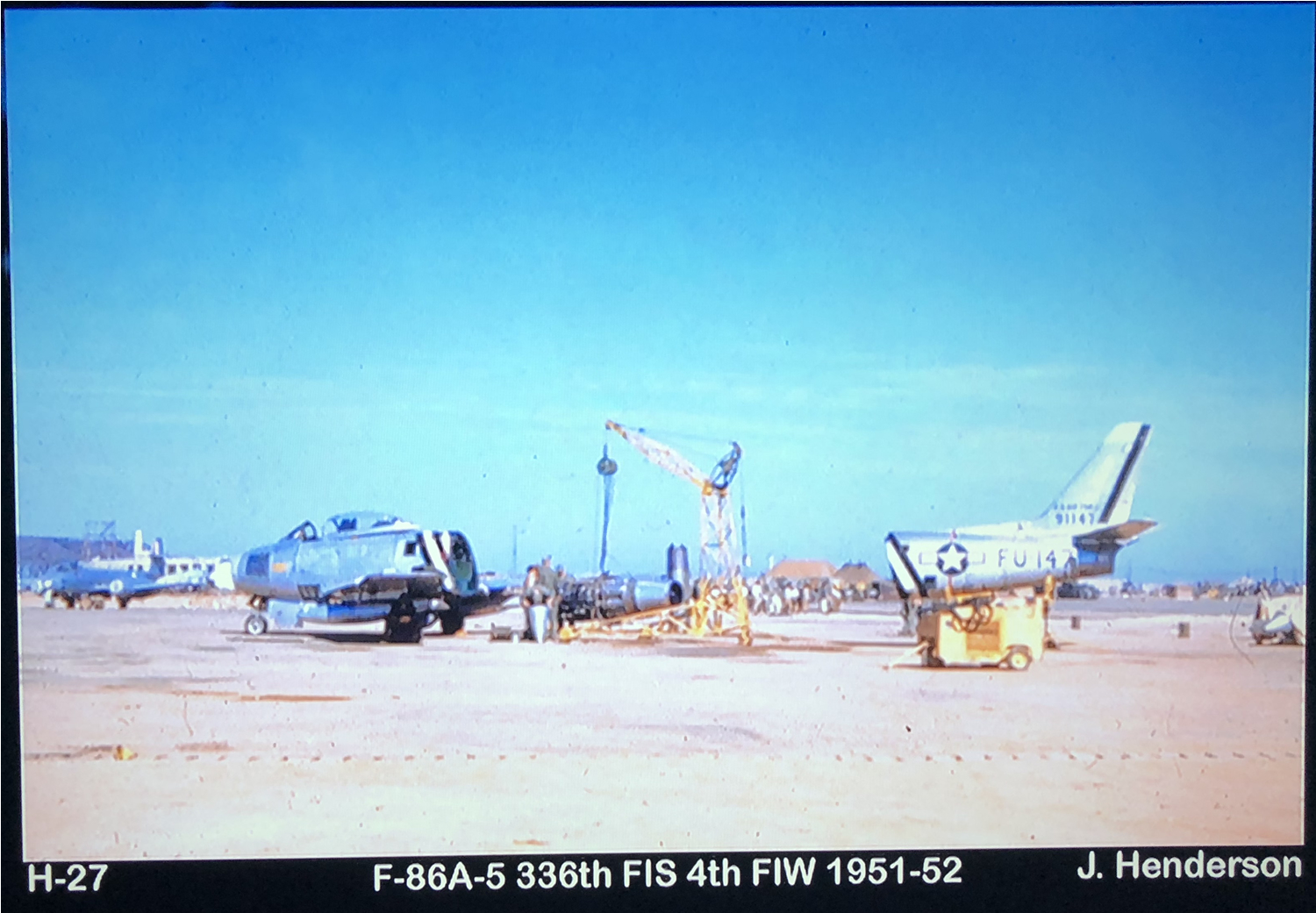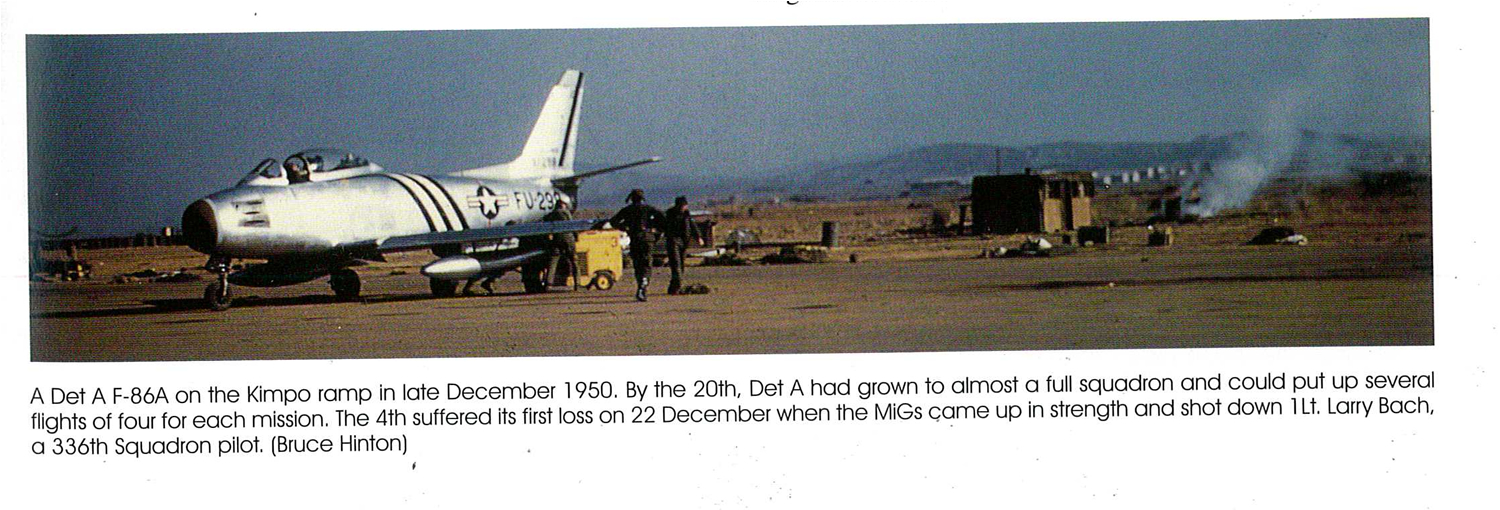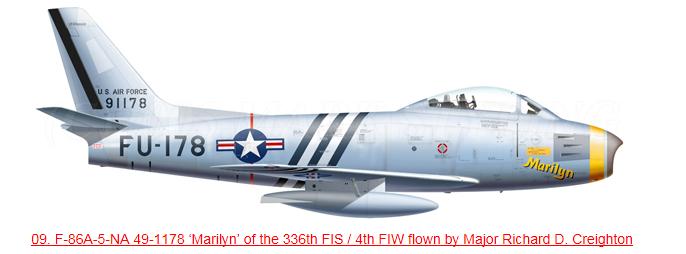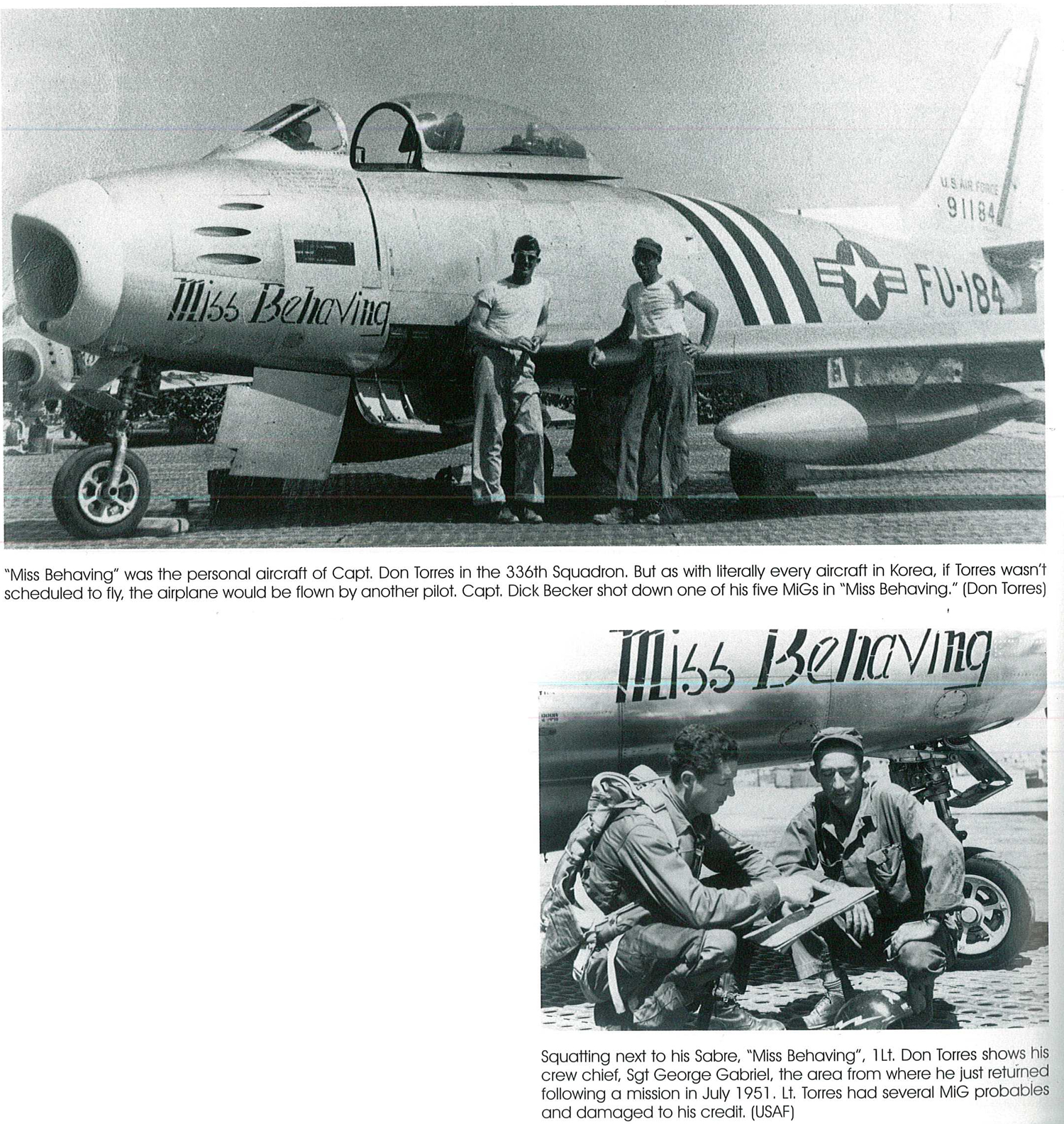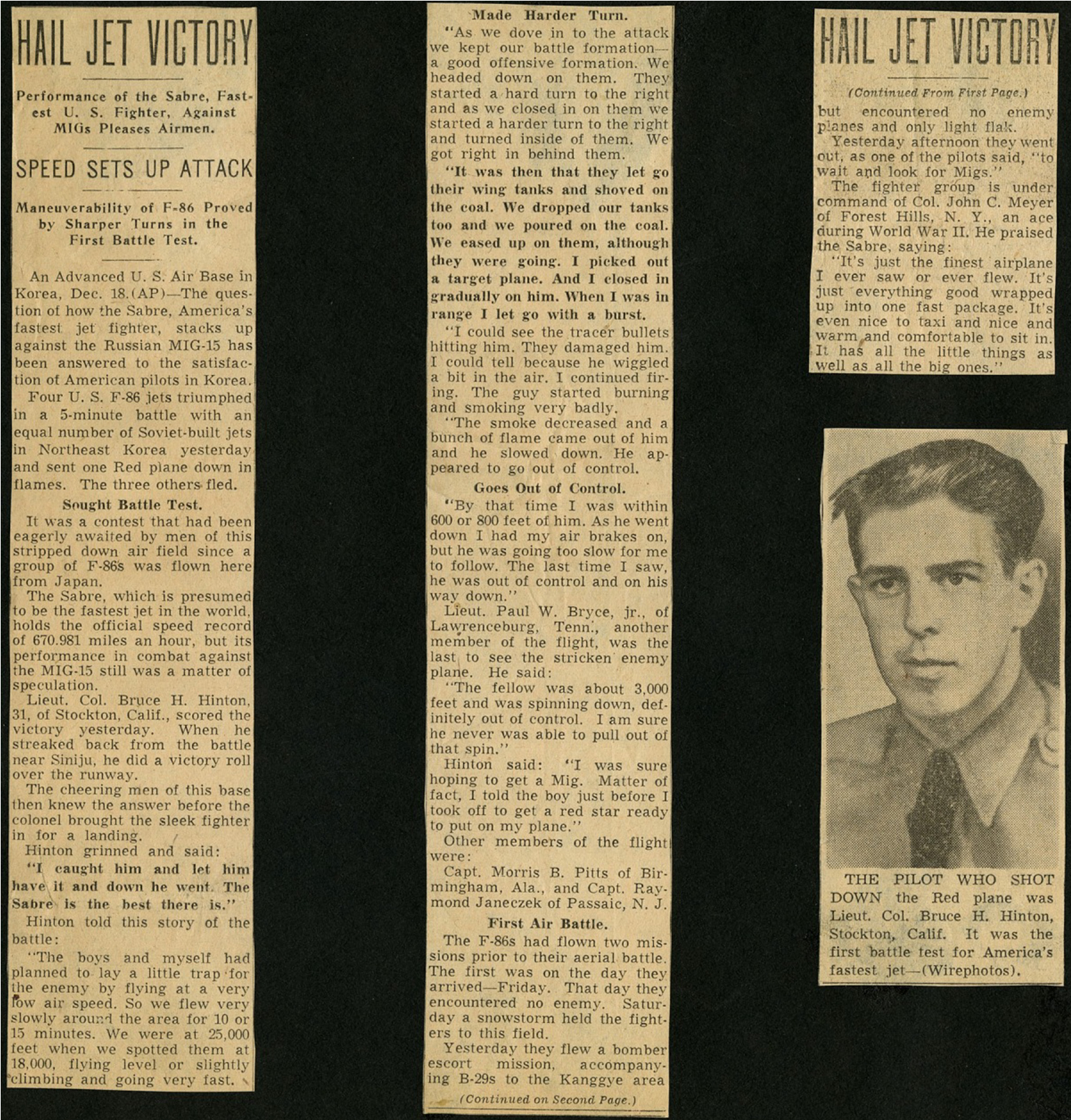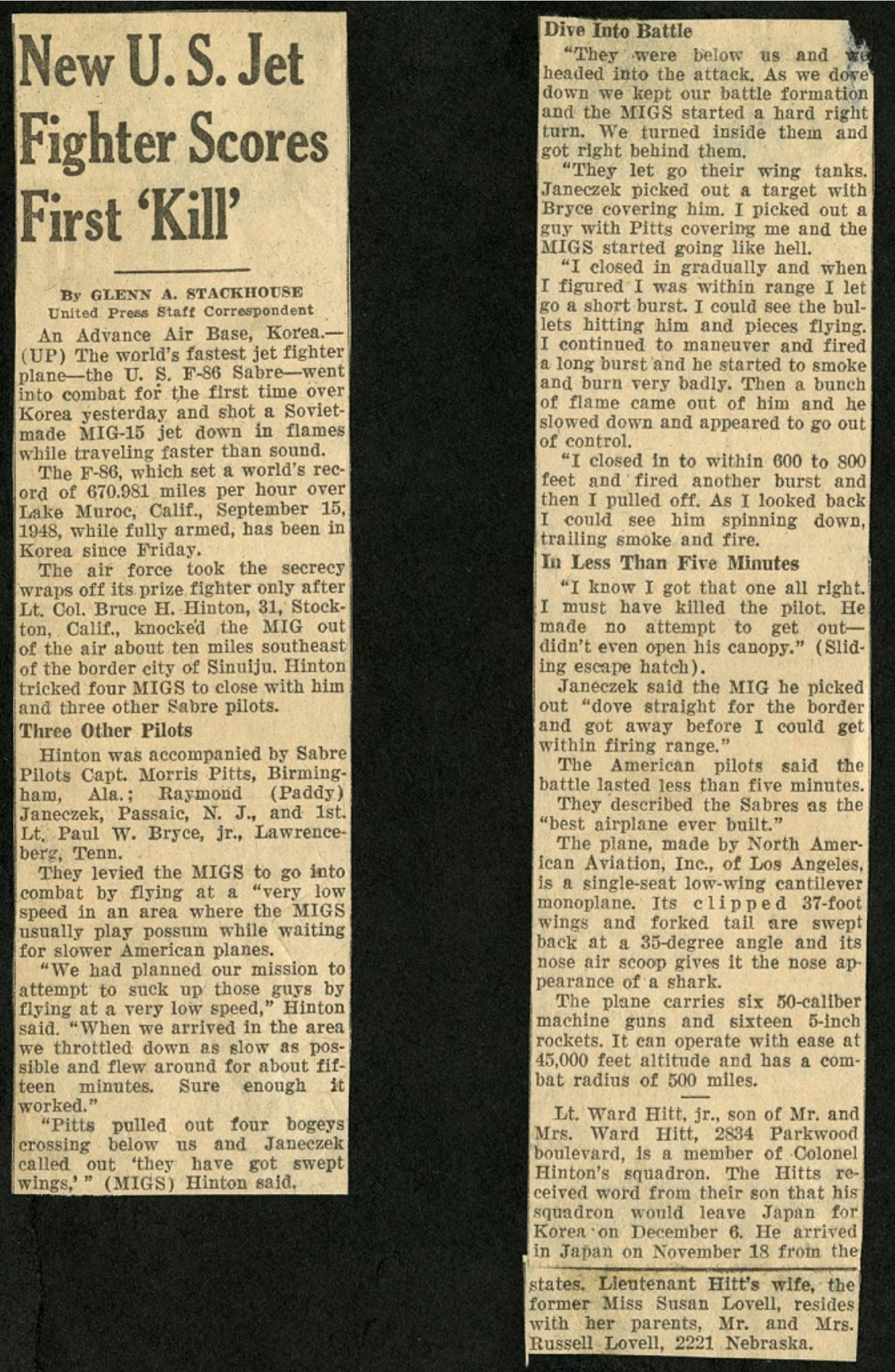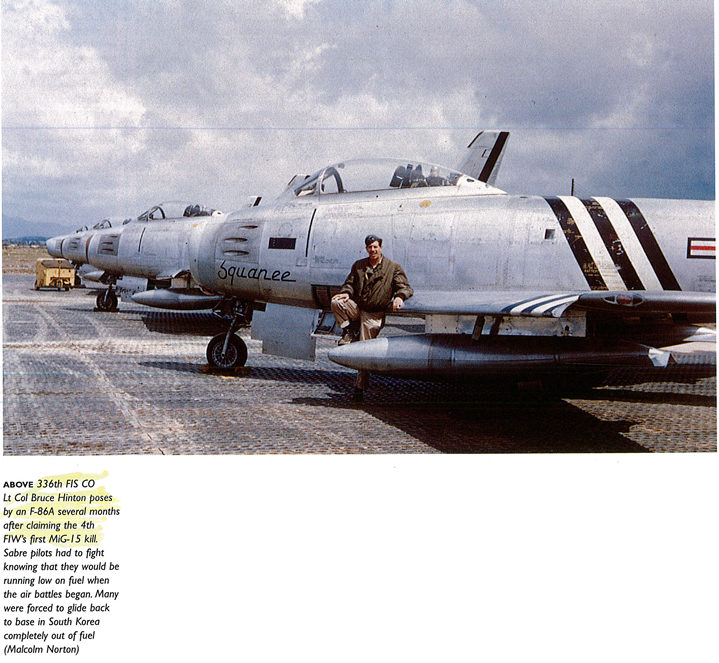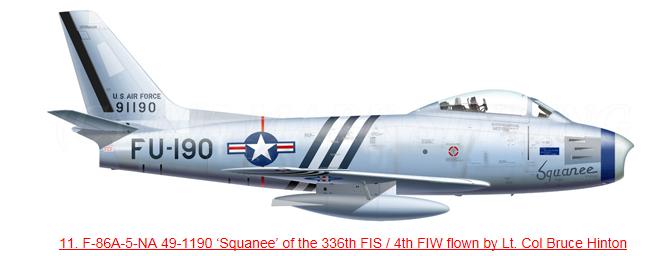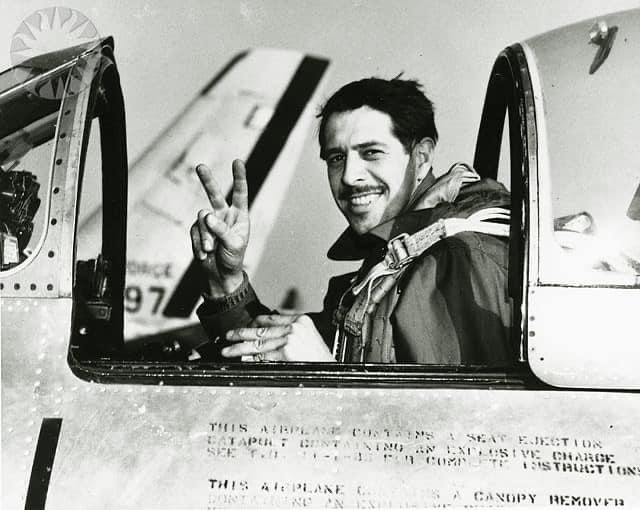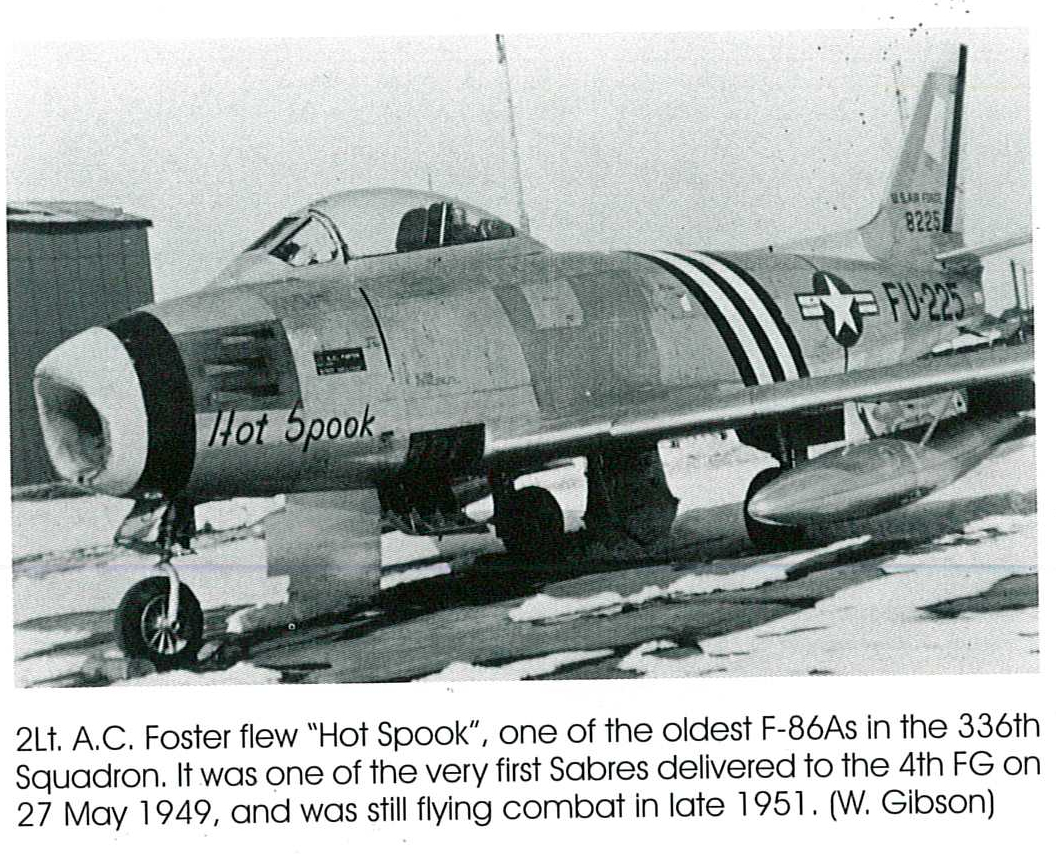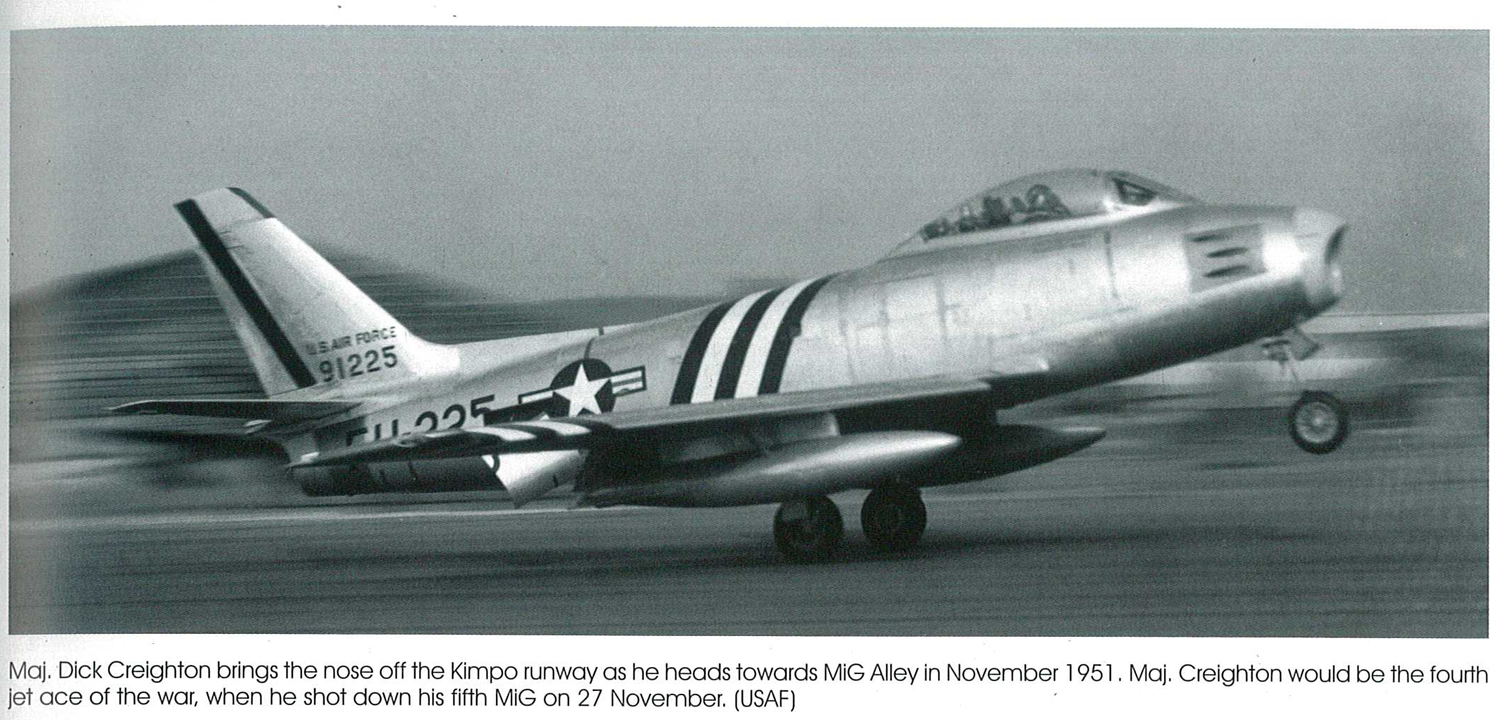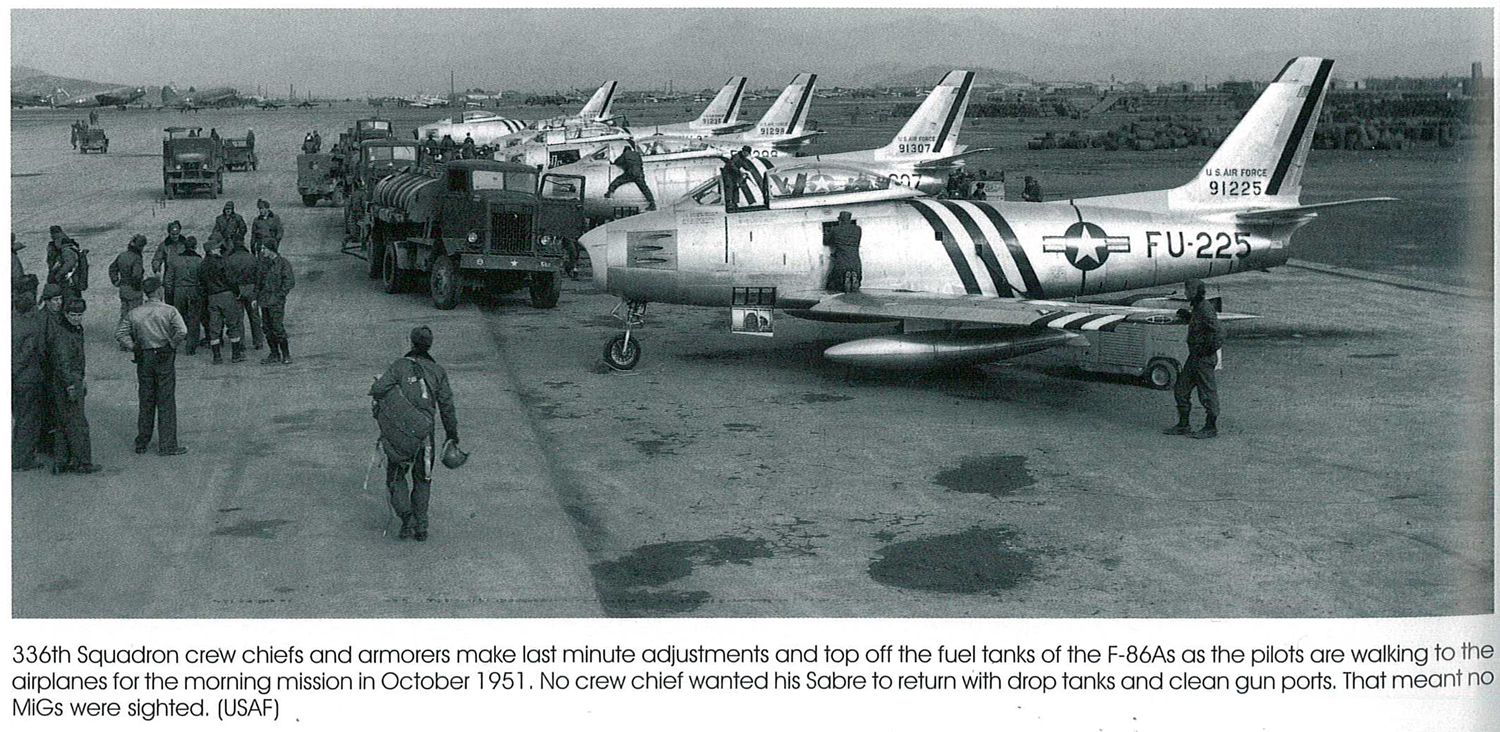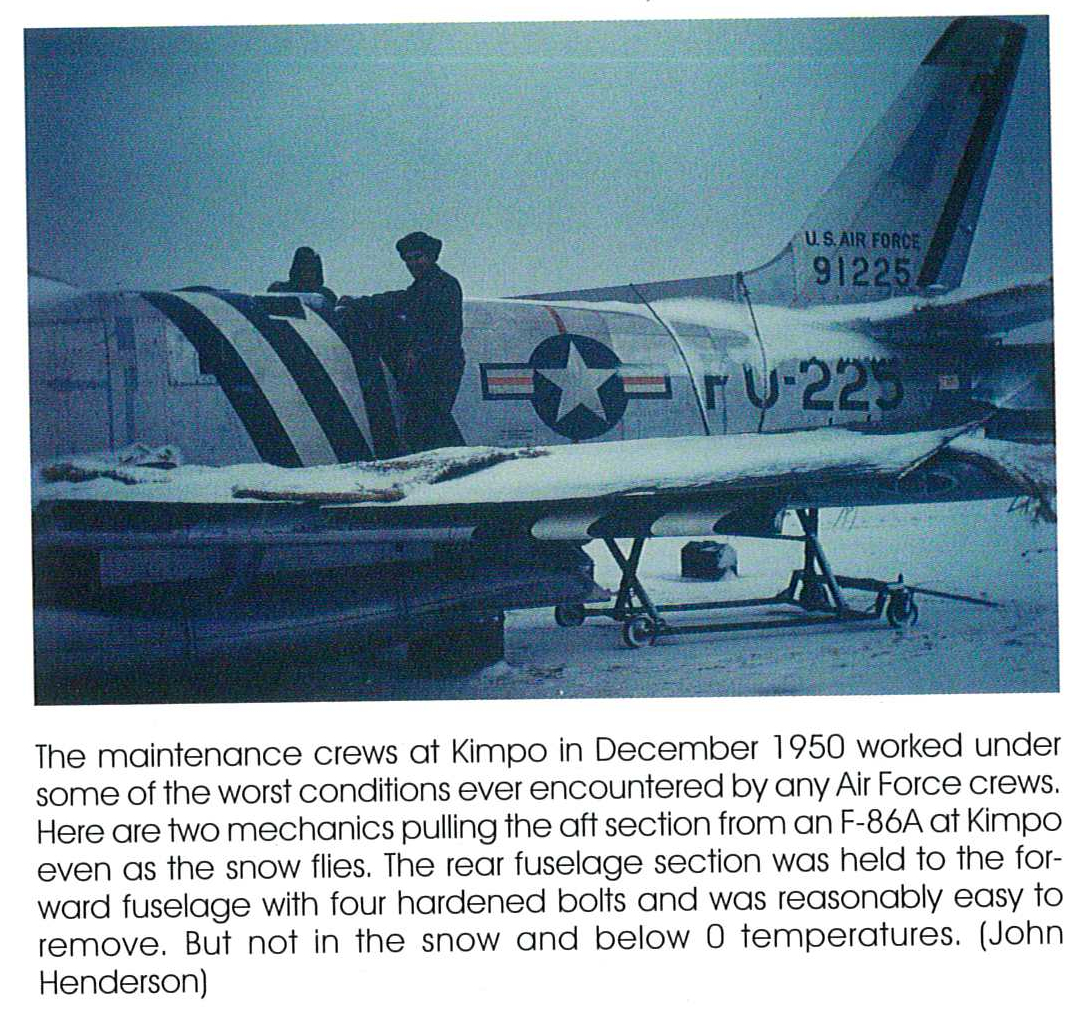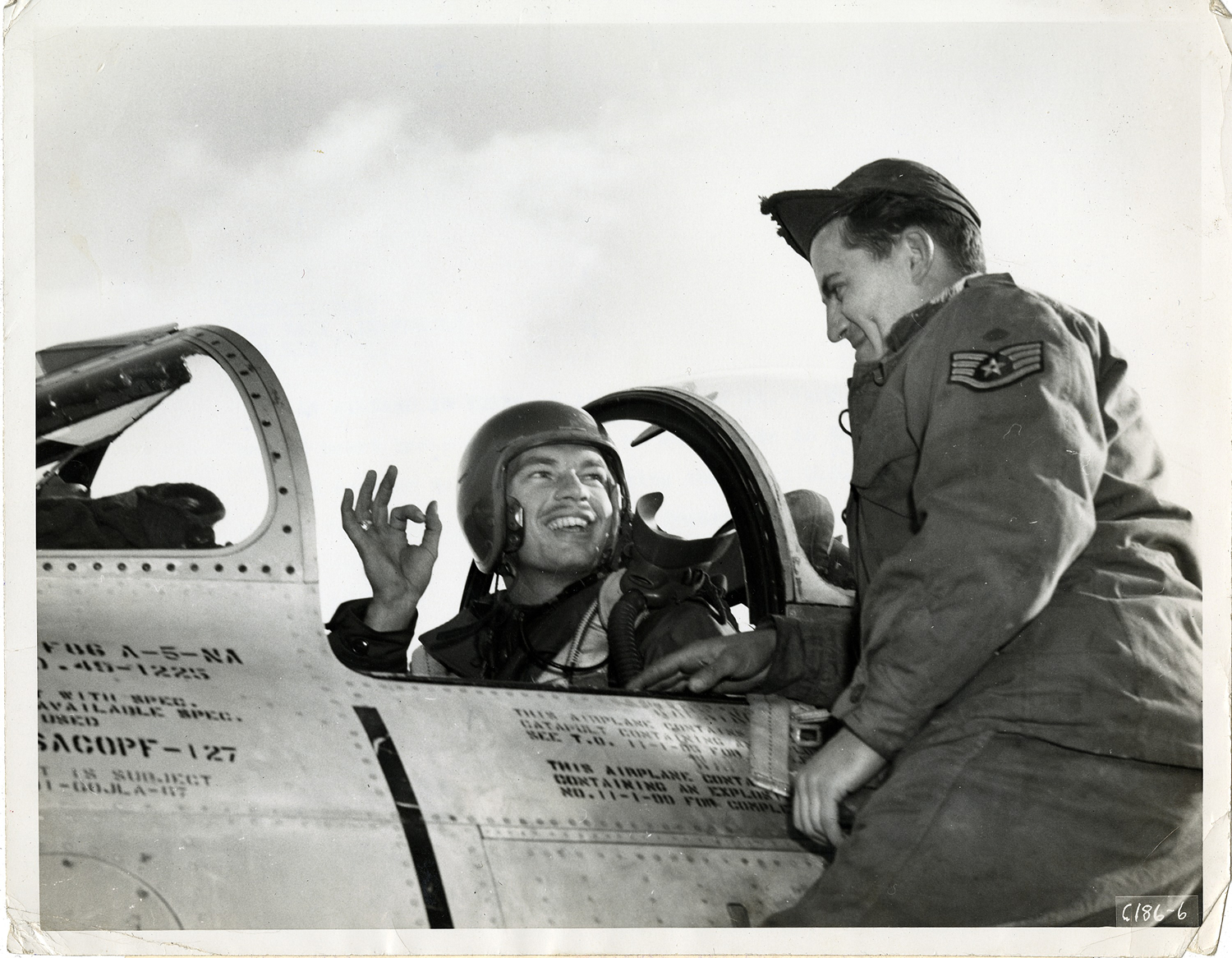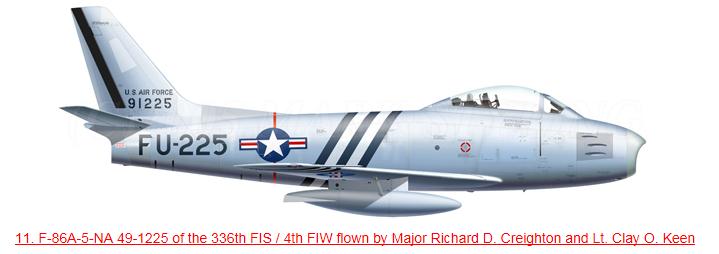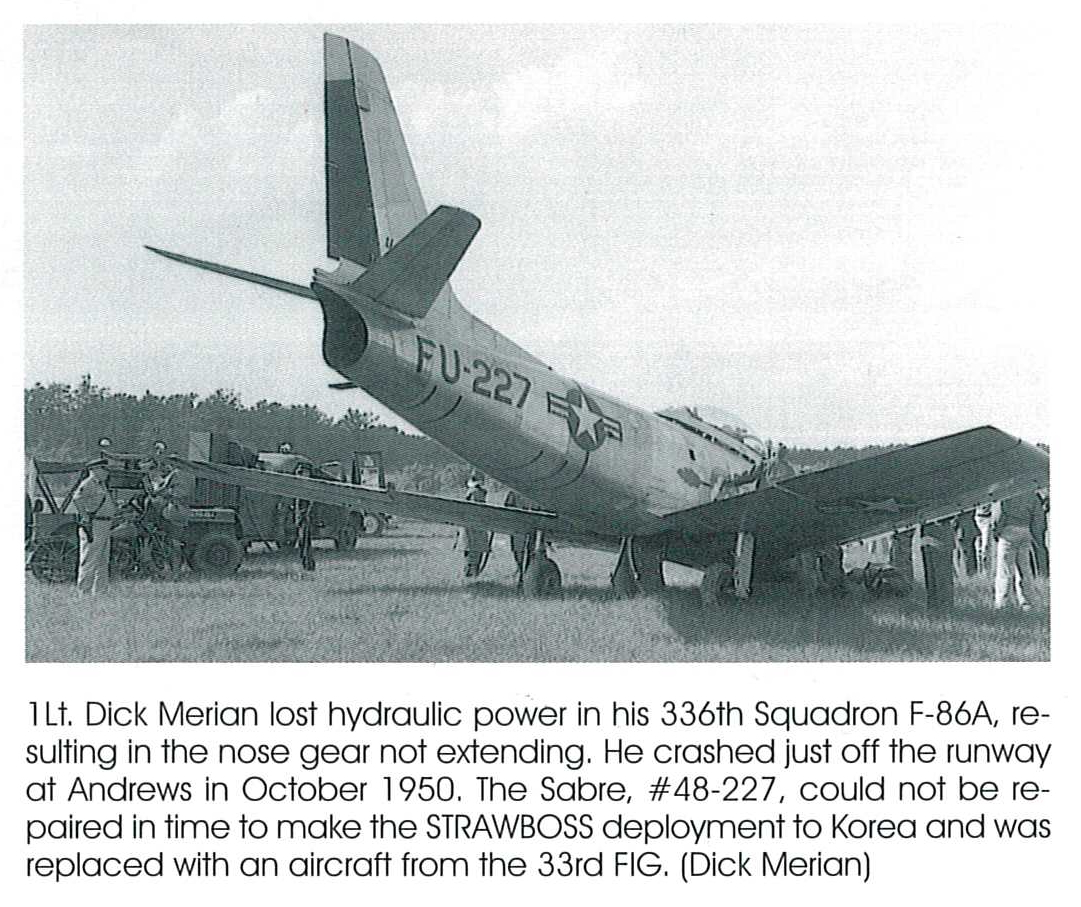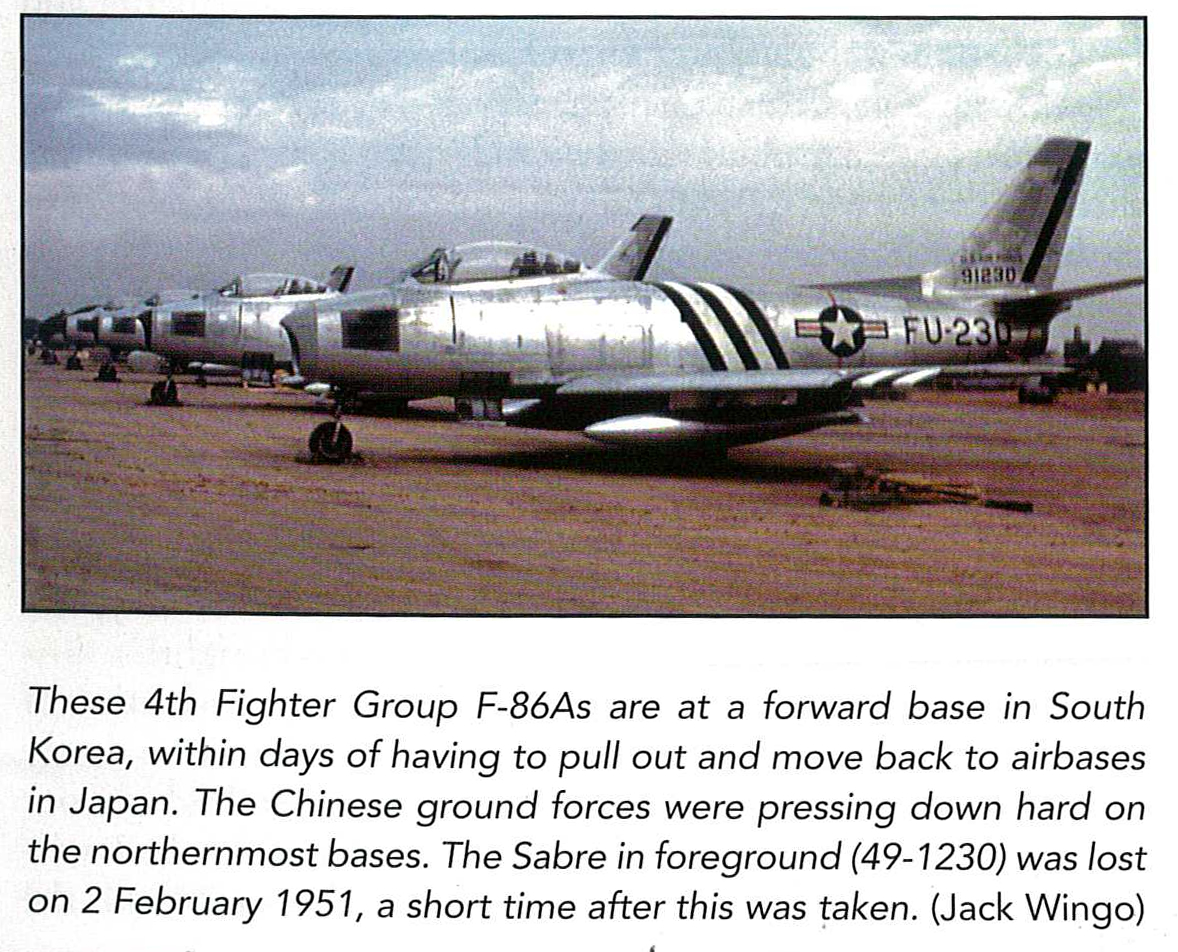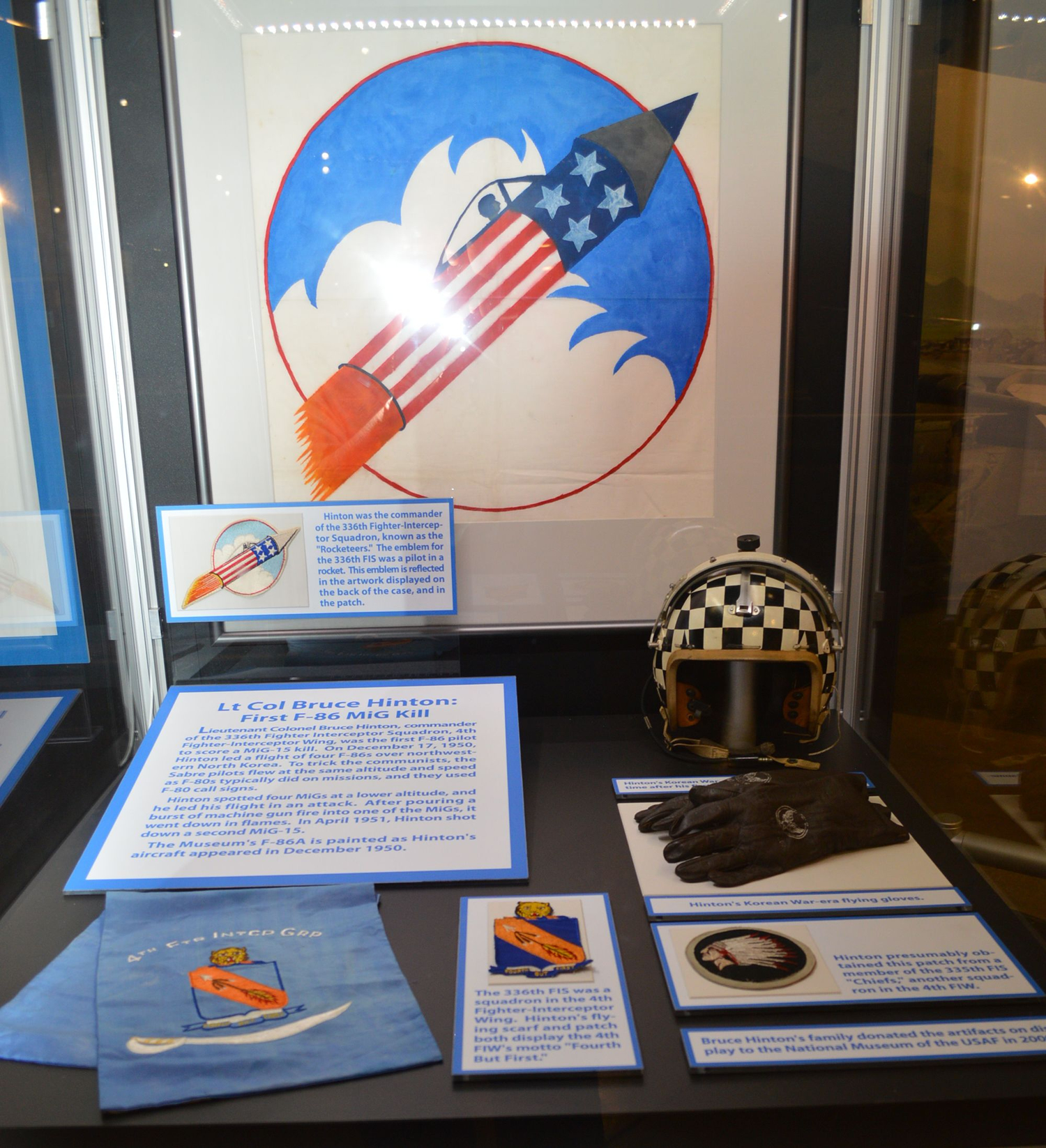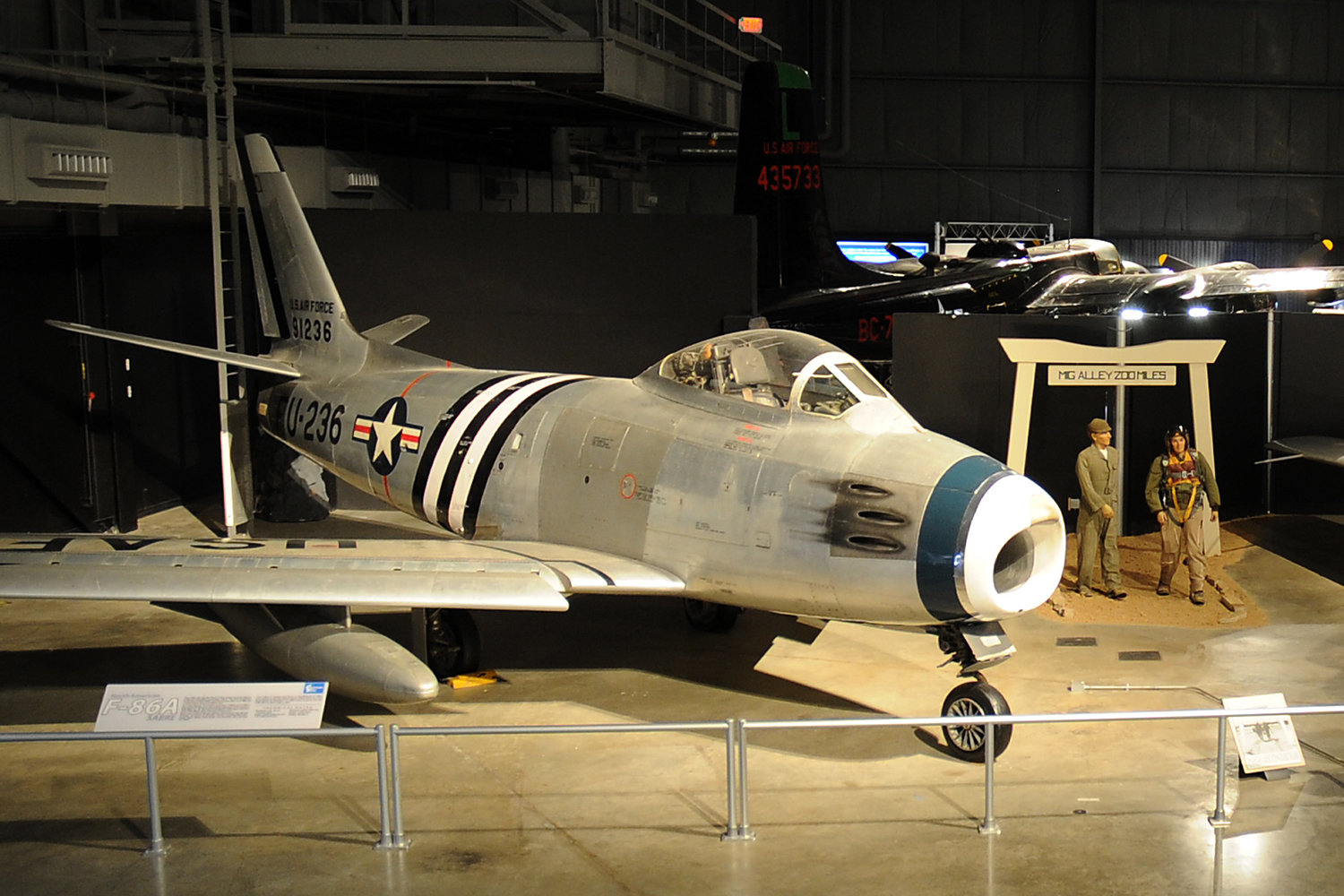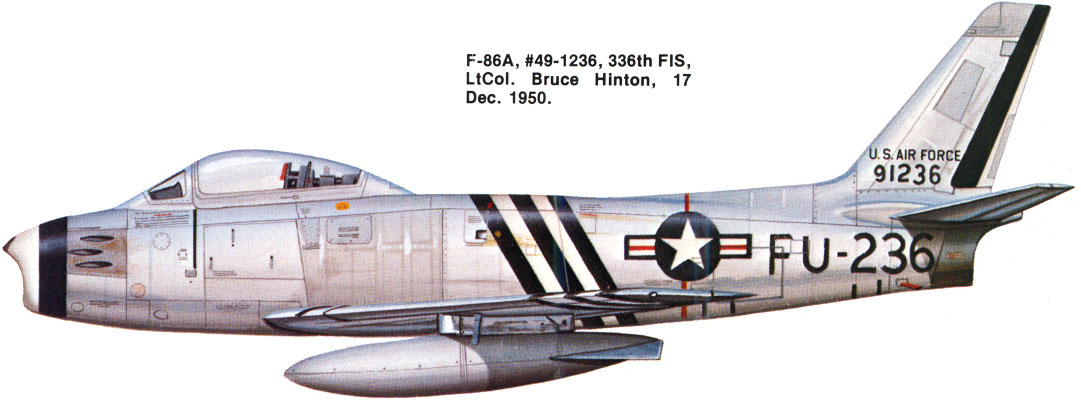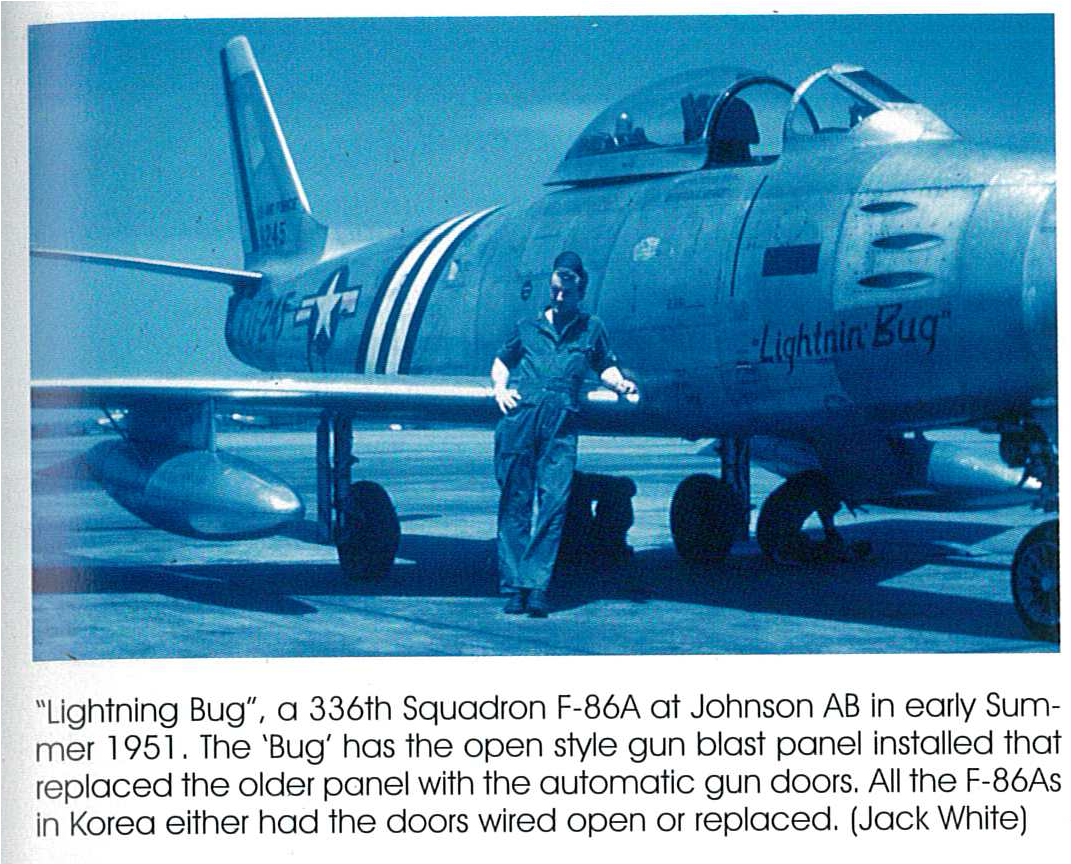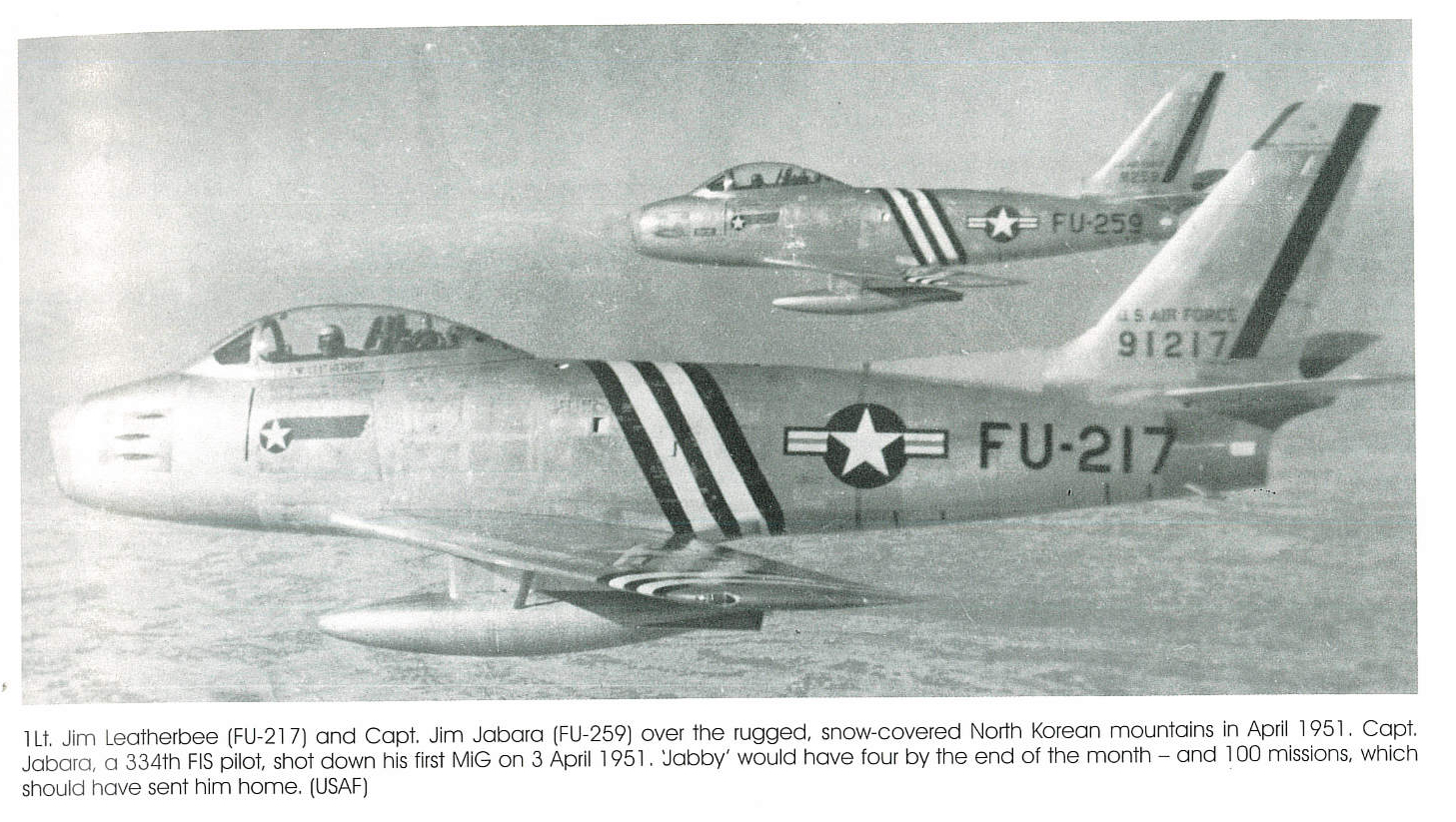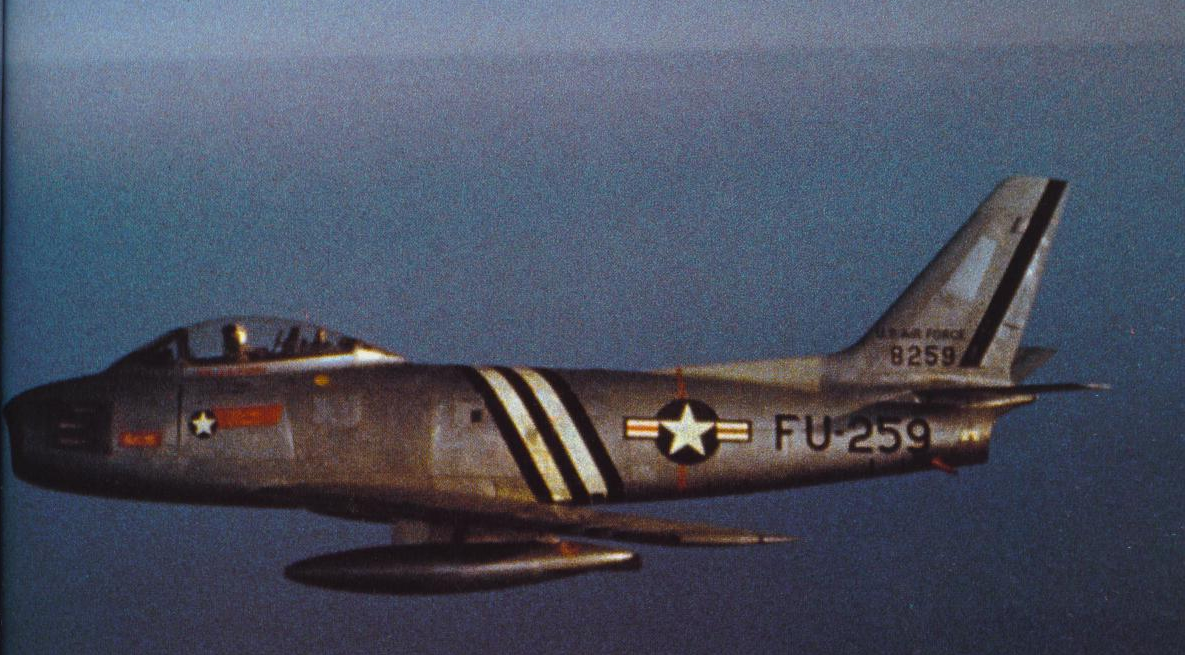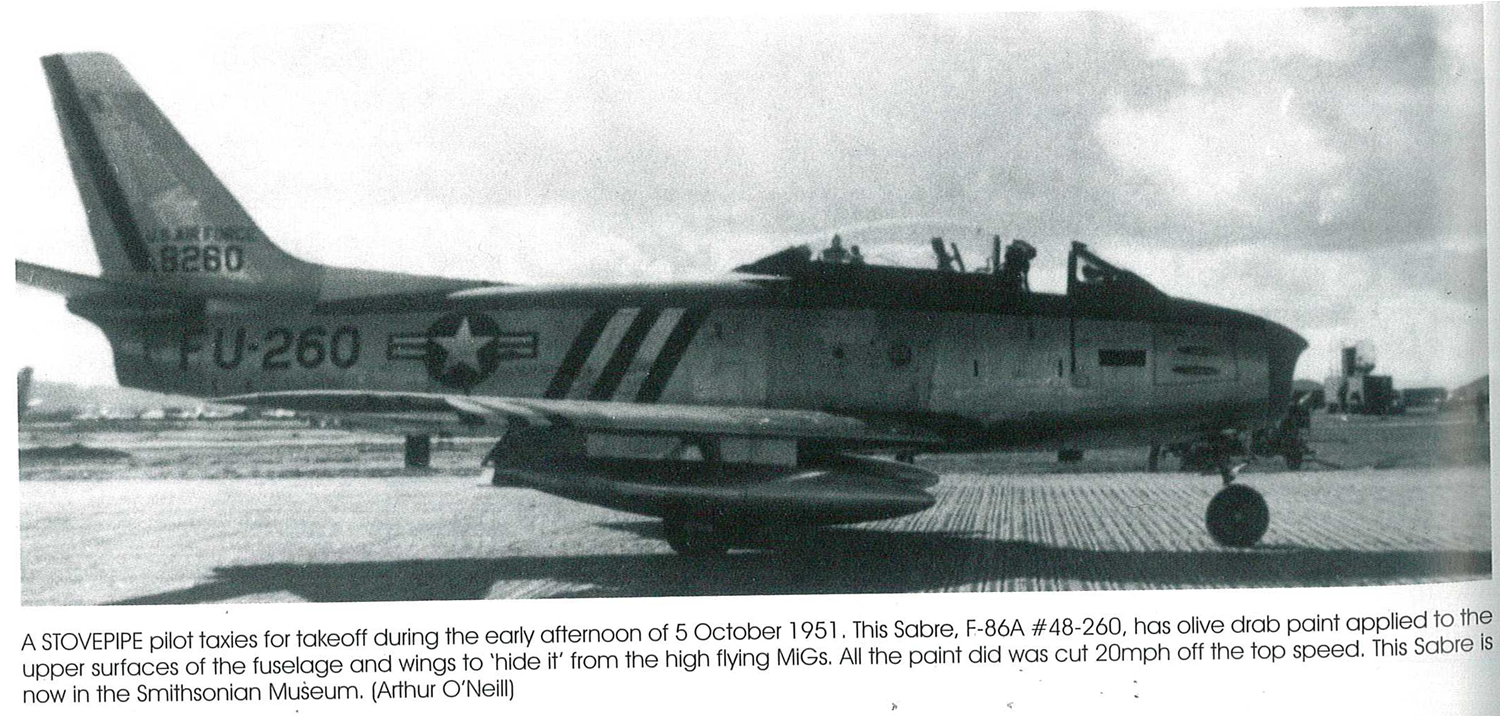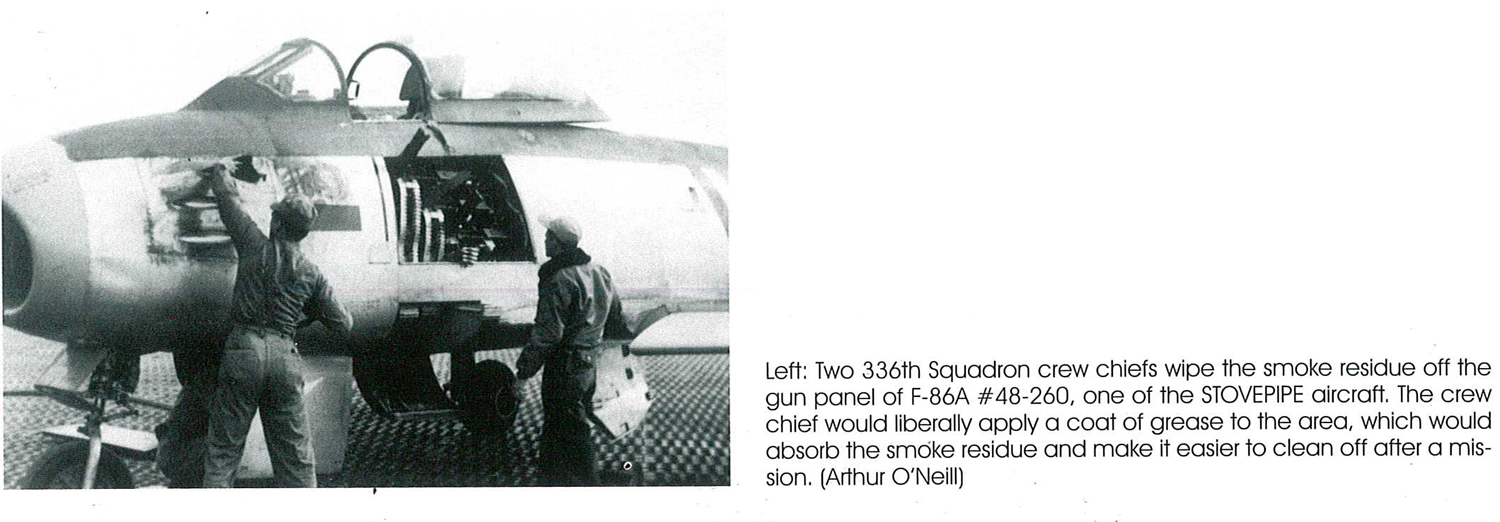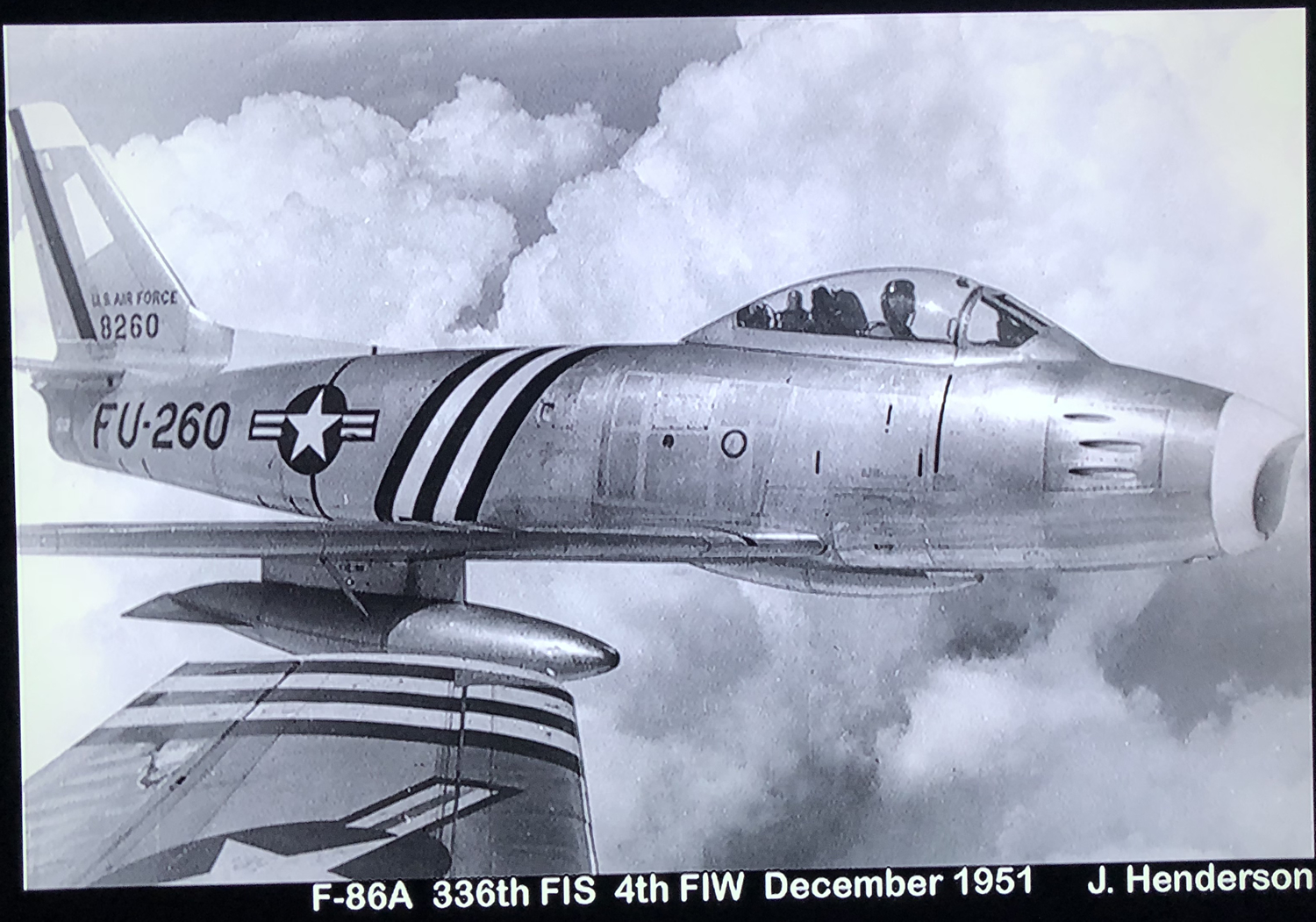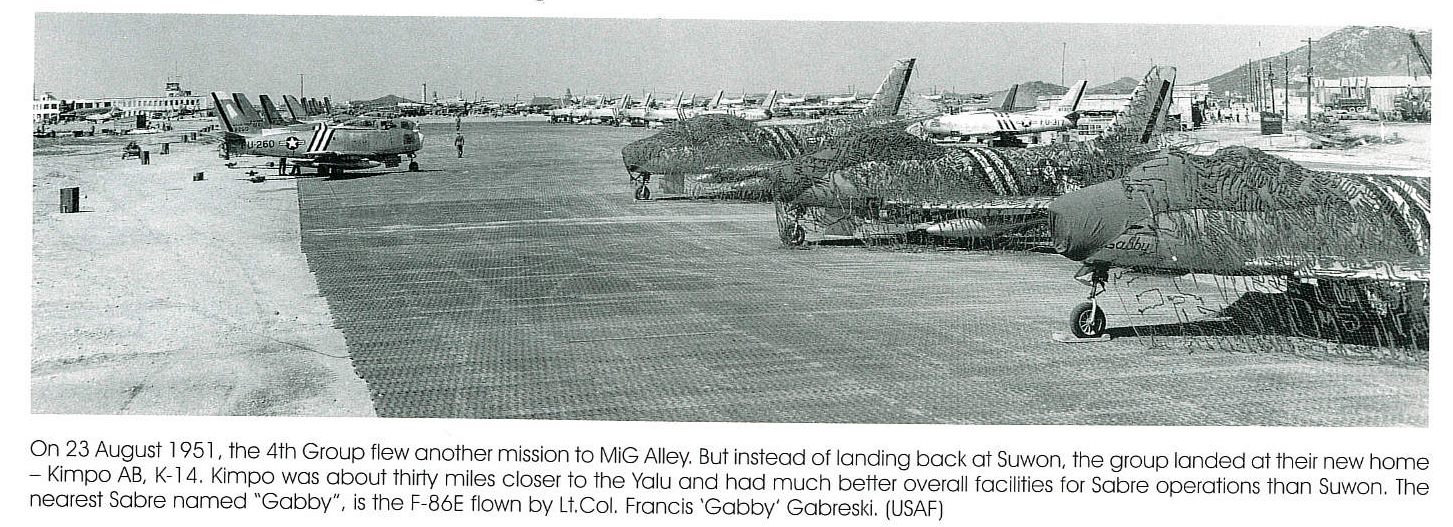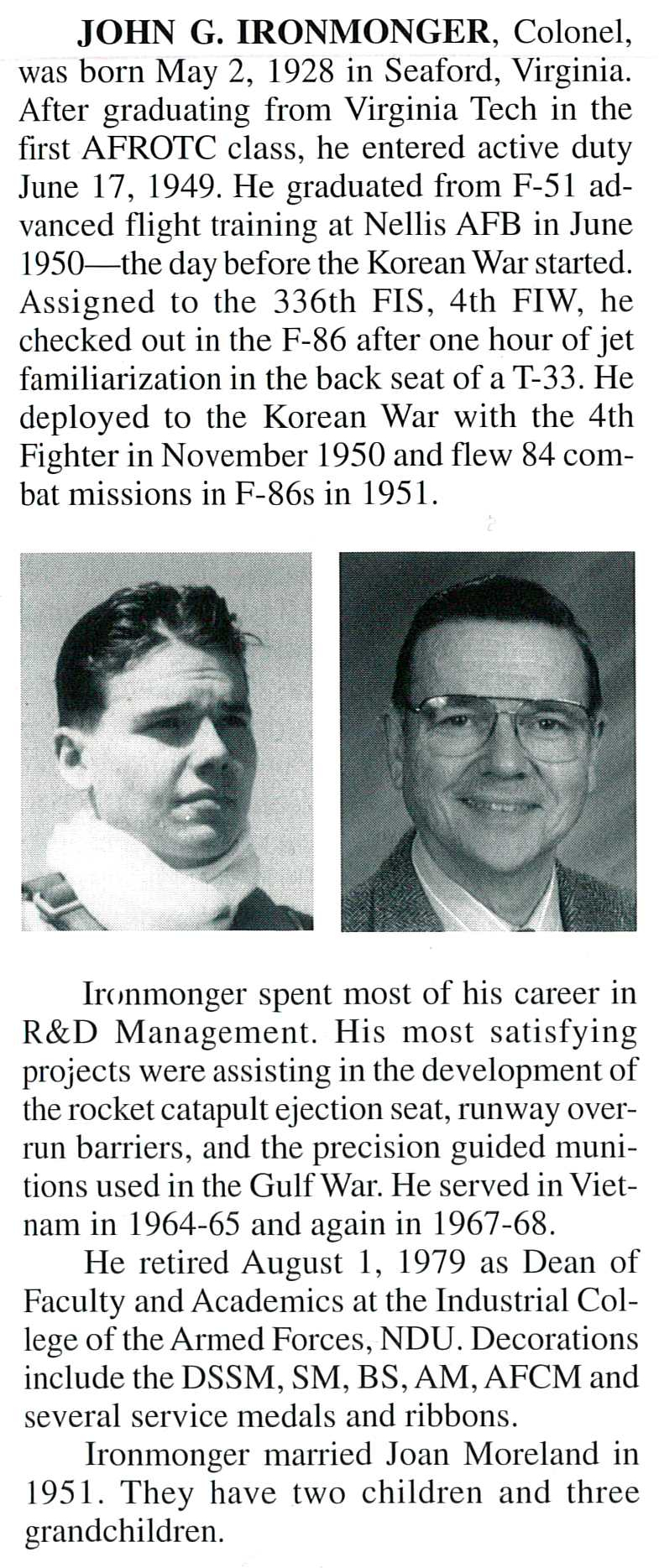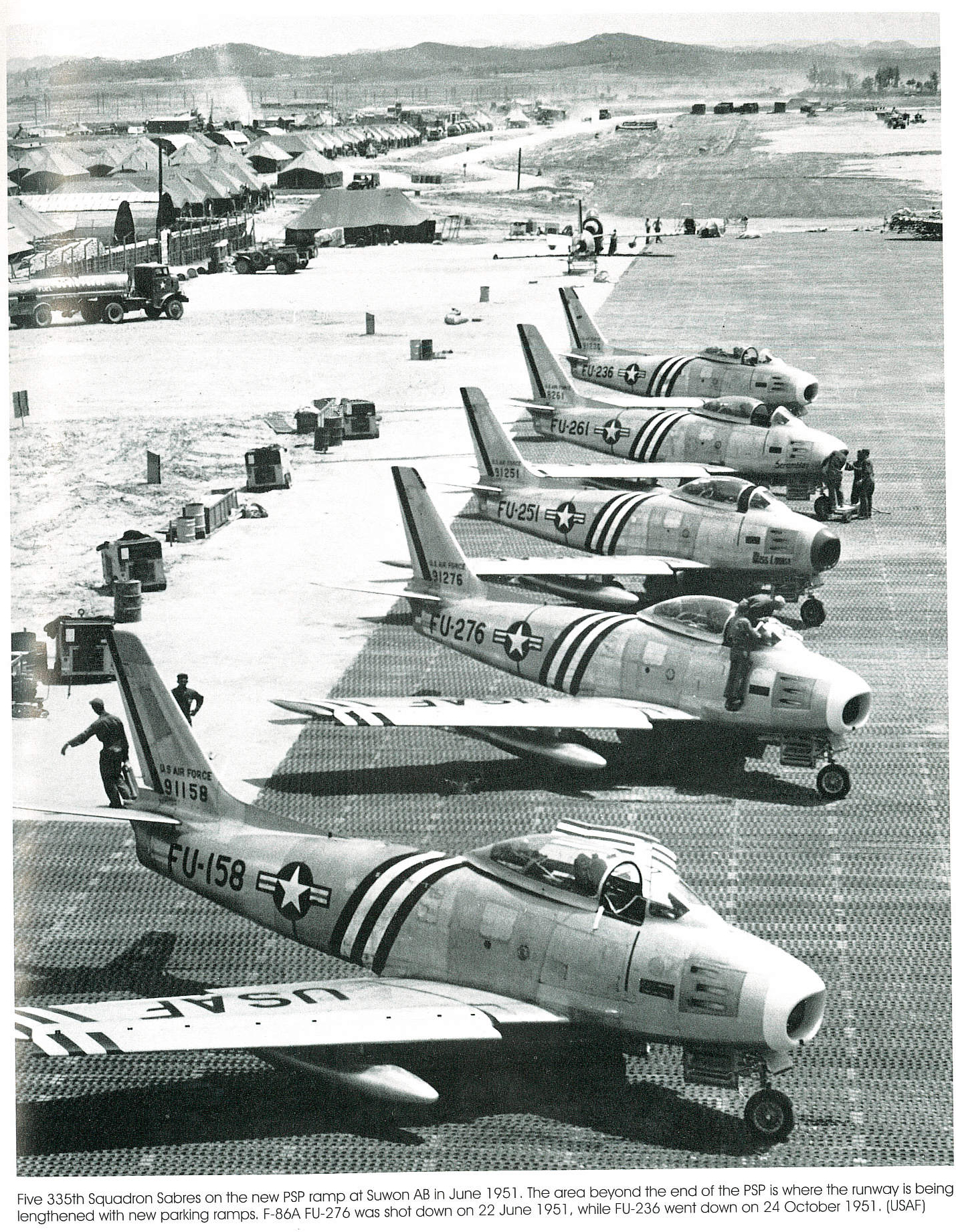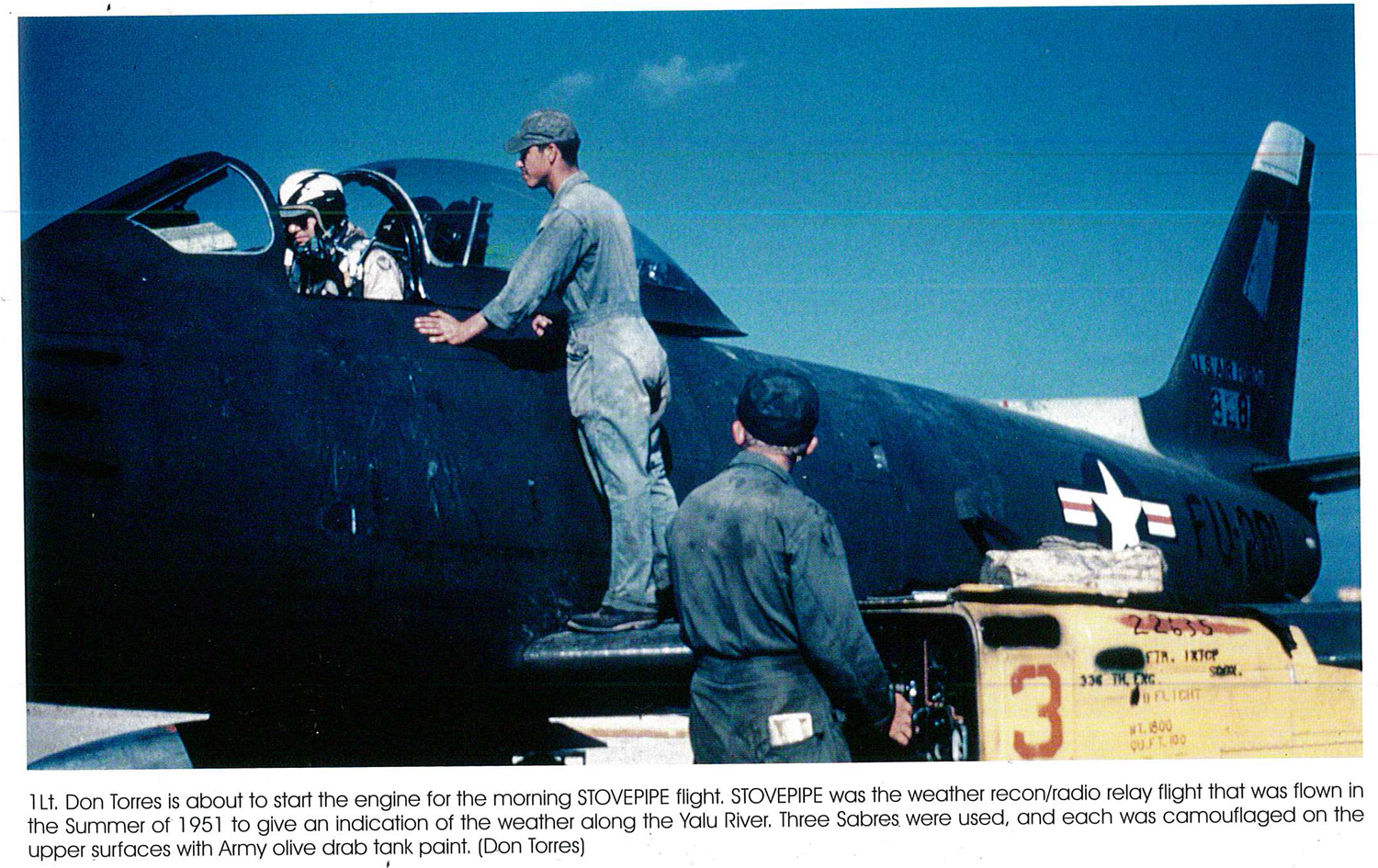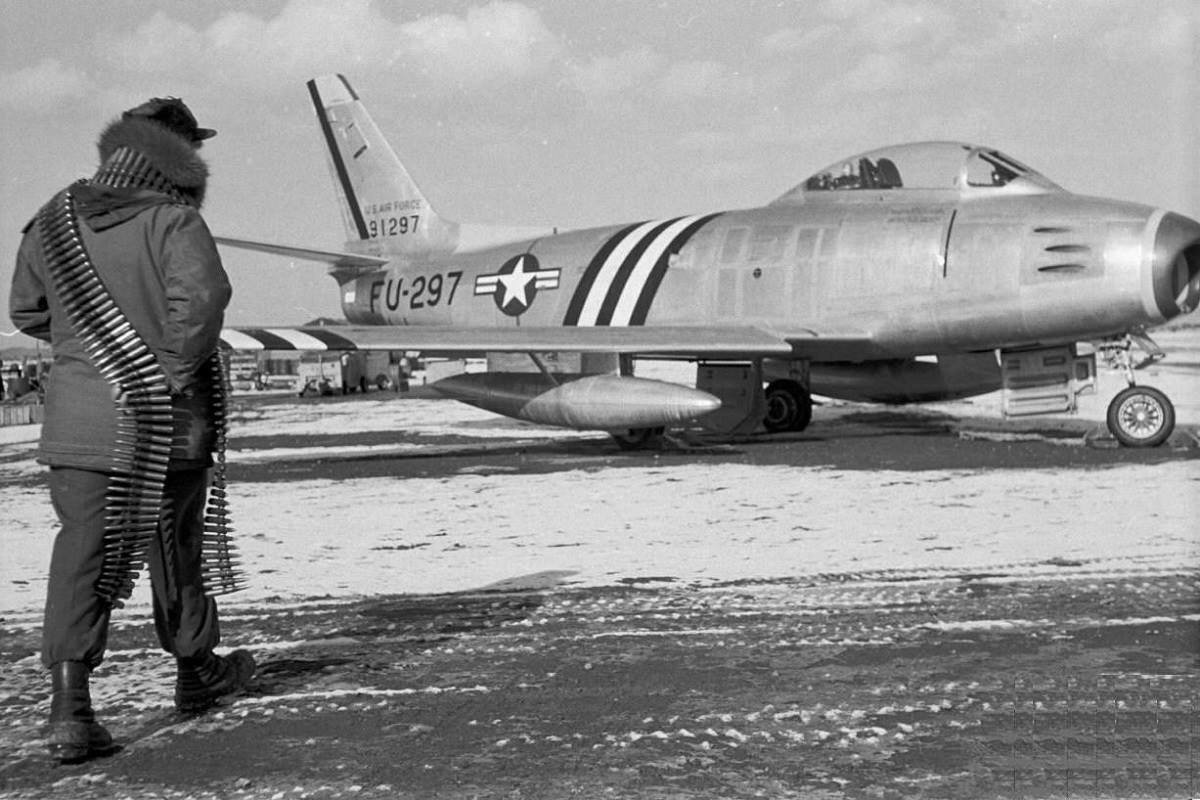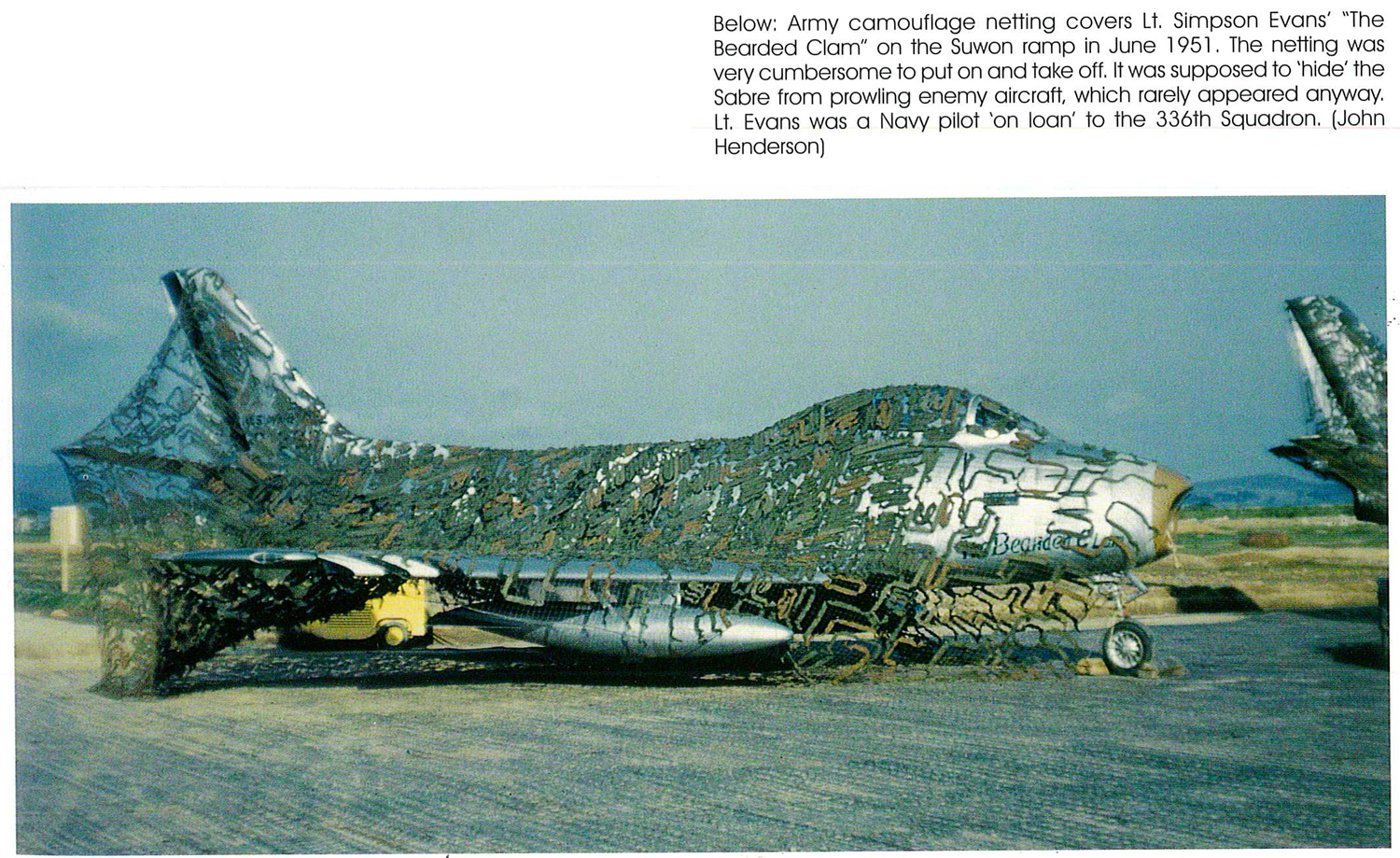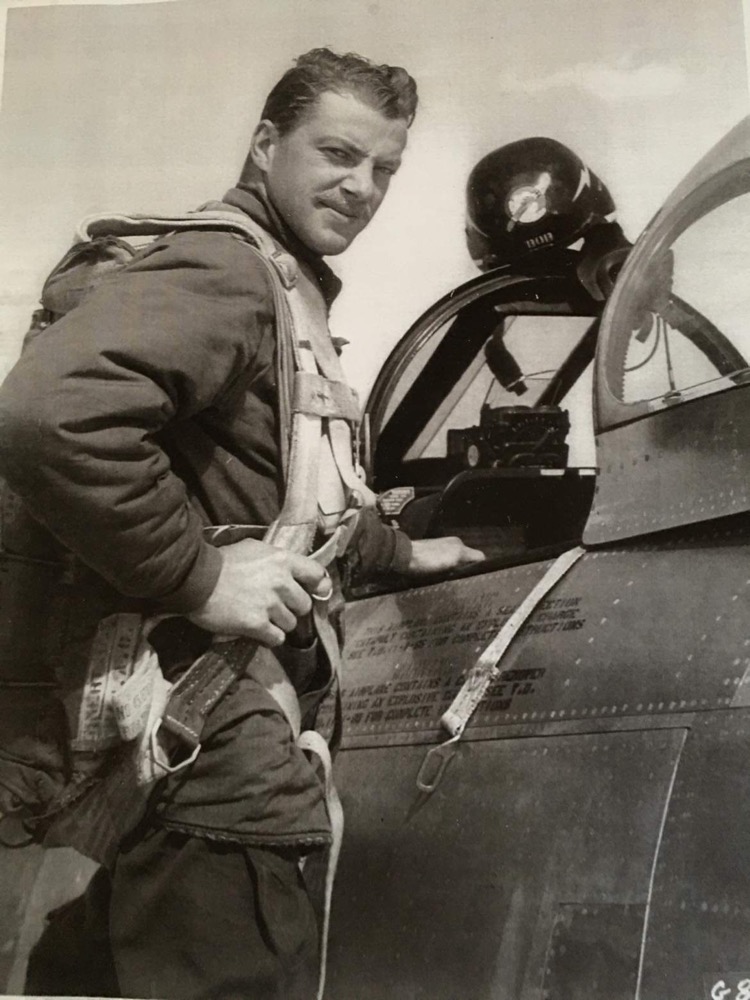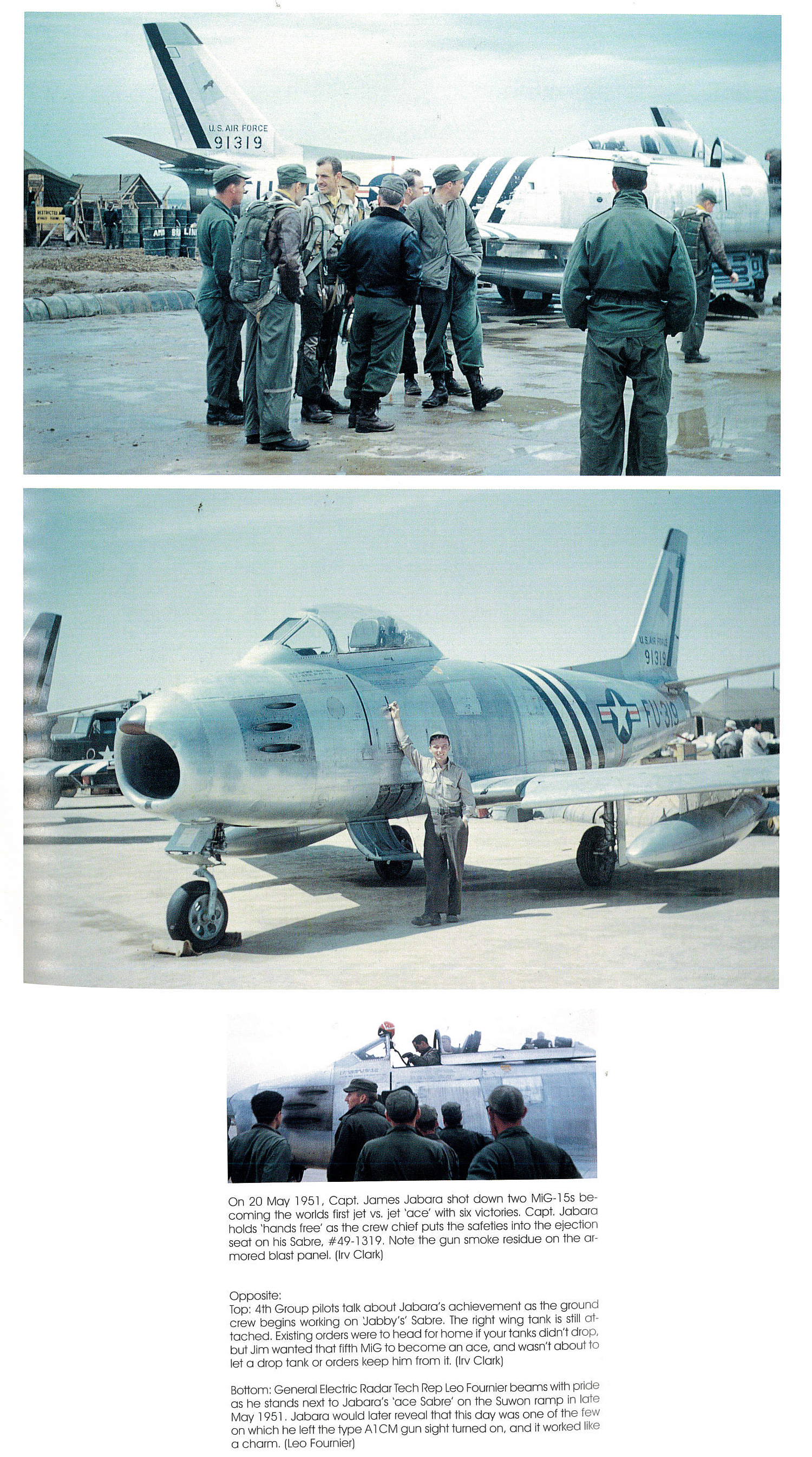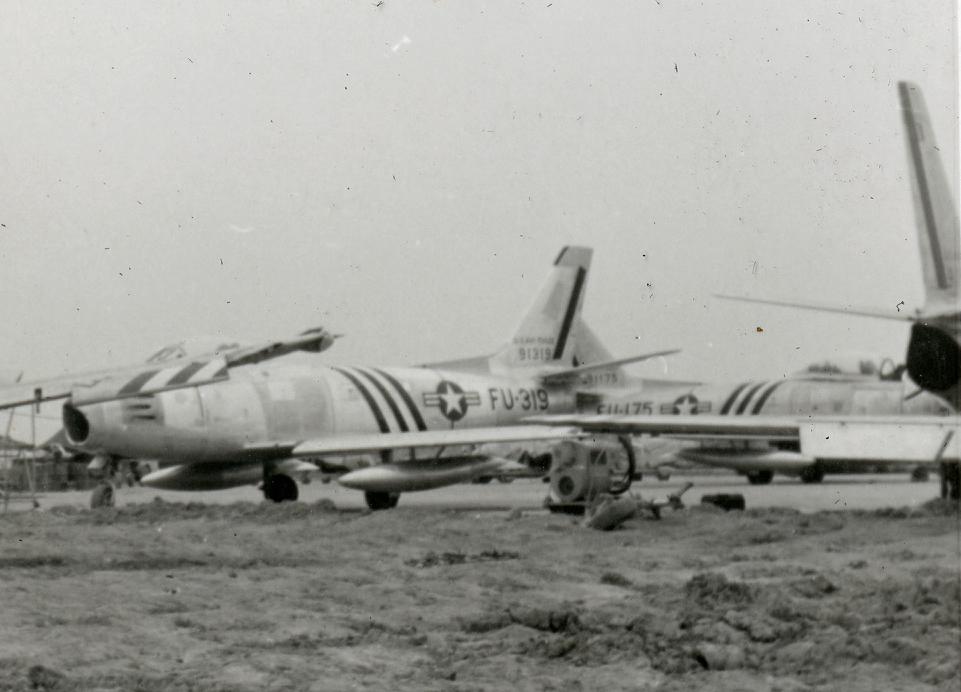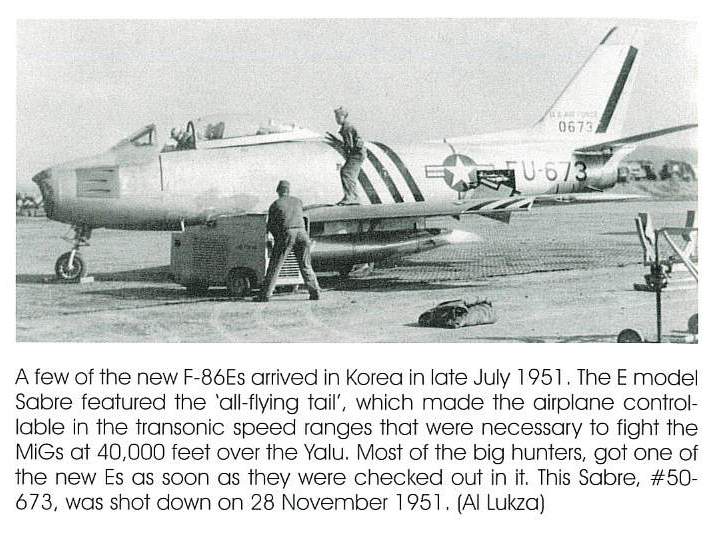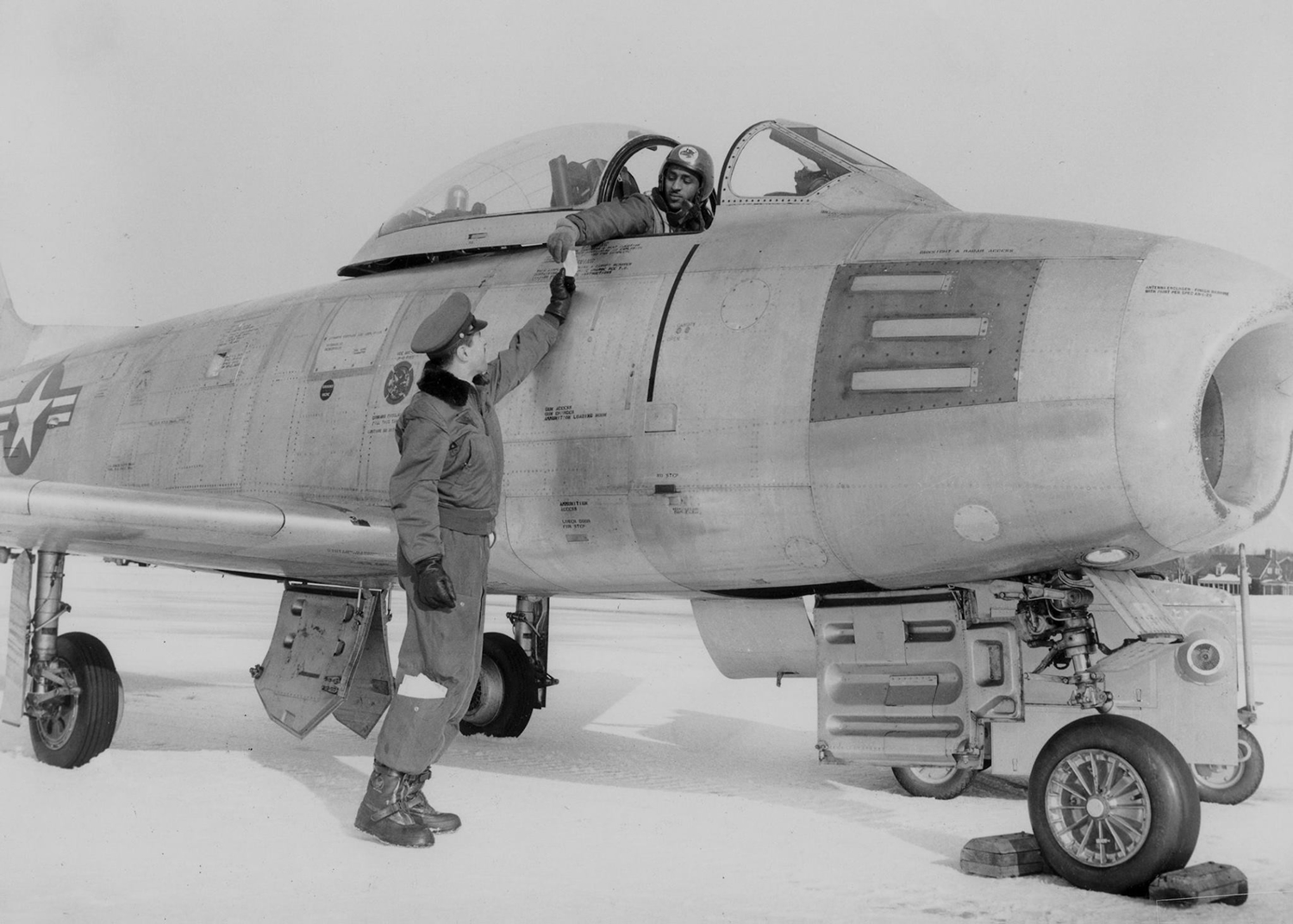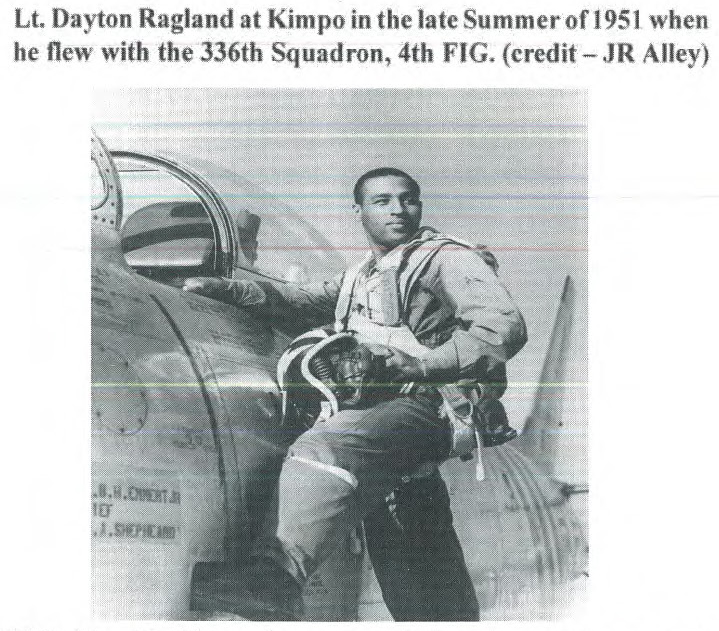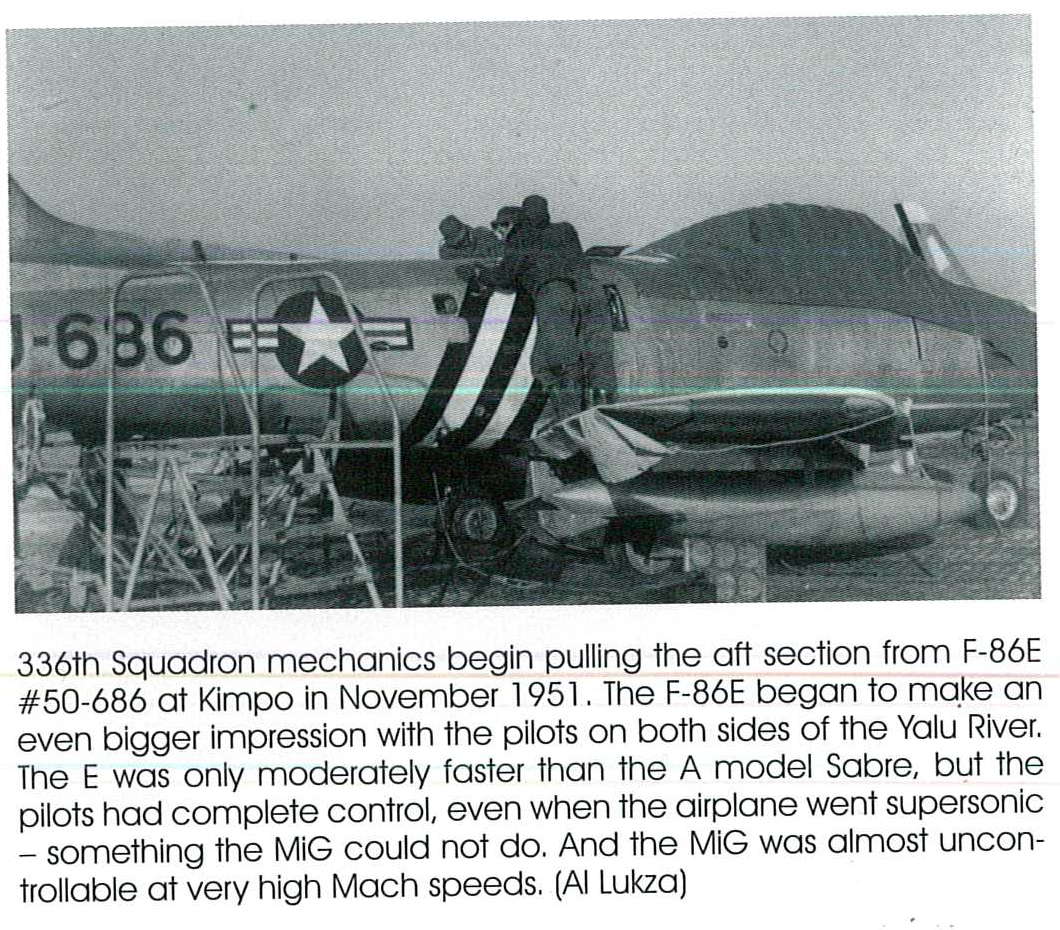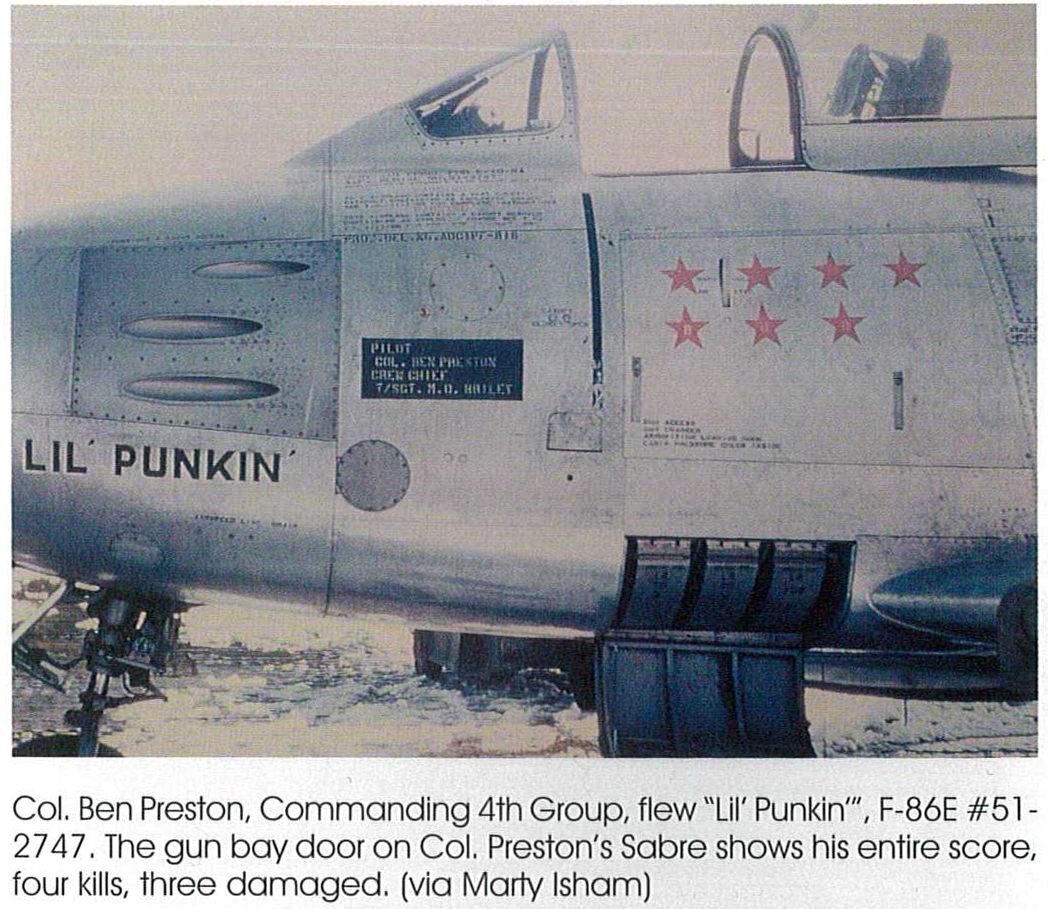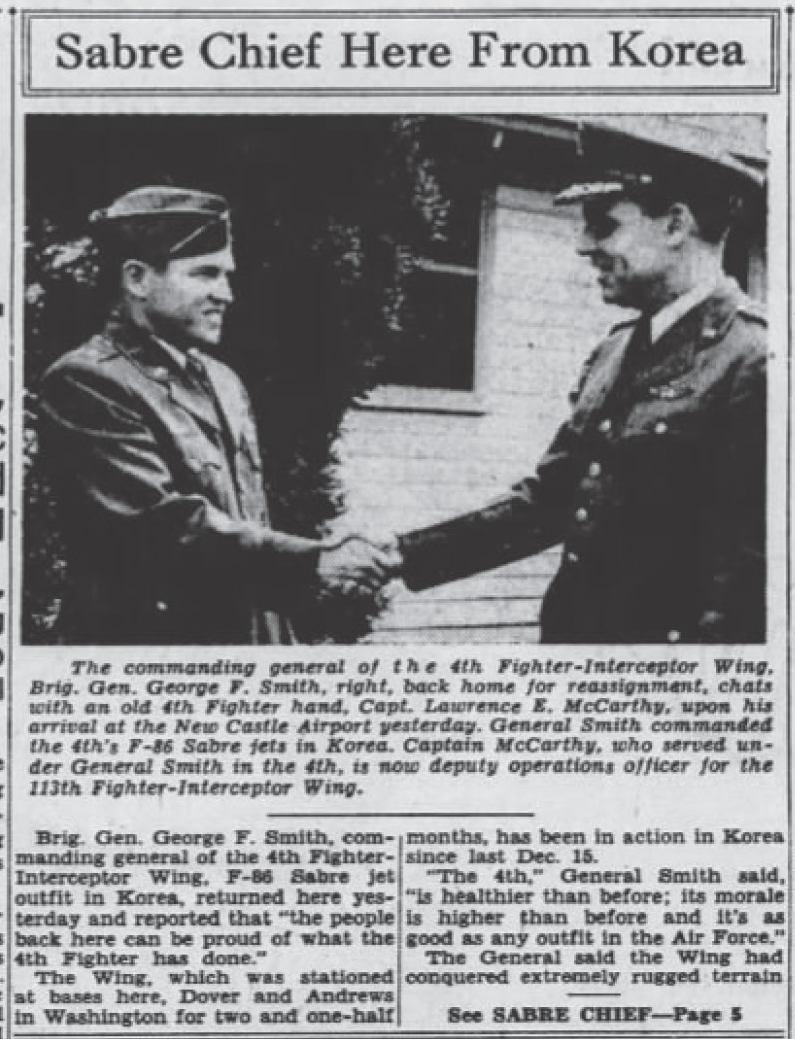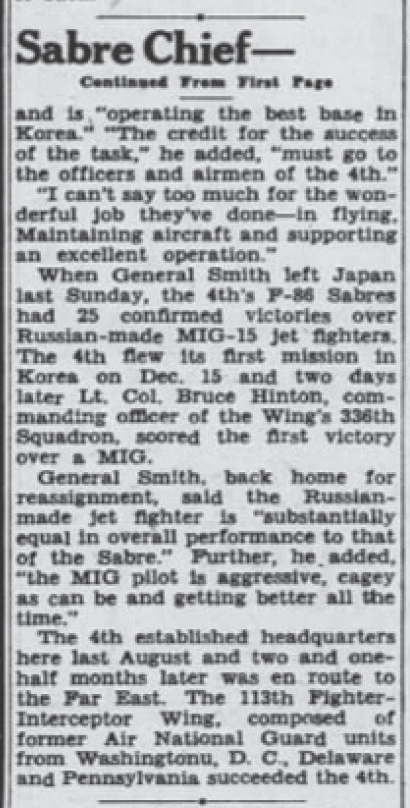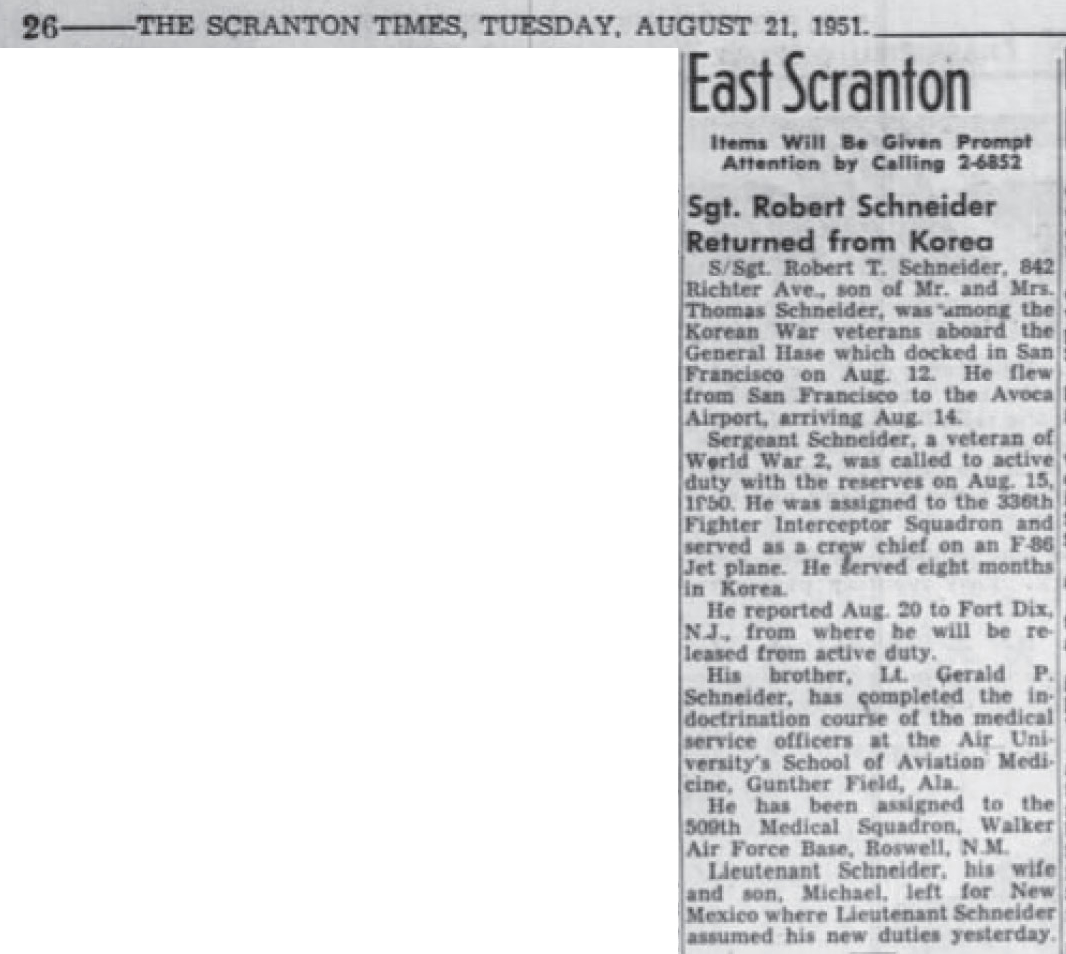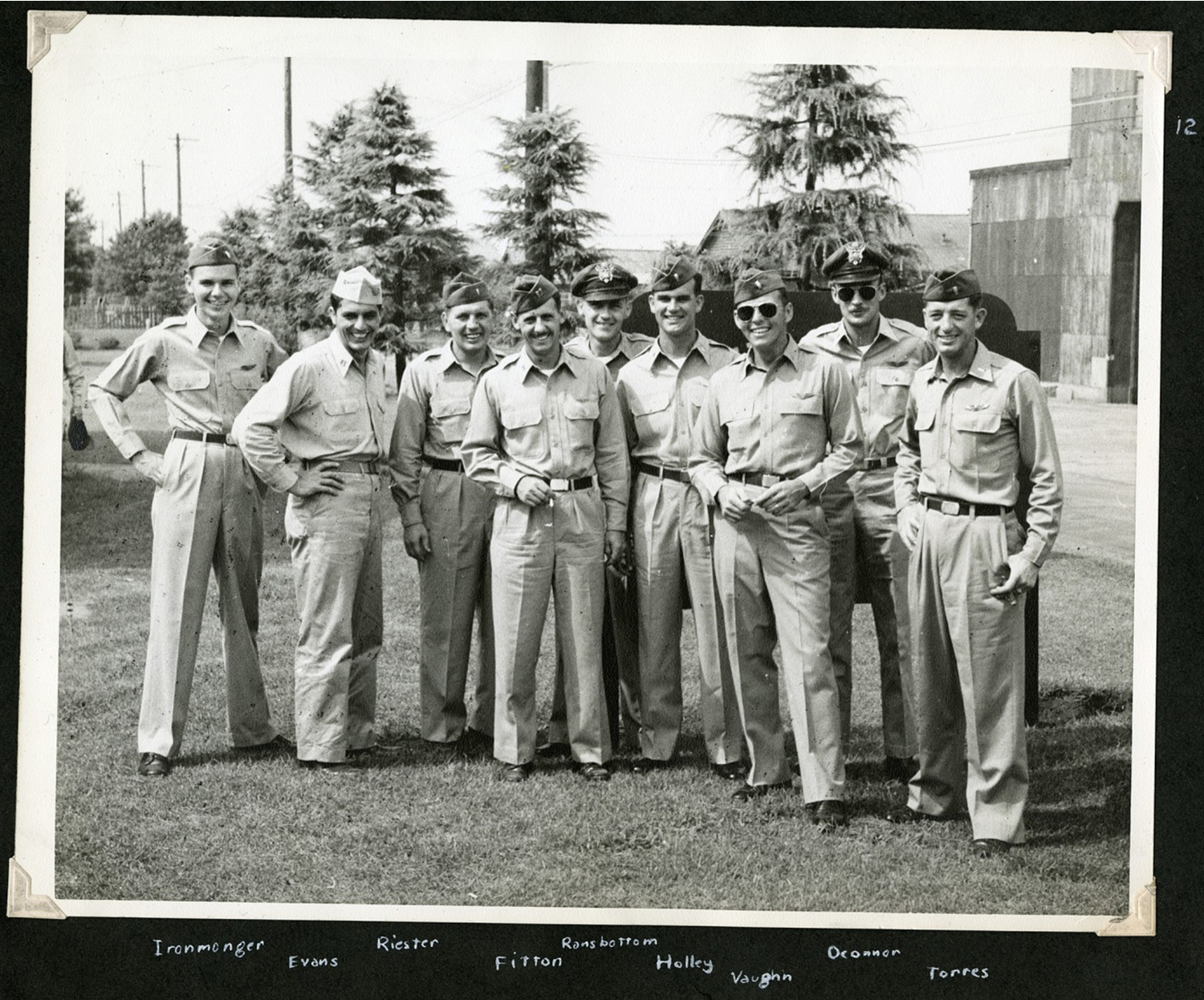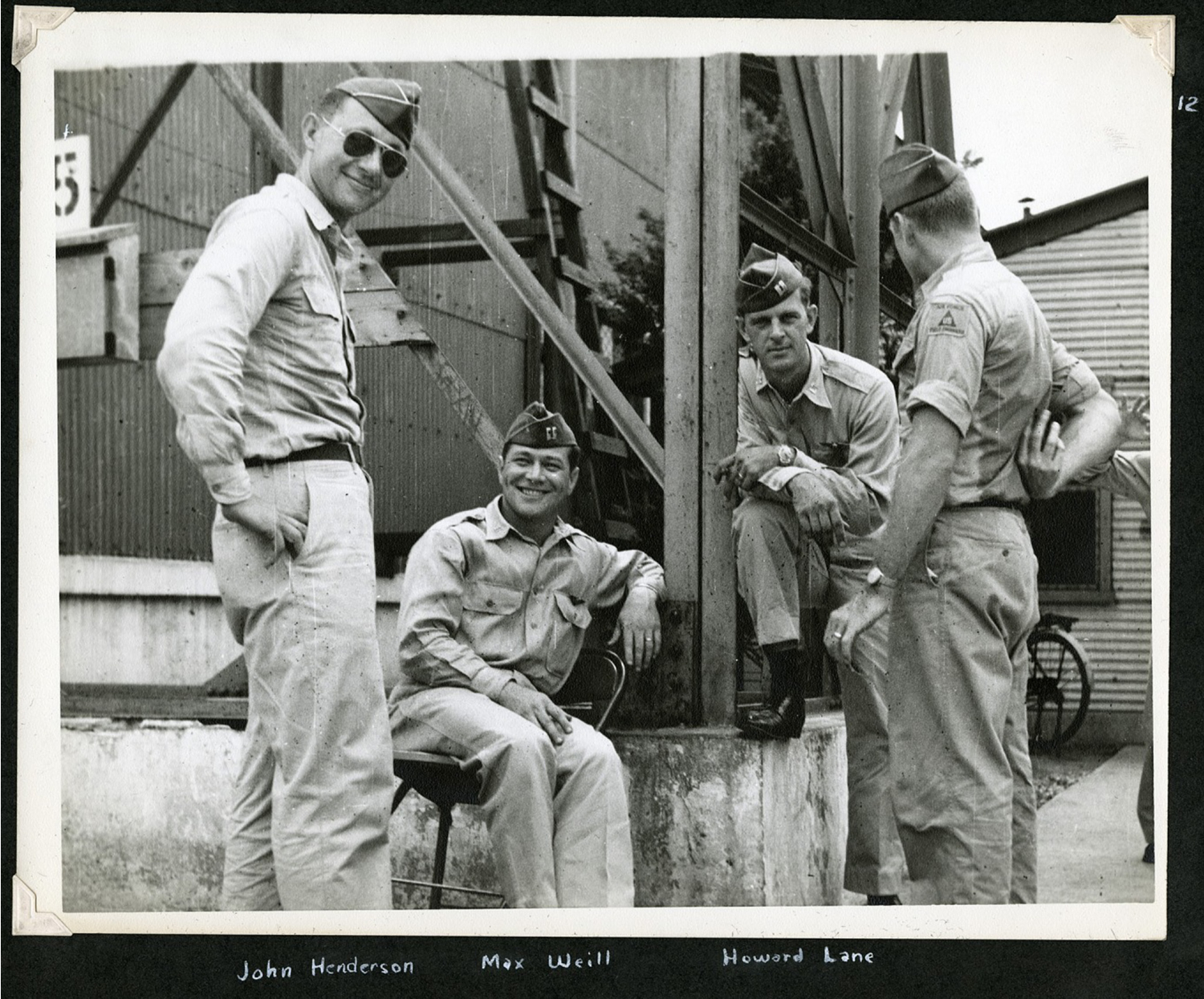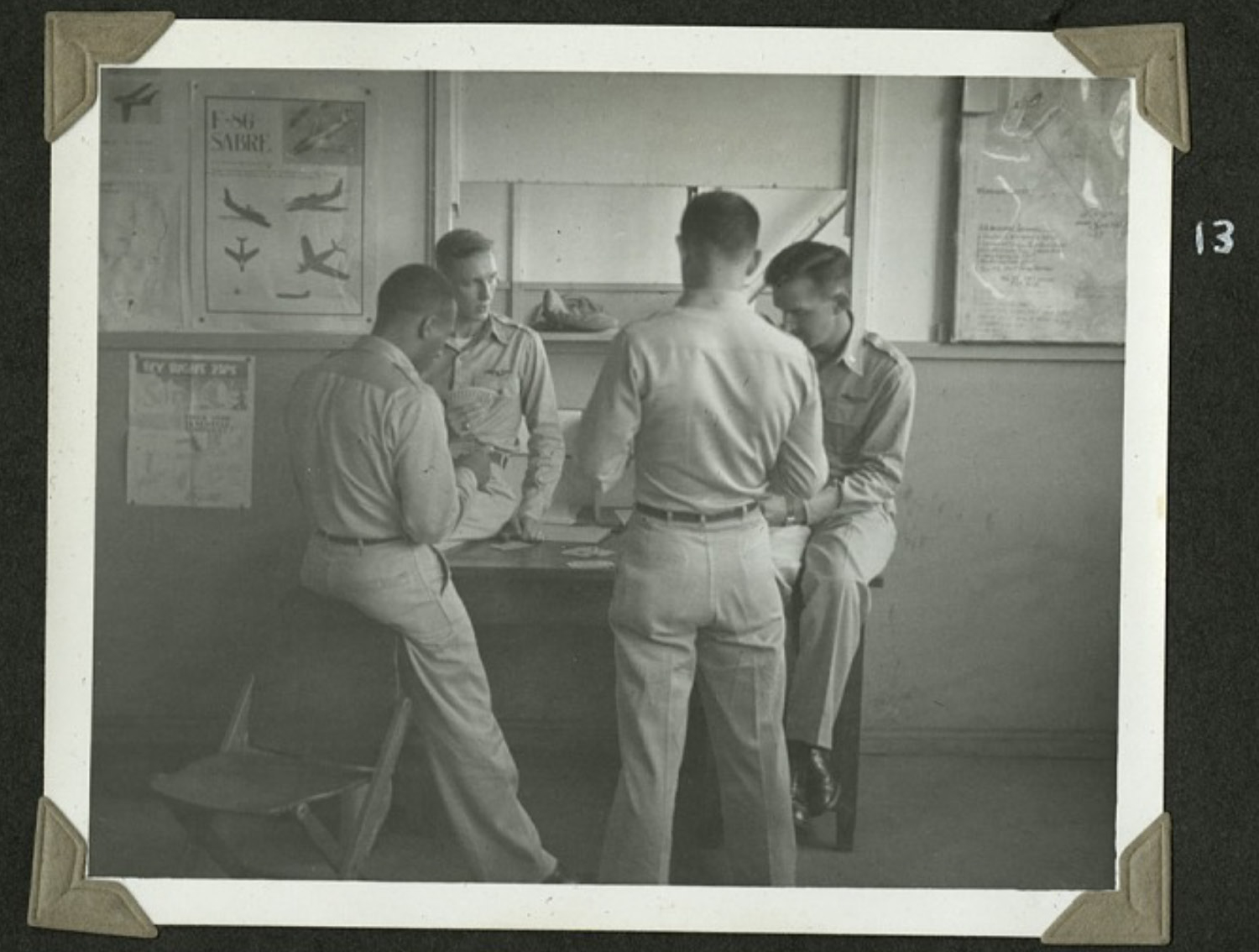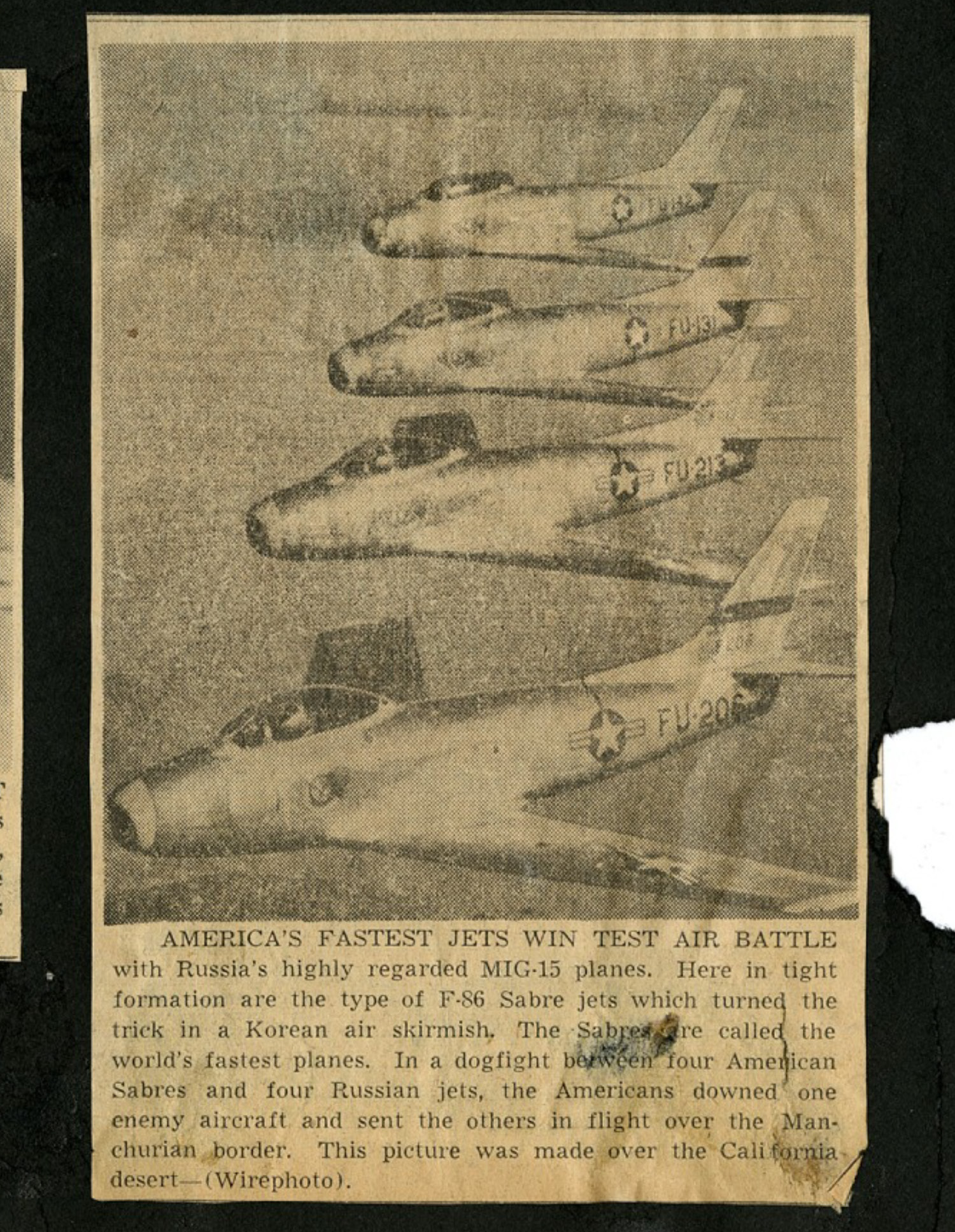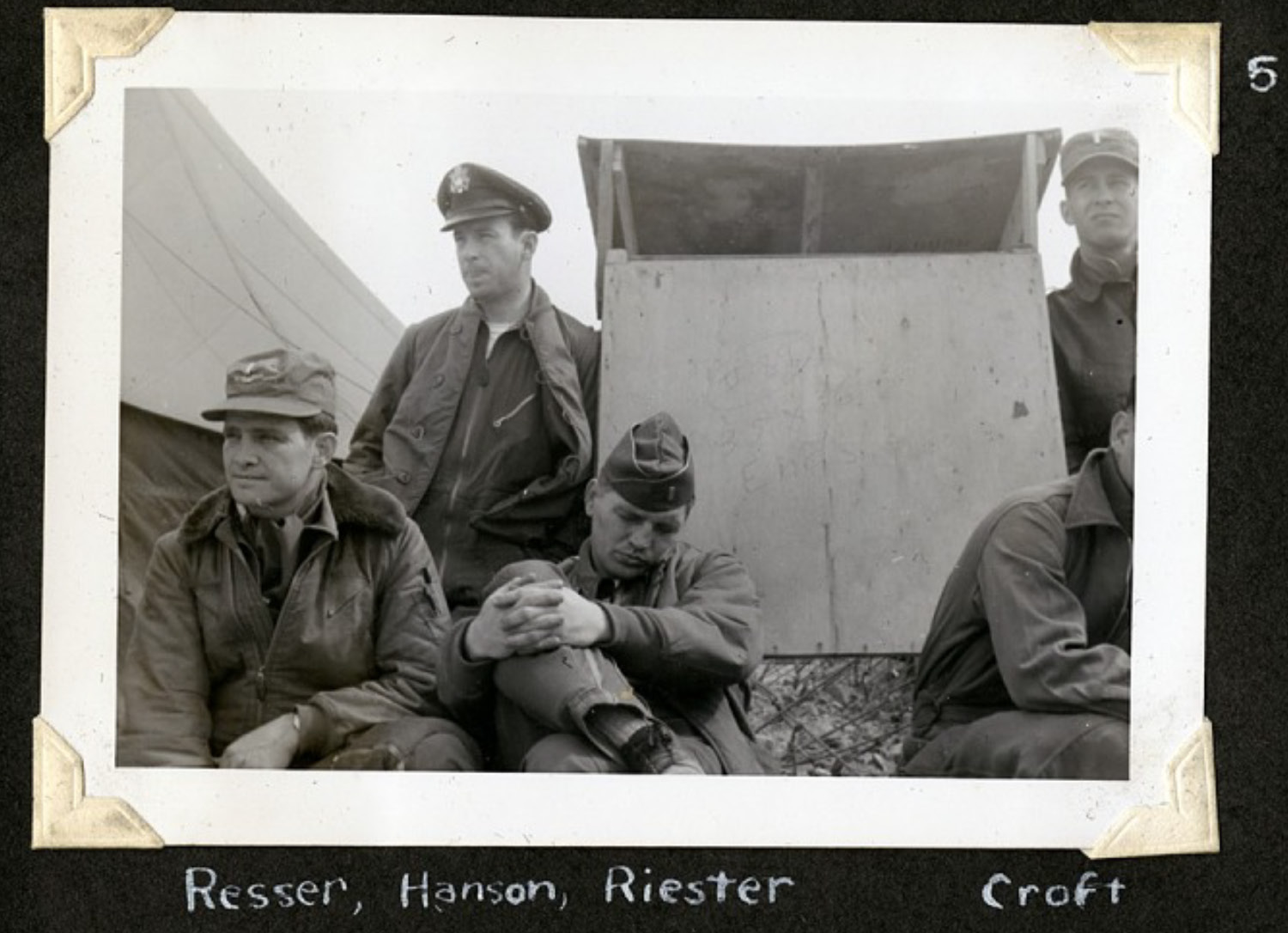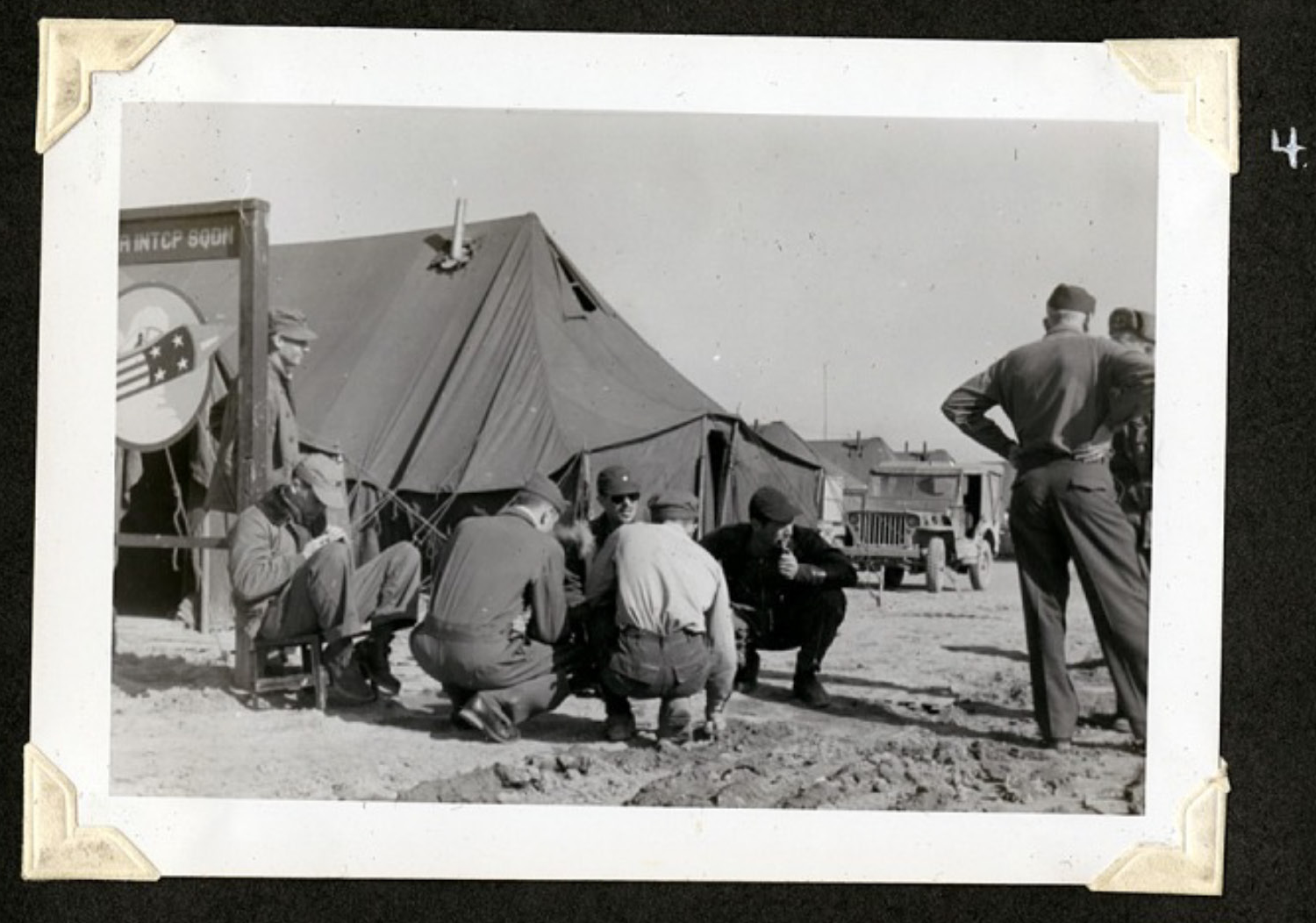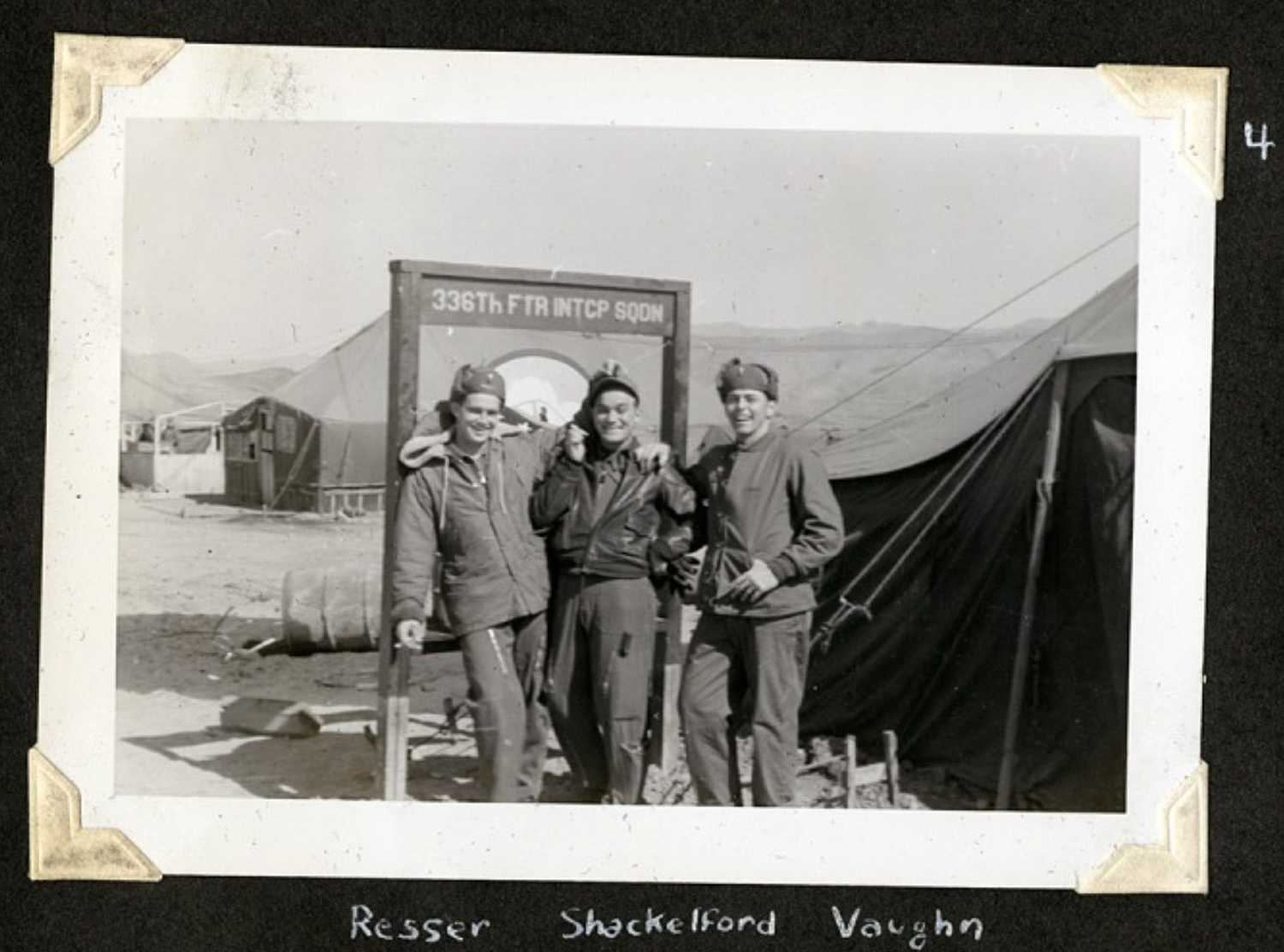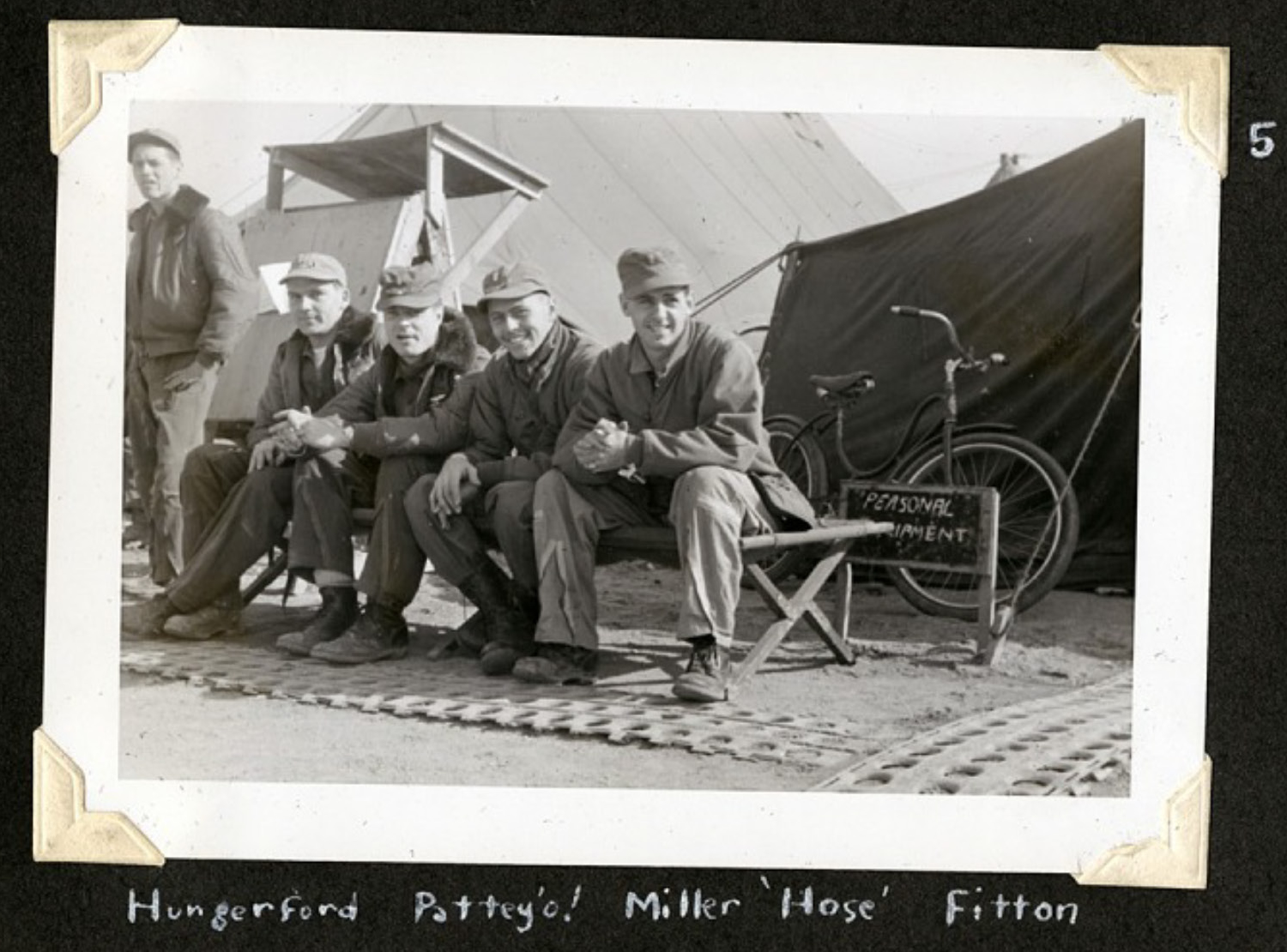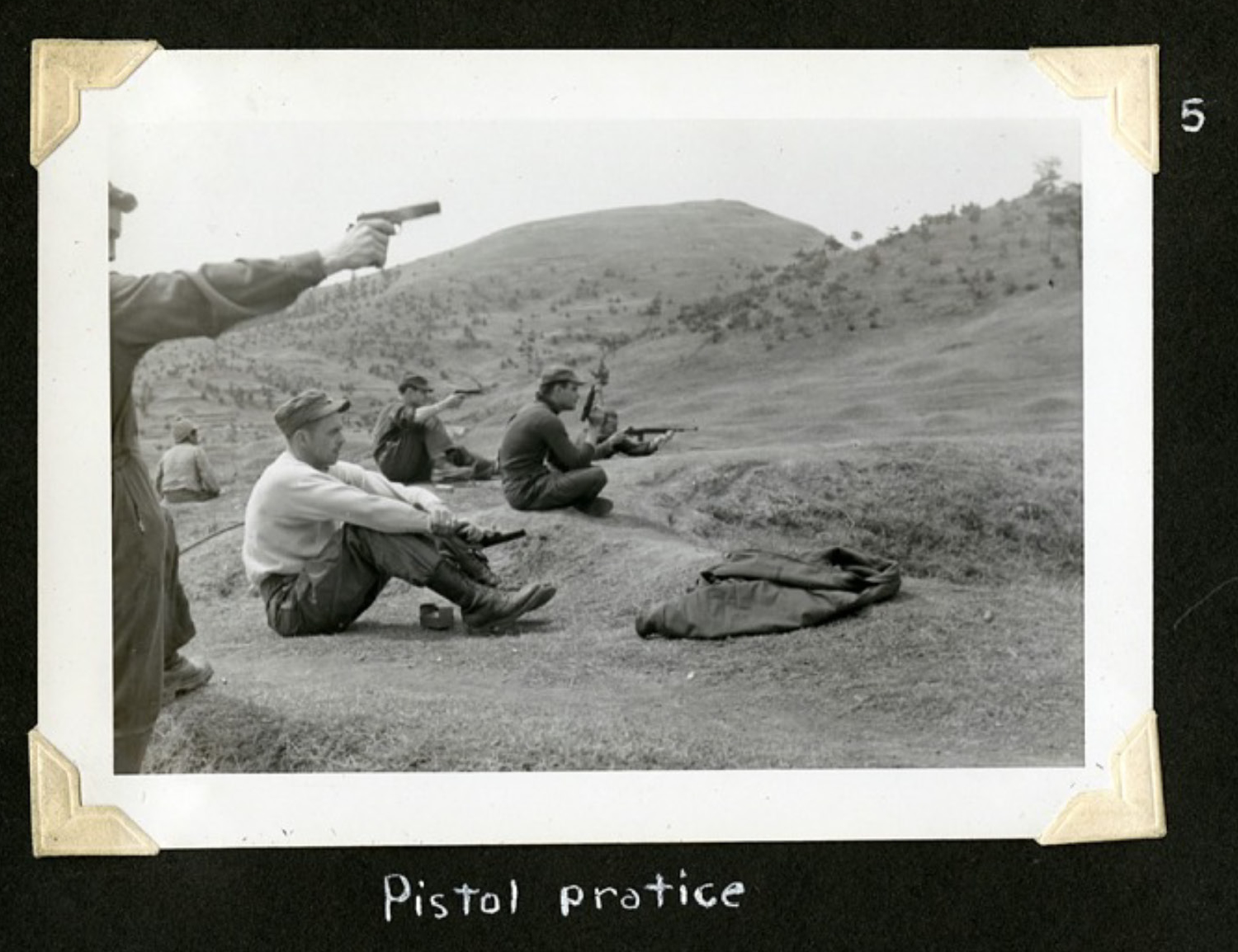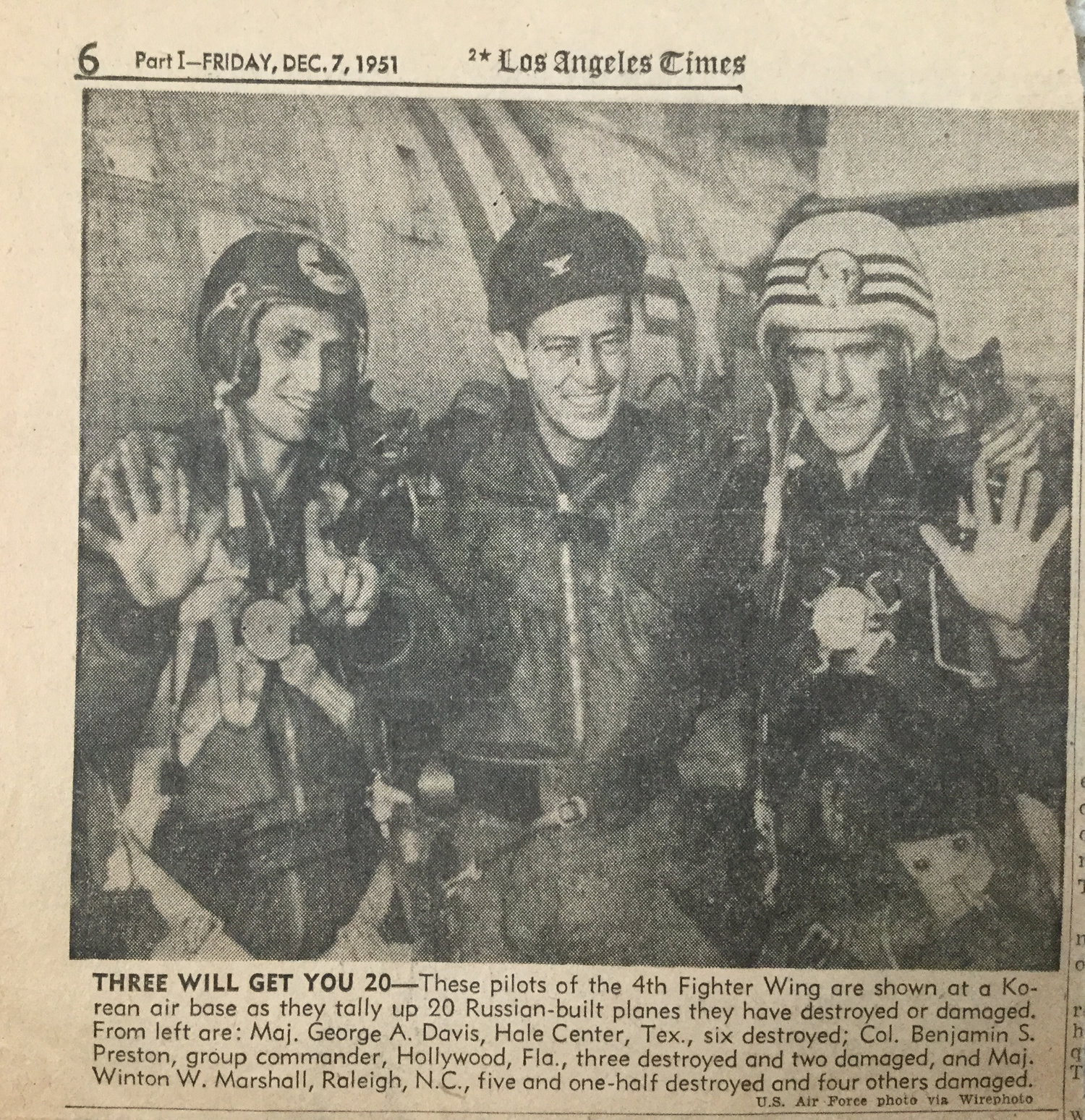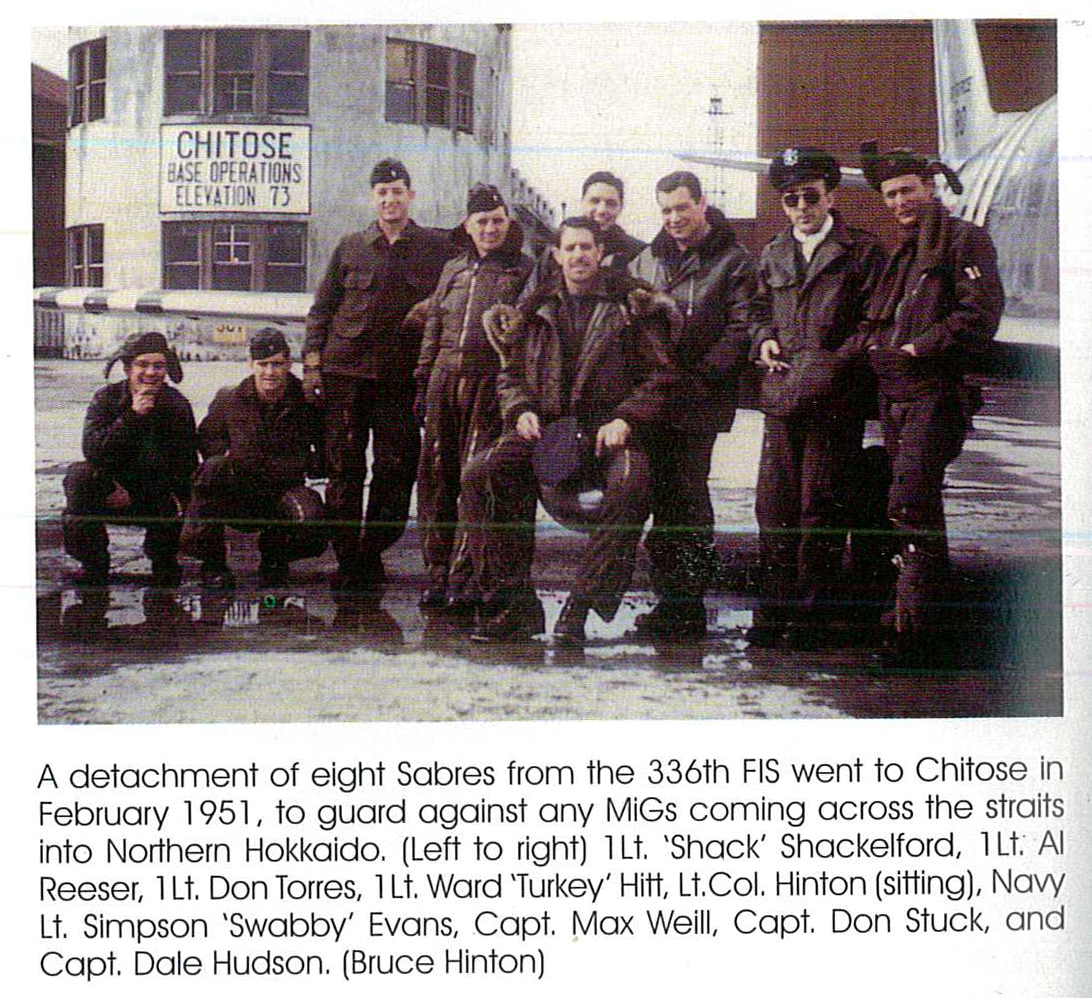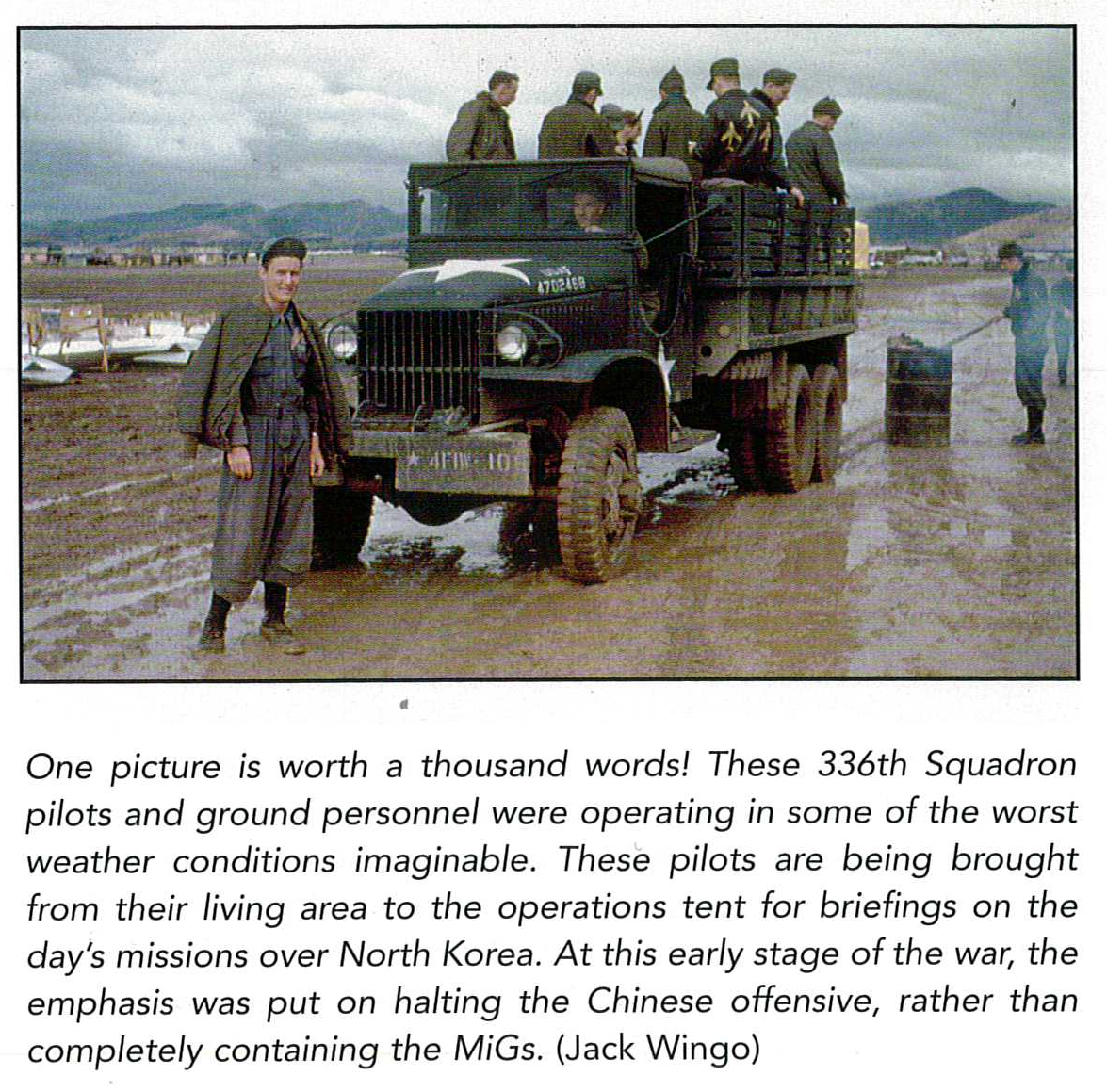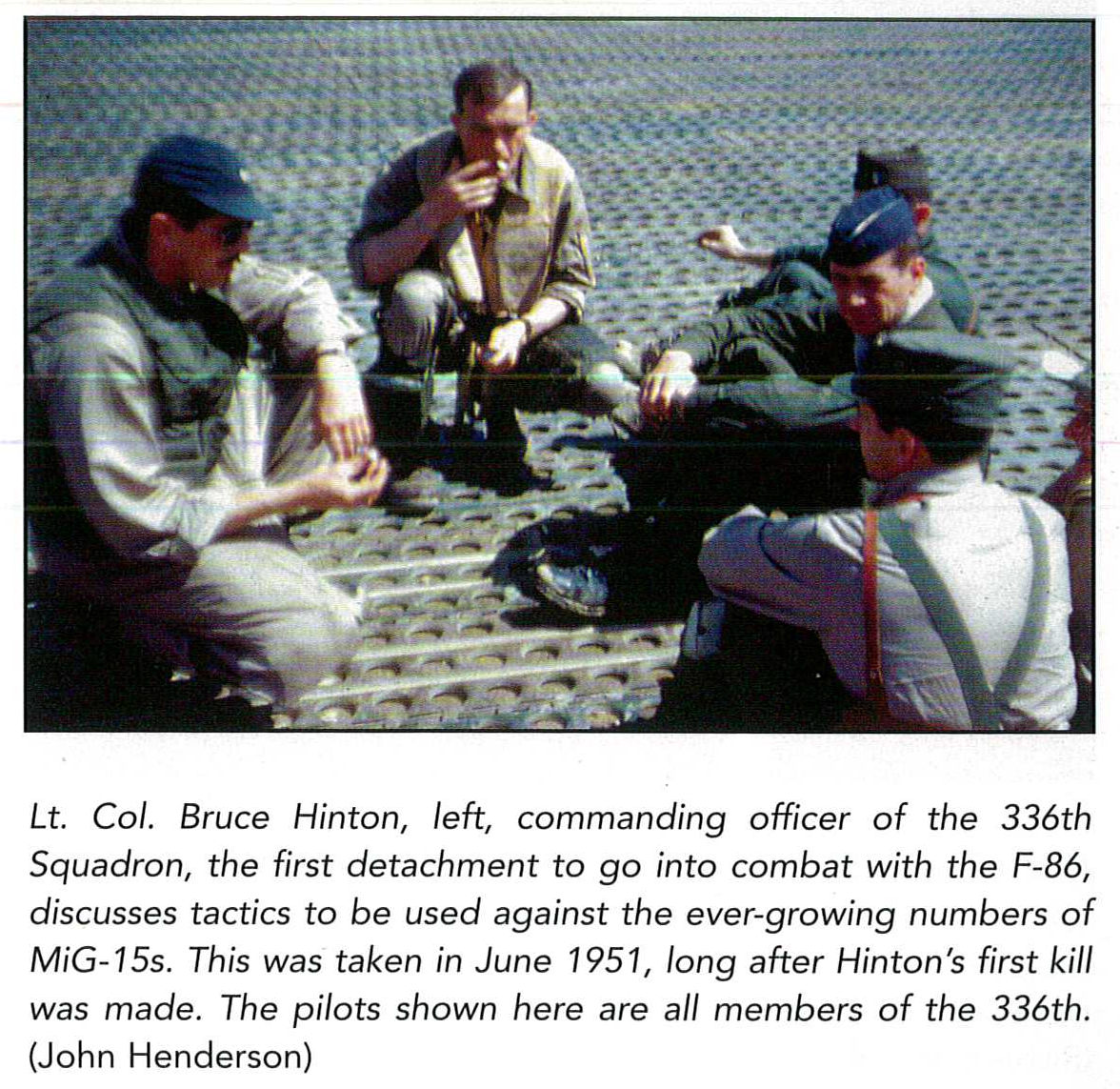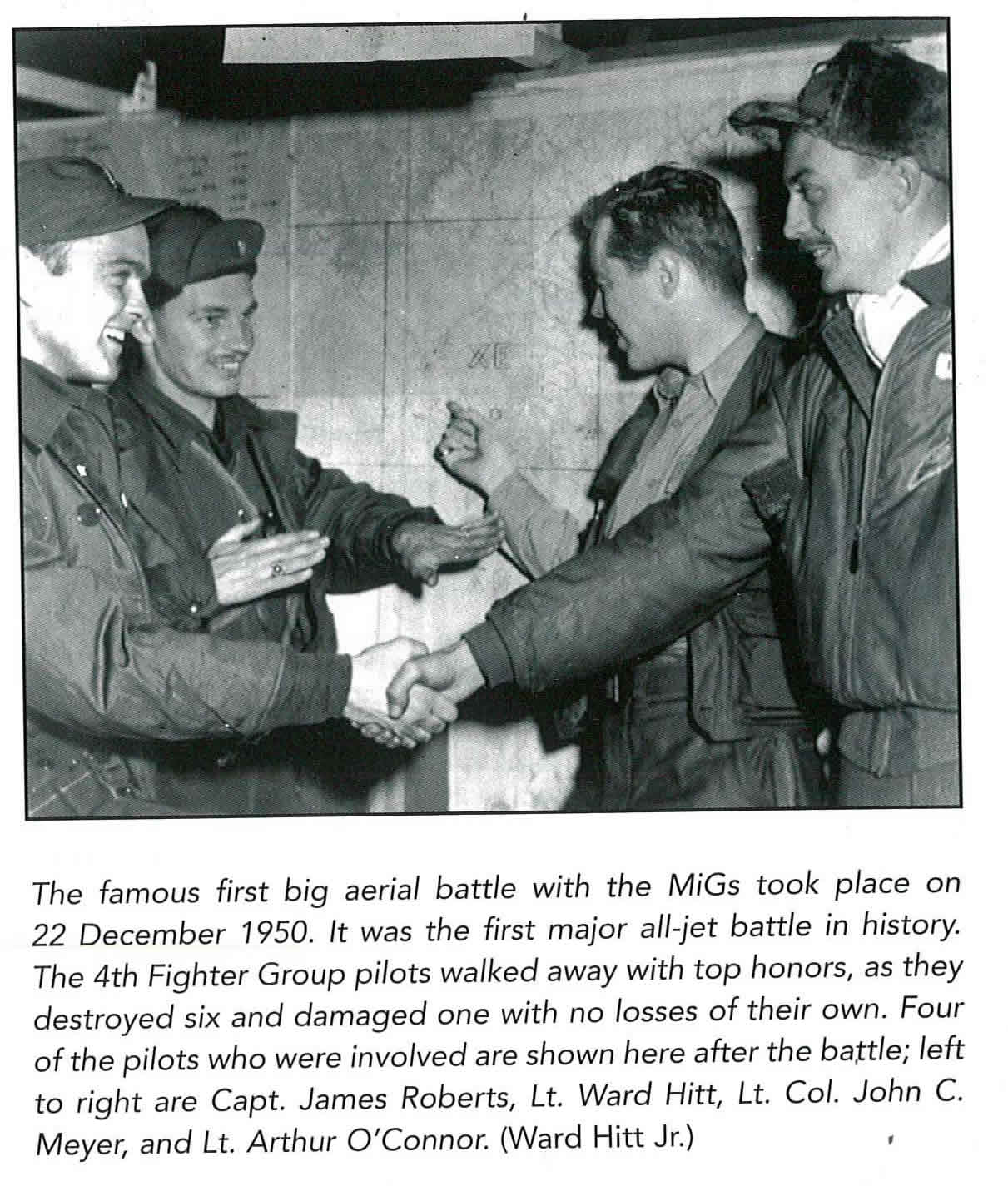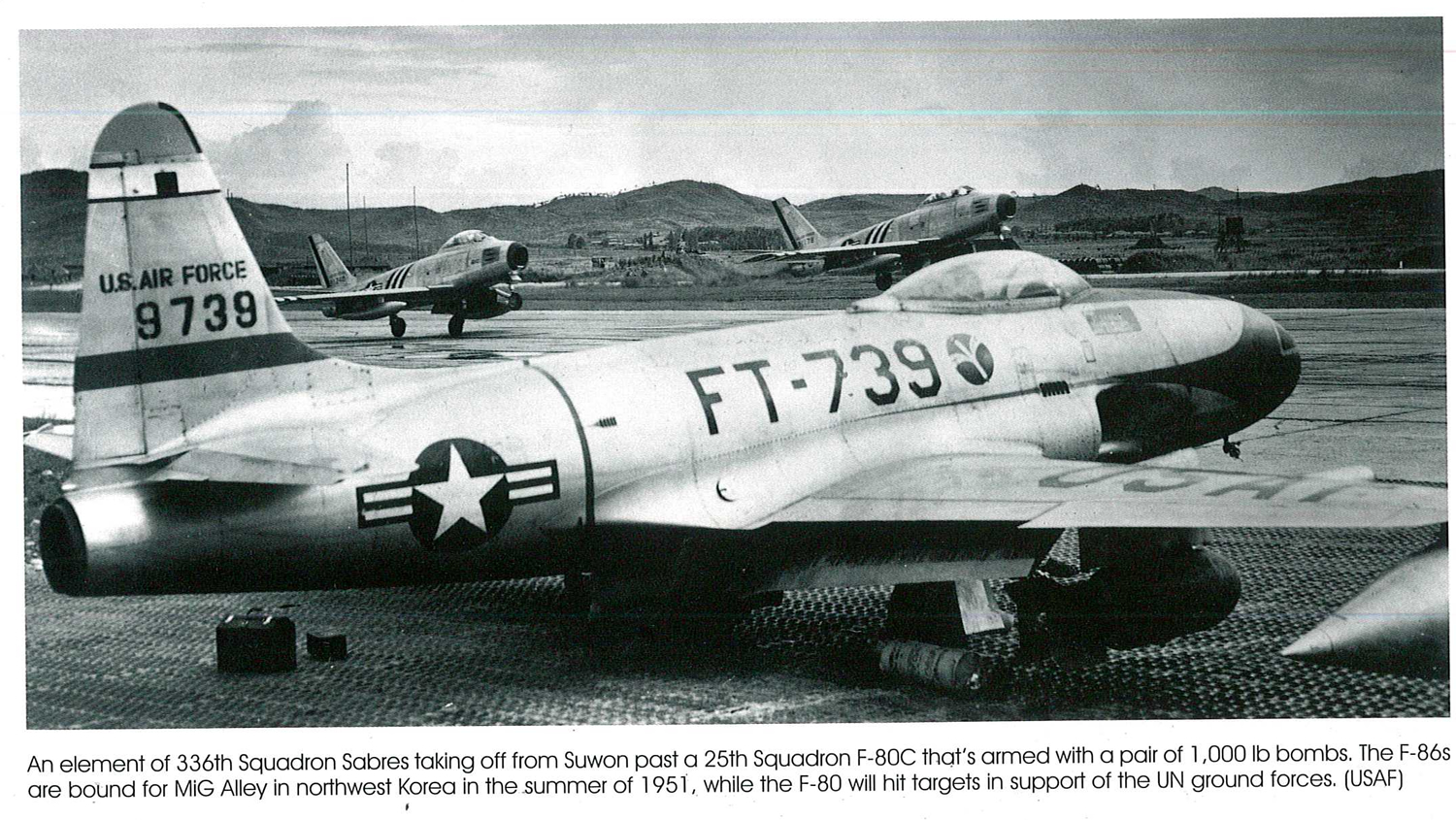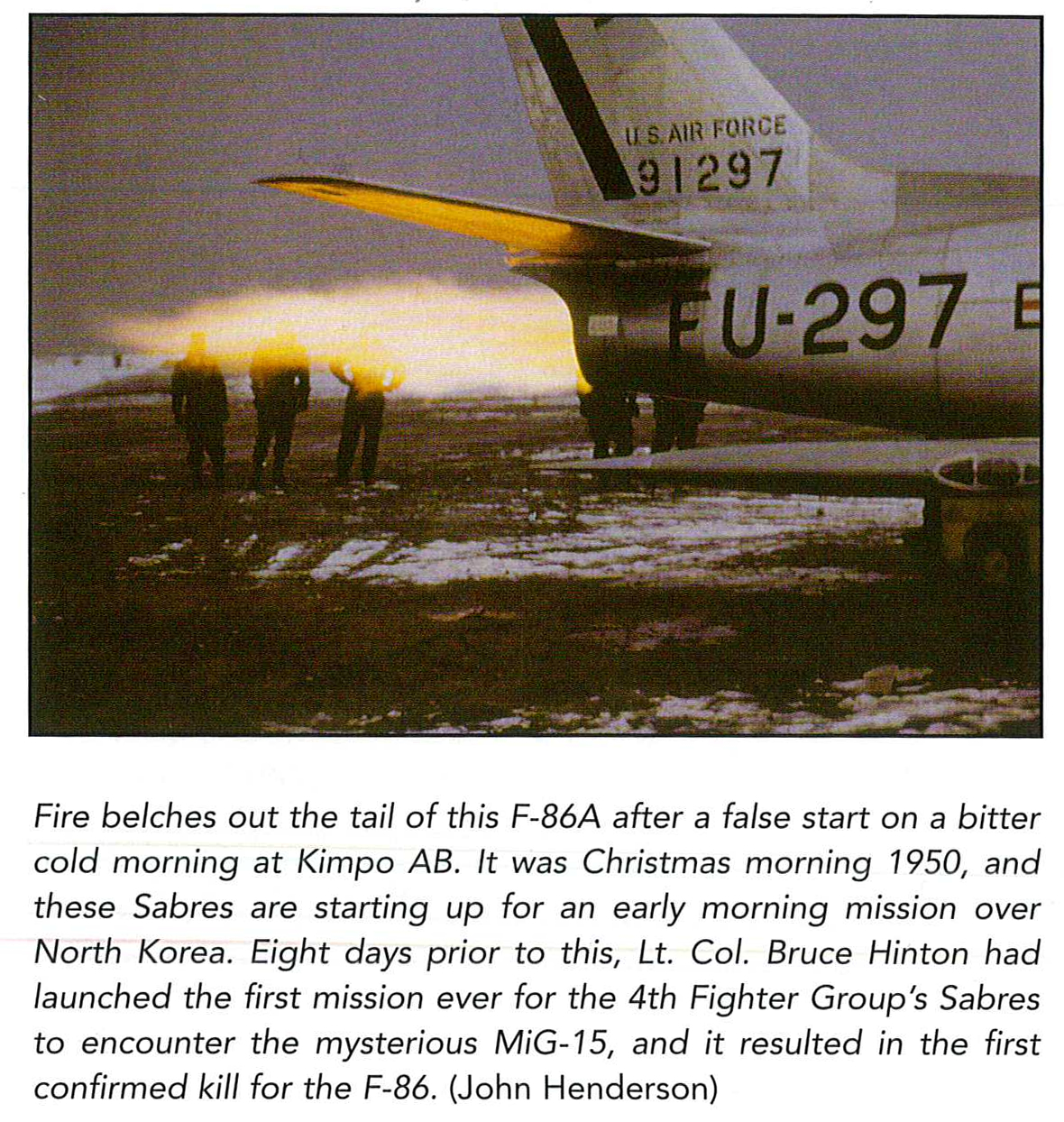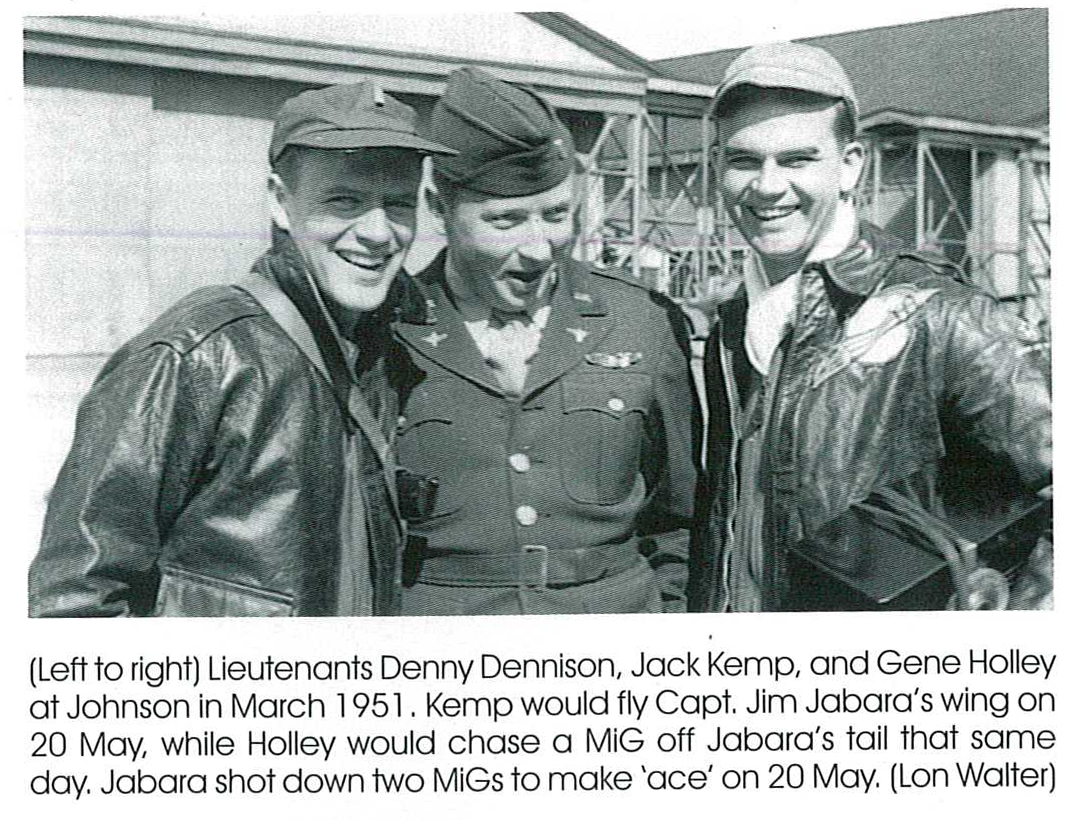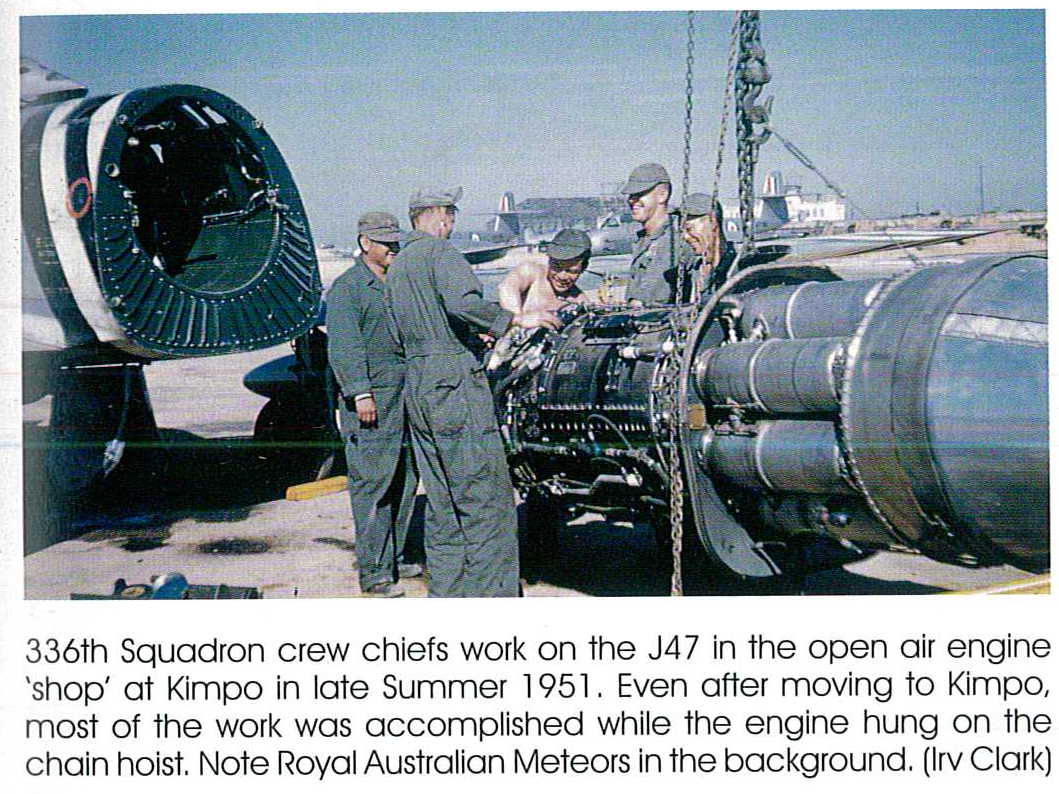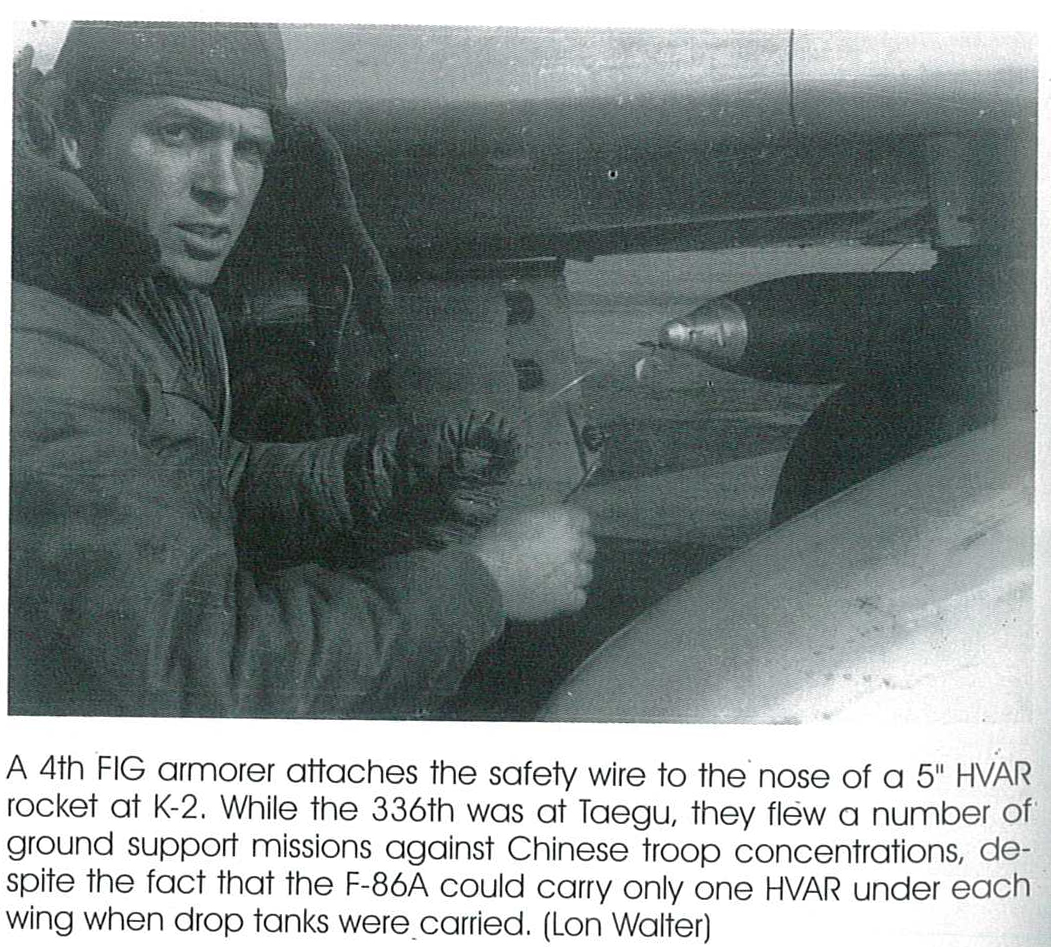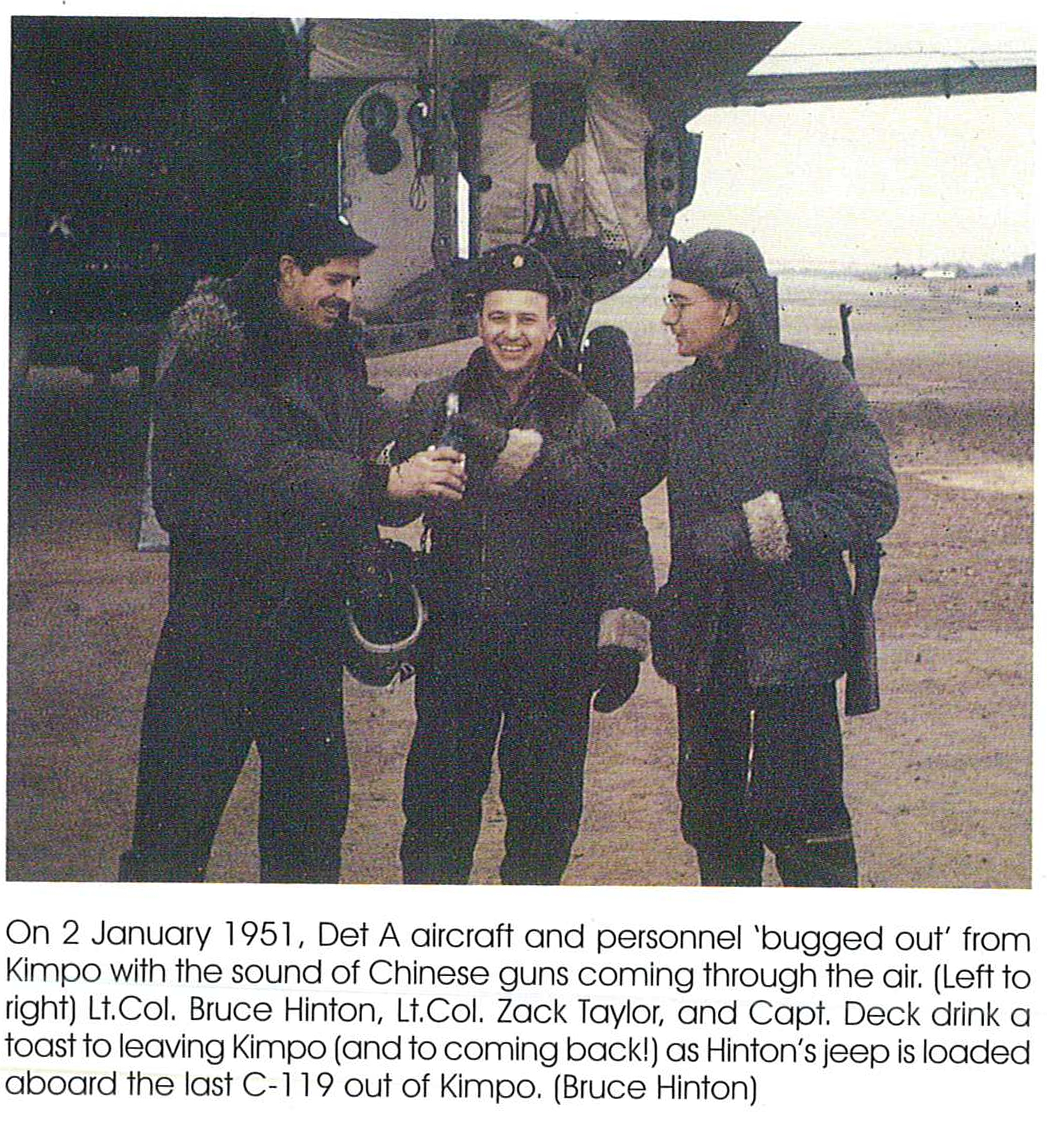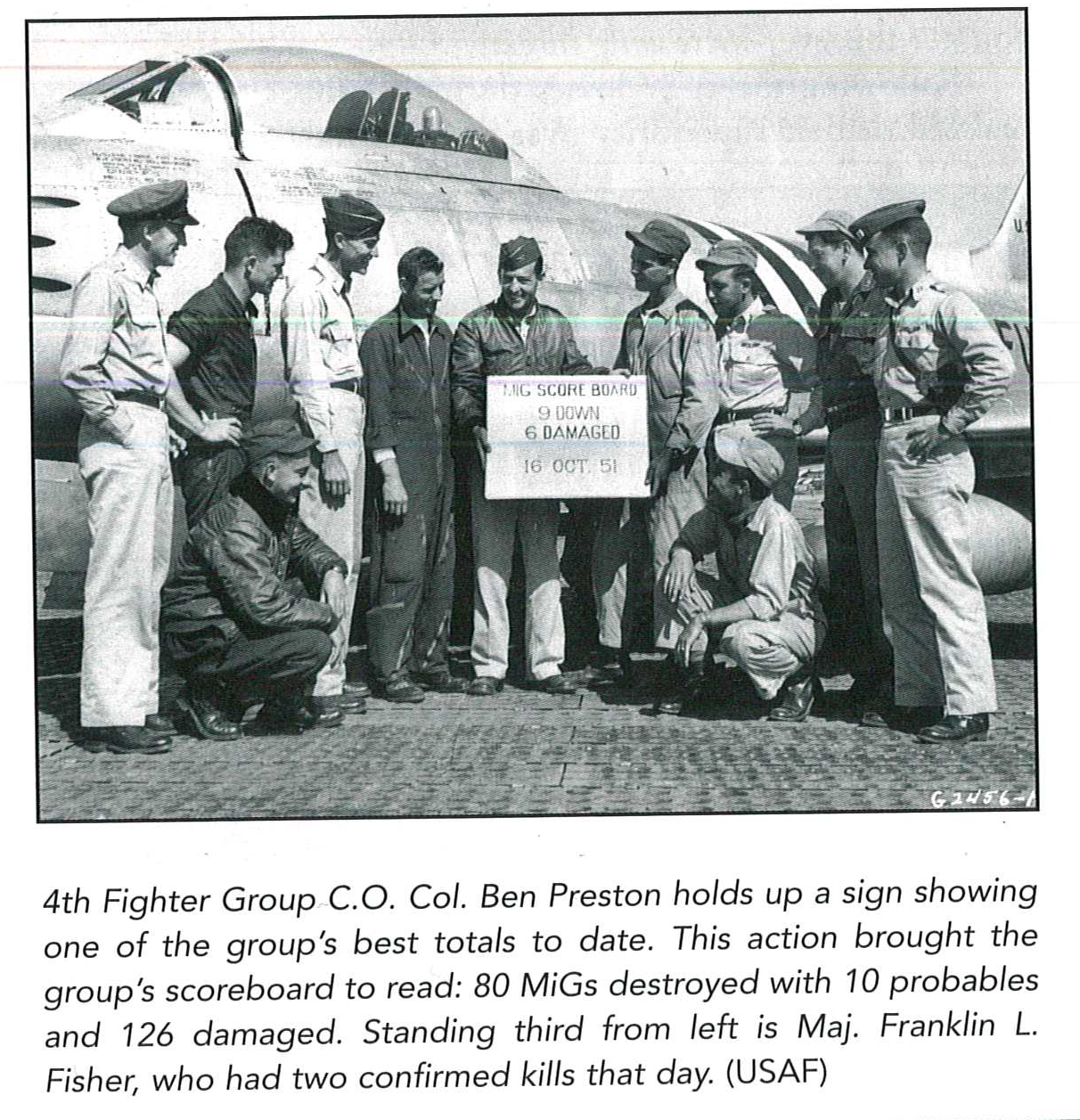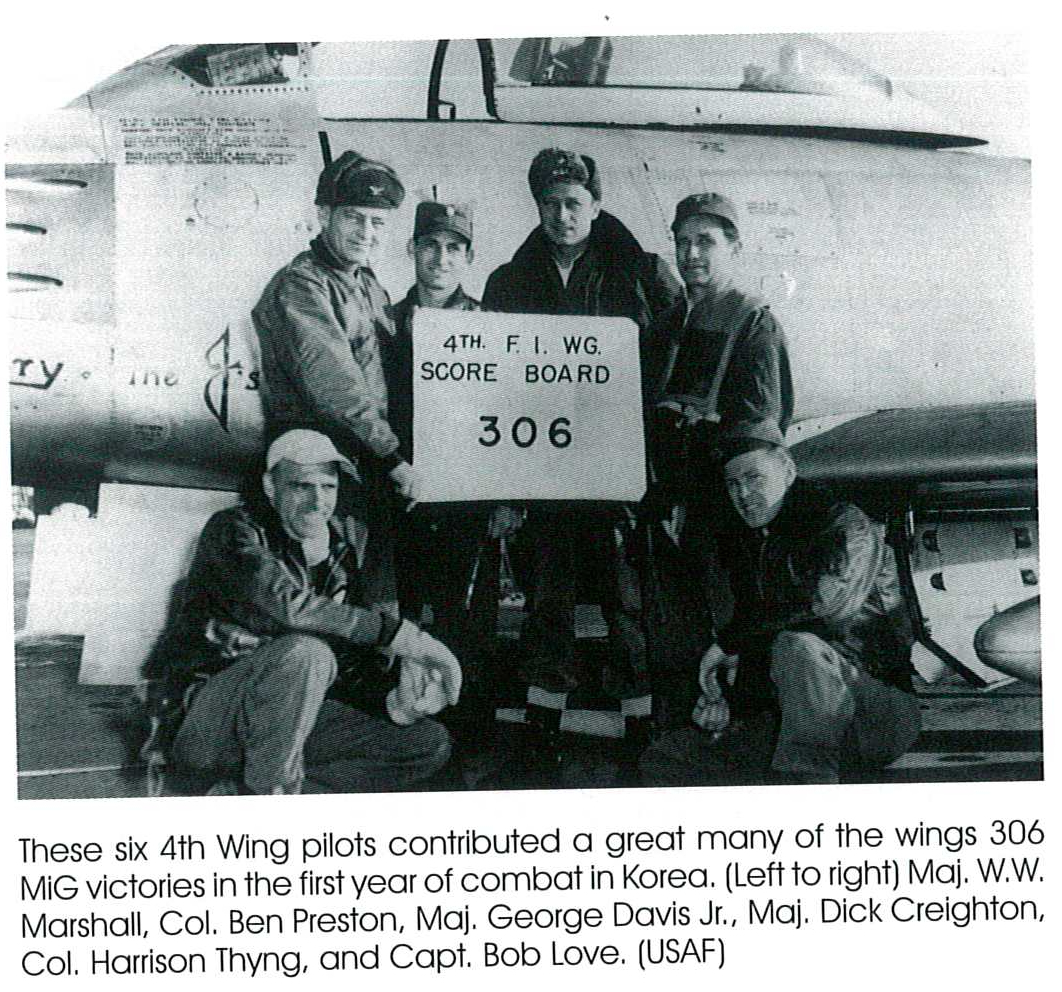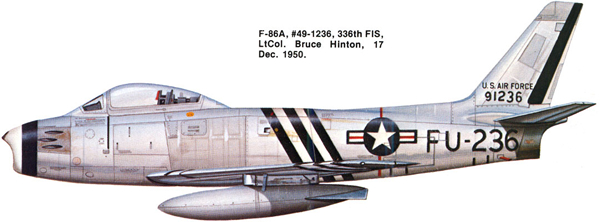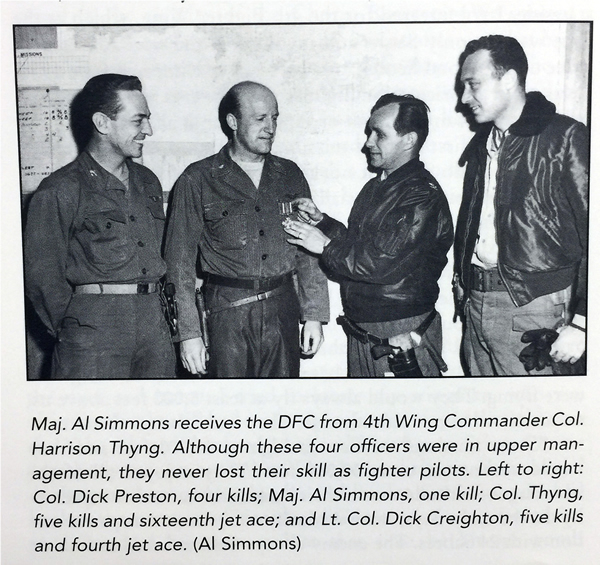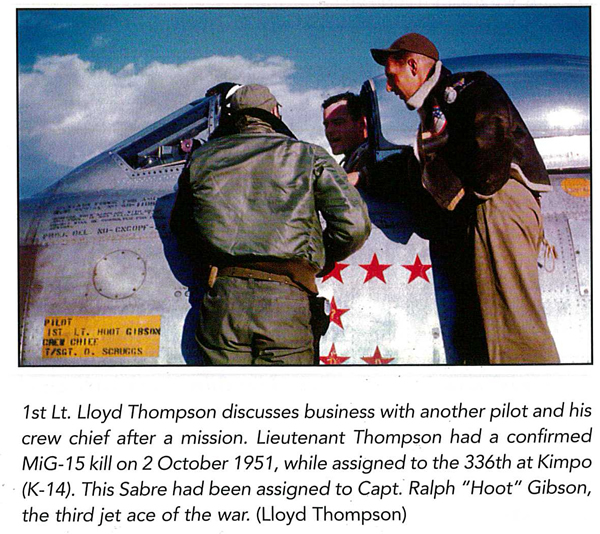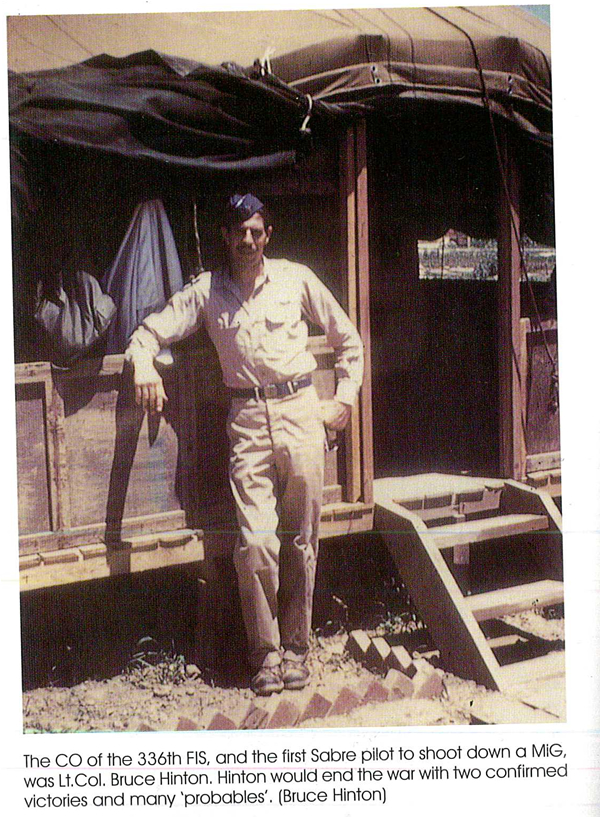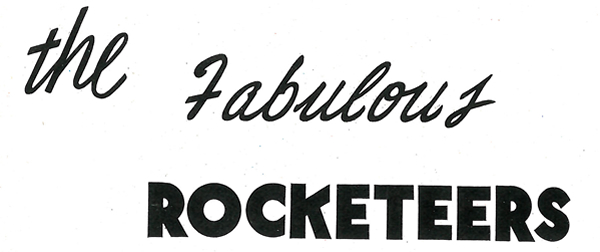1950
June 25: North Korea
invaded South Korea. Simultaneously, North Korean troops made an
amphibious landing at Kangnung on the east coast just south of the
38th parallel. North Korean fighter aircraft attacked airfields
at Kimpo and Seoul, the South Korean capital, destroying one USAF
C-54 on the ground at Kimpo.
John J. Muccio, US ambassador
to South Korea, relayed to President Harry S. Truman a South Korean
request for US air assistance and ammunition. The UN Security Council
unanimously called for a cease-fire and withdrawal of the North
Korean Army to north of the 38th parallel. The resolution asked
all UN members to support the withdrawal of the NKA and to render
no assistance to North Korea.
Maj. Gen. Earle E. Partridge,
who was commander, 5th Air Force, but serving as acting commander
of Far East Air Forces (FEAF), ordered wing commanders to prepare
for air evacuation of US citizens from South Korea. He increased
aerial surveillance of Tsushima Strait between Korea and Japan.
The 20th Air Force placed two squadrons of the 51st Fighter-Interceptor
Wing (FIW) on air defense alert in Japan.
June 26: North Koreans
captured Chunchon, Pochon, and Tongduchon, South Korea. The US Seventh
Fleet sailed north from the Philippines. South Korea requested 10
F-51s from the US Air Force to supplement the South Korean air force's
AT-6s and liaison-type airplanes. In continued preparation for air
evacuation of US citizens from Korea, FEAF traded C-54s for C-47s
from all over the Far East, because the latter could land on smaller
airfields.
USAF SB-17 aircraft provided
rescue cover for the initial evacuation by sea of US citizens from
Seoul. Beginning in the early morning, 682 people boarded the Norwegian
merchant ship Reinholte, which finally left Inchon Harbor at 4:30
p.m., bound for Sasebo, Japan.
F-82G Twin Mustang fighters
of the 68th Fighter All-Weather Squadron (FAWS) provided air cover
for freighters, including the Reinholte. Fifth Air Force also flew
escort and surveillance sorties, some over the straits between Japan
and Korea and some over the Seoul area.
June 27: The UN Security
Council called on all UN members to aid South Korea. President Truman
directed US air and sea forces to assist South Korea, and Gen. Douglas
MacArthur, Commander in Chief, Far East Command, ordered FEAF to
attack North Korean units south of the 38th parallel. Lt. Gen. George
E. Stratemeyer, commander, FEAF, who was in the United States when
the war broke out, returned to Japan. (Partridge then served as
acting FEAF vice commander until July 7.) FEAF used Kimpo airfield,
near Seoul, and Suwon airfield, some 20 miles south of Seoul, for
emergency air evacuation of 748 persons to Japan on C-54s, C-47s,
and C-46s. Cargo aircraft assigned to the 374th Troop Carrier Wing
(TCW) and FEAF headquarters accomplished the airlift, escorted by
F-82s, F-80 jet fighters, and B-26 light bombers.
Fifth Air Force embarked
on a mission to establish air superiority over South Korea, partially
to prevent the North Korean air force from attacking South Korean
forces and to protect evacuation forces. When North Korean aircraft
appeared over Kimpo and Suwon airfields, the USAF aircraft flying
air cover engaged the enemy in the first air battle of the war.
Maj. James W. Little, commander, 339th FAWS, fired the first shot.
Lt. William G. Hudson, 68th FAWS, flying an F-82, with Lt. Carl
Fraser as his radar observer, scored the first aerial victory. In
all, six USAF pilots shot down over Kimpo seven North Korean propeller-driven
fighters, the highest number of USAF aerial victories in one day
for all of 1950.
Fifth Air Force B-26s,
flying from Ashiya AB, Japan, attacked enemy targets in South Korea
in the evening, but bad weather made the raids ineffective. Fifth
Air Force established an advance echelon at Itazuke AB, Japan, and
moved B-26s to Ashiya and RF-80s to Itazuke for missions in Korea.
The 8th Fighter-Bomber Wing (FBW) organized a composite unit of
USAF and South Korean airmen at Taegu airfield, South Korea, to
fly F-51D Mustangs.
June 28: North Koreans
captured Seoul, forcing the South Korean government to move to Taejon.
Enemy forces also occupied nearby Kimpo airfield and, on the east
coast, Mukho naval base below Kangnung. North Korean Yaks strafed
Suwon airfield, destroying one B-26 and one F-82.
In the first USAF airstrikes
of the Korean War, more than 20 B-26s of the 3rd Bombardment Group
(BG) attacked Munsan railroad yards near the 38th parallel and rail
and road traffic between Seoul and the North Korean border. One,
heavily damaged by enemy anti-aircraft fire, crashed on its return
to Ashiya, killing all aboard. Flying from Kadena AB, Okinawa, the
19th BG, in the first B-29 medium bomber strikes of the Korean War,
attacked a railroad bridge and targets of opportunity such as tanks,
trucks, and supply columns along North Korean invasion routes.
Bad weather over Japan
limited 5th Air Force sorties, but 18 fighters flew close air support
and interdiction missions. More than 30 F-80s from Itazuke escorted
C-54s and B-26s flying between Japan and Suwon. First Lt. Bryce
Poe II, in an RF-80A, flew USAF's first jet combat reconnaissance
mission, photographing the NKA advance elements and reporting clearing
weather over the front in Korea. C-54s and C-47s flew out the last
of 851 US citizens evacuated by air from South Korea. FEAF transports
airlifted 150 tons of ammunition from Tachikawa AB, Japan, to Suwon.
June 29: North Korean
forces captured Kapyong and massed on the north shore of the Han
River. Heavy fighting raged in the Kimpo area. North Korean aircraft
bombed and strafed Suwon airfield, destroying a C-54 on the ground.
The 21st Troop Carrier Squadron (TCS) moved from Clark AB in the
Philippines to Tachikawa AB.
MacArthur directed Stratemeyer
to concentrate air attacks on the Han River bridges and North Korean
troops massing north of the river. B-26s attacked the bridges, and
5th Air Force F-80s patrolled the Han River area. F-82s from the
86th FAWS, using jettisonable fuel tanks, attacked with napalm for
the first time in the war. Pilots of the 35th and 80th Fighter-Bomber
Squadrons (FBS) shot down five North Korean airplanes that were
attacking Suwon airfield. Eight B-29s of the 19th BG attacked enemy-held
Kimpo airfield and the Seoul railroad station, reportedly killing
a large number of enemy troops. As the medium bombers turned toward
Kadena, enemy aircraft attacked the formation, enabling B-29 gunners
to shoot down, for the first time in the war, one of the opponent's
airplanes.
MacArthur authorized
FEAF attacks on airfields in North Korea. In the first USAF attack
on North Korea, 18 B-26s of the 3rd BG attacked Heijo airfield near
Pyongyang, the North Korean capital, claiming up to 25 enemy aircraft
destroyed on the ground. The 8th Tactical Reconnaissance Squadron
(TRS) began photographic reconnaissance of North Korean airfields.
Using RB-29 aircraft, the 31st Strategic Reconnaissance Squadron
(SRS) (Photographic) also started operations over Korea from Yokota
AB, Japan.
June 30: President Truman
ordered the use of US ground troops in Korea and a naval blockade
of North Korea. The Royal Australian Air Force (RAAF) No. 77 Squadron
arrived in Korea to support 5th Air Force, to which it was subsequently
attached. North Korean forces reached Samchock on the east coast
and in the west crossed the Han River, threatening Suwon airfield.
FEAF began evacuation of the airfield and authorized improvement
of Kumhae airfield, 11 miles northwest of Pusan, to compensate for
the presumed loss of Kimpo and Suwon. The first 5th Air Force Tactical
Air Control Parties (TACPs) arrived at Suwon. B-26s from the 3rd
BG strafed, bombed, and rocketed enemy troops and traffic in the
Seoul area. One flight hit a stalled enemy column. Fifteen B-29s
attacked railroad bridges, tanks, trucks, and troop concentrations
on the north bank of the Han River in the Seoul area.
July 1: North Korean
forces occupied Suwon, denying FEAF use of its airstrip. The 374th
TCW began airlifting the US Army 24th Infantry Division, the first
US troops to enter Korea since the war began, from Itazuke to Pusan.
Fifth Air Force gained operational control of the RAAF No. 77 Squadron.
July 3: FEAF continued
to airlift US Army troops to Korea but substituted smaller C-46s
and C-47s for C-54s, which damaged the Pusan runways. Pilots of
four F-80s on the first mission with external rockets reported excessive
drag that shortened their range.
July 5: A Joint Operations
Center opened at Taejon to provide better close air support for
US ground forces, which, near Osan, battled, for the first time,
North Korean troops.
July 6: In the first
strategic air attacks of the war, nine B-29s bombed the Rising Sun
oil refinery at Wonsan and a chemical plant at Hungnam in North
Korea. B-26s hitting advancing enemy armored columns reported six
to 10 tanks destroyed.
July 7: Partridge resumed
active command of 5th Air Force. The UN Security Council established
the UN Command, designated the United States as executive agent
for prosecuting the Korean War, and requested that the US President
appoint a UN Commander. The RAAF No. 77 Squadron, representing Australia's
contribution to airpower in the theater, was attached to FEAF.
July 8: President Truman
designated MacArthur as Commander in Chief of UN forces in the Korean
Theater. FEAF organized Bomber Command (Provisional) at Yokota,
with Maj. Gen. Emmett O'Donnell Jr. as commander. Lt. Oliver Duerksen
and Lt. Frank Chermak provided from radio-equipped jeeps the first
forward air control to direct air-to-ground attacks in the Korean
War.
July 9: Forward air controllers
began using L-5G and L-17 liaison airplanes to direct F-80 airstrikes
in support of ground forces.
July 10: Carefully timing
airstrikes to coincide with the departure of USAF counterair patrols
for refueling, four enemy Yaks bombed and strafed the USA 19th Infantry
Regiment at Chongju. The 5th Air Force began using T-6 trainer aircraft
for forward air control missions, because liaison airplanes were
not fast enough to elude enemy fire. F-80s caught an enemy convoy
stopped at a bombed-out bridge near Pyongtaek. Along with B-26s
and F-82s, they attacked the convoy and claimed destruction of 117
trucks, 38 tanks, and seven half-tracks.
July 12: Four Military
Air Transport Service airplanes arrived in Japan from the United
States carrying 58 large 3.5-inch rocket launchers (bazookas) and
shaped charges desperately needed to destroy North Korean tanks.
Enemy fighters shot down one B-29, one B-26, and one L-4, the first
North Korean aerial victories. In its first mission, the 92nd BG,
flying from its base at Yokota, bombed the Seoul marshaling yards.
July 13: Forty-nine FEAF
Bomber Command B-29s from the 22nd BG and the 92nd BG bombed marshaling
yards and an oil refinery at Wonsan, North Korea. The 3rd Air Rescue
Squadron (ARS) began flying SB-17 aircraft off the Korean coast
to drop rescue boats to downed B-29 crews. Advancing enemy troops
forced the airborne control function to move southeastward from
Taejon to Taegu. Lt. Gen. Walton H. Walker, commander, Eighth Army
in Korea, assumed command of all US ground forces in Korea.
July 14: The 35th Fighter-Interceptor
Group (FIG), moving from Japan to a new airfield at Pohang, became
the first USAF fighter group to be based in South Korea during the
war. The 6132nd Tactical Air Control Group (Provisional), the first
tactical air control unit in the war, activated at Taegu under Col.
Joseph D. Lee. It provided forward, ground-based air control for
aircraft providing close air support of UN forces. A 5th Air Force-Eighth
Army Joint Operations Center began to function at Taegu, and 5th
Air Force activated its advance headquarters at Itazuke.
July 15: Carrier aircraft
on missions over Korea began to report to the Joint Operations Center
at Taegu. The 51st Fighter Squadron (FS) (Provisional) at Taegu
flew the first F-51 Mustang combat missions in Korea. A 5th Air
Force operation order assigned "Mosquito" call signs to
airborne controllers in T-6 airplanes, and the name became the identifier
for the aircraft.
July 17: Three B-29s
accidentally bombed friendly civilians in Andong, South Korea, illustrating
the dangers of using B-29s on close air support missions.
July 18: The 19th BG
modified some B-29s for the use of radio-guided bombs (razon) to
enable them to bomb bridges more accurately.
July 19: In a dogfight
near Taejon, 5th Air Force F-80s shot down three enemy Yaks, the
highest daily number of aerial victories this month. In the campaign
to establish air superiority in the theater, seven F-80s of the
8th Fighter-Bomber Group (FBG), led by Lt. Col. William T. Samways,
destroyed 15 enemy airplanes on the ground near Pyongyang.
July 20: Despite FEAF
close air support, the NKA took Taejon, forcing the remnants of
the USA 24th Infantry Division to withdraw to the southeast. US
ground forces defending Taejon had suffered, in seven days, almost
30 percent casualties. Maj. Gen. Otto P. Weyland arrived in the
Far East to assume the position of FEAF vice commander for operations.
Fifth Air Force pilots in F-80s shot down two more enemy aircraft,
the last aerial victories until November. Enemy air opposition by
this time had virtually disappeared, a sign of UN air superiority.
July 22: The US Navy
aircraft carrier USS Boxer arrived in Japan with 145 USAF F-51s
aboard. The 3rd ARS deployed the first H-5 helicopter in Korea to
Taegu.
July 23: The 6132nd Tactical
Air Control Group (Provisional) established a Tactical Air Control
Center adjacent to the Joint Operations Center at Taegu.
July 24: Fifth Air Force
moved its advance headquarters from Japan to Taegu, locating it
next to Eighth Army headquarters in Korea for ease of communication
and coordination. FEAF established the advance headquarters as 5th
Air Force in Korea. The UN Command was formally established in Tokyo,
commanded by MacArthur, who assigned responsibility for ground action
in Korea to Eighth Army commander Walker; naval action to Vice Adm.
C. Turner Joy, commander, Naval Forces, Far East; and air action
to Stratemeyer, commander, FEAF.
July 28: The first amphibious
SA-16 Albatross aircraft arrived in Japan for air rescue service
off the Korean coast.
July 30: Forty-seven
B-29s bombed the Chosen nitrogen explosives factory at Hungnam on
the east coast of North Korea.
July 31: As North Korean
troops continued to advance, Walker ordered UN forces to withdraw
to a new defensive line along the Naktong River.
Aug. 1: The 6147th Tactical
Control Squadron (Airborne) was established at Taegu for forward
air control operations with T-6 aircraft. Forty-six B-29s of the
22nd and 92nd BGs bombed the Chosen nitrogen fertilizer factory
at Hungnam, the largest chemical plant in the Far East.
Aug. 2-3: In response
to an Eighth Army request, the 374th Troop Carrier Group (TCG) airlifted
300,000 pounds of equipment and supplies from Ashiya to Korea in
24 hours, a new airlift record for the war.
Aug. 3: The 18th FBG
headquarters moved from Japan to Taegu for expanded F-51 operations.
SA-16 amphibious rescue aircraft began flying sorties along the
Korean coast to retrieve US pilots forced down during operations.
Aug. 4: B-29 attacks
against key bridges north of the 38th parallel initiated FEAF Interdiction
Campaign No. 1.
Aug. 5: Maj. Louis J.
Sebille, commander, 67th FBS, dived his damaged F-51 into an enemy
position. For this action he posthumously received the first Medal
of Honor awarded to a USAF member in Korea. In the first SA-16 rescue
operation of the war, Capt. Charles E. Shroder led a crew in saving
a Navy pilot who had crashed into the sea off the Korean coast.
Aug. 6: FEAF began nightly
visual reconnaissance of enemy supply routes.
Aug. 7: The 98th BG flew
its first mission in the Korean War shortly after 20 of its B-29s
landed at Yokota. The 822nd Engineer Aviation Battalion completed
the first phase of new runway construction, which allowed expanded
USAF operations at Taegu.
Aug. 8: The enemy threat
to Taegu forced the 18th FBG to evacuate to Ashiya. The 307th BG,
newly based in Okinawa, flew its first mission.
Aug. 10: The US Air Force
called up two Reserve units, the 437th TCW and the 452nd Bombardment
Wing (BW), for Korean War service. Forty-six B-29s of the 22nd,
92nd, and 98th BGs hit an oil refinery and railroad shops at Wonsan,
North Korea.
Aug. 11: C-119 Flying
Boxcars began airlifting trucks from Tachikawa AB in Japan to Taegu.
Aug. 12: USN Task Force
77 stopped close air support and interdiction strikes in South Korea
and moved up Korea's west coast to attack interdiction targets in
North Korea, leaving all air attacks in South Korea to FEAF. More
than 40 B-29s attacked the port of Rashin in northeastern Korea,
near the border of the Soviet Union.
Aug. 13: Endangered by
the NKA advance to Pohang, two squadrons of F-51s in the 35th FIG
moved from nearby Yonil airfield in South Korea to Tsuiki AB, Japan.
Aug. 16: Because of the
enemy threat to Taegu, the advance 5th Air Force headquarters moved
to Pusan. Ninety-eight B-29s carpet-bombed suspected enemy troop
concentrations in a 27-square-mile area near Waegwan northwest of
Taegu. The Superfortresses dropped more than 800 tons of 500-pound
bombs in the largest employment of airpower in direct support of
ground forces since the Normandy invasion of World War II. Subsequent
reconnaissance showed little destruction of enemy troops or equipment,
because they had already left the area.
Aug. 19: US troops, aided
by airstrikes, drove North Korean forces in the Yongsan bridgehead
back across the Naktong River, ending the Battle of the Naktong
Bulge. Sixty-three B-29s attacked the industrial and port area of
Chongjin in northeastern Korea. Nine Superfortresses of the 19th
BG dropped 54 tons of 1,000-pound bombs on the west railway bridge
at Seoul, called the "elastic bridge" because repeated
air attacks had failed to bring it down. Thirty-seven USN dive bombers
from two aircraft carriers followed up the USAF attack. Aerial reconnaissance
the next day revealed that two spans had collapsed.
Aug. 19-20: Partridge
moved the Joint Operations Center from Taegu to Pusan because of
enemy advances.
Aug. 22: Anti-aircraft
gunners fired from across the Yalu River at RB-29s reconnoitering
the border, the first hostile Chinese action against UN aircraft.
Aug. 23: MacArthur set
Sept. 15 as the date to invade Inchon. The 19th BG flew the first
razon mission, but with the exception of one bomb that hit the railroad
bridge west of Pyongyang, the World War II-era control equipment
failed to guide the bombs to the target.
Aug. 25: FEAF directed
5th Air Force to maintain constant armed surveillance of enemy airfields
to prevent enemy buildup of air strength before the Inchon invasion.
Aug. 26: Fifth Air Force
organized the 47th and 48th TCSs (Provisional) at Tachikawa with
C-46s from all over the Far East theater to augment FEAF airlift
resources for UN offensives planned for September. At Ashiya, FEAF
organized the 1st Troop Carrier Task Force (Provisional) as the
nucleus of the new Combat Cargo Command (Provisional). Maj. Gen.
William H. Tunner, architect of the Hump airlift of World War II
and the Berlin airlift, 1948-49, assumed command of Combat Cargo
Command.
Aug. 27: Two USAF Mustang
pilots accidentally strayed into China and strafed an airstrip near
Antung, mistaking it for a North Korean airstrip at Sinuiju. The
Chinese exploited the incident to the fullest for propaganda and
diplomatic purposes. The 92nd BG sent 24 B-29s to Kyomipo to bomb
the largest iron and steel plant in Korea. FEAF experimented with
delayed action bombs to discourage enemy repairs on bridges.
Aug. 30: Before dawn
an experimental B-29 flare mission illuminated the Han River in
the Seoul area for a B-26 strike on an elusive enemy pontoon bridge,
but it could not be found. B-26s attacked the permanent bridge.
Aug. 31: After a 10-day
lull in the ground fighting, North Korean forces launched a coordinated
offensive against the entire Pusan Perimeter. Fifth Air Force provided
close air support for the defending UN troops. Seventy-four B-29s
bombed mining facilities, metal industries, and marshaling yards
at Chinnampo in the largest strategic bombing mission of the month.
Among the targets were aluminum and magnesium plants.
Sept. 1: Fifth Air Force
strafed and dropped napalm and bombs on NKA troops and armored columns
attacking along the Naktong River front. Carrier-based aircraft
from USN Task Force 77 also provided close air support to the perimeter
defenders. The 21st TCS dropped rations and ammunition to US troops
temporarily cut off by the enemy thrusts. MacArthur directed Stratemeyer
to use all available FEAF airpower, including B-29s, to help Eighth
Army hold the Pusan Perimeter, the southeast corner of the Korean
peninsula that South Korea still controlled.
Sept. 3: Task Force 77
withdrew its aircraft carriers from the Pusan area for replenishment
at sea and movement north to strike communications targets, leaving
all close air support responsibility with FEAF.
Sept. 4: In the first
H-5 helicopter rescue of a downed US pilot from behind enemy lines
in Korea, at Hanggan-dong, Lt. Paul W. Van Boven saved Capt. Robert
E. Wayne. Three squadrons of C-119 Flying Boxcars arrived at Ashiya
for use in the Korean War.
Sept. 6: As North Korean
forces approached Taegu, Eighth Army headquarters withdrew to Pusan.
Col. Aaron Tyler, airfield commander at Taegu, began moving the
remaining aircraft, including the T-6 Mosquitoes of the 6147th Tactical
Control Squadron, southward to Pusan.
Sept. 7: FEAF Bomber
Command attacked the iron works at Chongjin in the extreme northeast
of North Korea, employing 24 B-29s of the 22nd BG.
Sept. 8: The 18th FBG,
which had departed Korea a month earlier, returned from Japan, settling
at Pusan East (Tongnae).
Sept. 9: North Korean
forces attacking southeast of Hajang reached a point only eight
miles from Taegu, their farthest penetration on the western front.
FEAF Bomber Command began a rail interdiction campaign north of
Seoul to slow enemy reinforcements that might counter the UN Inchon
landing. In this campaign, the medium bombers combined attacks on
marshaling yards with raids to cut rails at multiple points along
key routes.
Sept. 10: As a result
of the USN Task Force 77's unexpected withdrawal from close air
support of Eighth Army on Sept. 3, Stratemeyer persuaded MacArthur
to direct that all close air support requests must be routed through
5th Air Force. If 5th Air Force lacked resources to meet the requests,
they were to be forwarded to FEAF headquarters for coordination
with the commander, Naval Forces, Far East.
Sept. 13: Typhoon Kezia
hit southern Japan, hampering FEAF operations and forcing some aircraft
to move temporarily to Pusan and Taegu.
Sept. 15: US Marines
invaded Wolmi-do in Inchon Harbor at dawn, occupying the island
in less than an hour. The main US Army X Corps landings at Inchon
occurred at high tide, in the afternoon, after a 45-minute naval
and air bombardment. USN and US Marine Corps aircraft from carriers
provided air cover during the amphibious assault. At the same time,
FEAF air raids in South Korea prepared the way for the planned Eighth
Army advance from the Pusan Perimeter.
Sept. 16: US forces secured
Inchon and began moving toward Seoul. From the vicinity of Taegu,
Eighth Army launched its long-awaited offensive.
Sept. 17: US Marines
captured Kimpo airfield near Seoul. To support the Eighth Army offensive,
5th Air Force F-51s and F-80s flew napalm attacks, reportedly killing
more than 1,200 enemy soldiers in Tabu-dong, Yongchon, and other
strongholds near the Naktong River. FEAF began a week of dropping
4 million psychological warfare leaflets.
Sept. 18: Forty-two B-29s
of the 92nd and 98th BGs carpet-bombed two 500-by-5,000-yard areas
near Waegwan. The 1,600 bombs effectively destroyed enemy troop
concentrations blocking the Eighth Army offensive.
Sept. 19: Combat Cargo
Command began an airlift to Kimpo. Thirty-two C-54s landed with
equipment and supplies for ground troops. Supported by 5th Air Force
close air support missions, the 24th Infantry Division began crossing
the Naktong River near Waegwan, and 1st Cavalry Division broke through
Communist lines.
Sept. 20: Combat Cargo
Command expanded its airlift into Kimpo into an around-the-clock
operation by using night-lighting equipment it had transported the
previous day. US Marines entered the outskirts of Seoul. To destroy
enemy reinforcements, B-29s attacked three separate barracks areas
in and near Pyongyang.
Sept. 21: USAF forward
air controllers in T-6 Mosquitoes, equipped with air-to-ground radios,
spotted about 30 enemy tanks preparing to ambush the advancing 24th
Infantry Division. They called USAF aircraft and USA ground artillery,
which destroyed 14 enemy tanks and forced the rest to flee. Combat
Cargo Command C-54s began airlifting supplies, including 65 tons
of rations and ammunition to newly captured Suwon airfield south
of Seoul. C-119s initiated airdrops of food and ammunition to front-line
UN troops.
Sept. 22: North Korean
resistance crumbled all along the Pusan Perimeter. Lt. George W.
Nelson, a USAF pilot in a Mosquito aircraft, dropped a note to 200
enemy troops northeast of Kunsan demanding their surrender. They
complied, moving to a designated hill to be captured by nearby UN
ground troops. B-29s dropped flares over rail lines, allowing B-26s
to attack enemy trains at night.
Sept. 23: Headquarters
5th Air Force in Korea moved from Pusan to Taegu. In the first recorded
special operations mission of the war, SB-17 aircraft of 3rd ARS
made a classified flight in Korea.
Sept. 25: FEAF flew flare
missions over Seoul all night to allow USMC night fighters to attack
North Korean troops fleeing the city. Combat Cargo Command landed
a battalion of 187th Airborne Regimental Combat Team paratroopers
at Kimpo to guard US Army X Corps' northern flank as it moved out
from Inchon.
Sept. 26: US military
forces from Inchon and Pusan linked up near Osan, while South Korean
troops with 5th Air Force support moved northward along the east
coast toward the 38th parallel. Twenty B-29s of the 22nd BG bombed
a munitions factory at Haeju, destroying the power plant and five
related buildings. Other B-29s belonging to the 92nd BG raided the
Pujon hydroelectric plant near Hungnam. These attacks marked the
end of the first strategic bombing campaign against North Korea.
Fifth Air Force organized the provisional 543rd Tactical Support
Group at Taegu to manage tactical reconnaissance squadrons in Korea.
Sept. 27: US Marines
drove enemy forces from Seoul and took control of the capital building.
More than 100 Communist troops, each carrying a "safe conduct
pass" that B-29s had dropped, surrendered to US forces near
Seoul. The Joint Chiefs of Staff ordered MacArthur to destroy the
NKA, a move that involved crossing the 38th parallel into North
Korea. Only South Korean troops were to be allowed by the UN Command
in provinces bordering China and the Soviet Union. The Joint Chiefs
of Staff also canceled further strategic bombing of North Korea.
Combat Cargo Command finished airlifting 187th Airborne Regimental
Command Team paratroopers to Kimpo.
Sept. 28: South Korean
troops advanced into North Korea for the first time. MacArthur officially
restored Seoul to South Korean President Syngman Rhee. The first
jet fighter squadron to operate from a base in Korea, the 7th FBS
moved from Itazuke to Taegu. Three RB-45 Tornadoes, the first jet
reconnaissance aircraft in the USAF inventory, arrived in the Far
East.
Oct. 2: In an effort
to crush NKA reinforcements, 22 Bomber Command B-29s attacked a
North Korean military training area at Nanam, destroying 75 percent
of the buildings. The 8th TRS moved from Itazuke to Taegu, to become
the first USAF day reconnaissance squadron stationed in Korea.
Oct. 3: In a message
to the Indian ambassador, China warned that it would send troops
to defend North Korea if non-Korean UN troops moved north of the
38th parallel.
Oct. 4: FEAF gained operational
control of all land-based aircraft in Korea, including USMC squadrons
at Kimpo. Anticipating the acquisition of enemy air installations,
FEAF stopped most attacks on airfields south of the 40th parallel.
The South African air force No. 2 Squadron, the Union of South Africa's
contribution to UN airpower, arrived in the theater and was attached
to FEAF.
Oct. 6: The US Air Force
took charge of Kimpo airfield, which the US Marine Corps had commanded
since its capture. Eighteen B-29s attacked an enemy arsenal at Kan-ni,
North Korea. FEAF issued a new interdiction plan canceling attacks
on bridges south of Pyongyang and Wonsan.
Oct. 7: The UN General
Assembly overwhelmingly approved a resolution authorizing MacArthur
to move into North Korea. For the first time, US troops crossed
the 38th parallel. USAF airplanes dropped food to a group of 150
former POWs who had escaped during the North Korean retreat.
Oct. 8: Two F-80s accidentally
strafed a Soviet airfield near Vladivostok, USSR, on the coast northeast
of the Korean border. Stratemeyer removed the group commander, reassigning
him to FEAF headquarters, and instituted a court-martial of the
two pilots. Razon bomb missions resumed after more reliable radio-guided
bombs arrived from the US. The 162nd TRS moved from Itazuke to Taegu,
becoming the first night reconnaissance squadron stationed in Korea.
Oct. 10: A 3rd ARS H-5
crew administered, for the first time while a helicopter was in
flight, blood plasma to a rescued pilot. The crew members received
Silver Stars for this action.
Oct. 12: Combat Cargo
Command began an airlift of South Korean military supplies to Wonsan,
which South Korean forces had captured two days earlier. It also
began transporting 600 tons of bridge sections to Kimpo airfield.
Oct. 14: Two Communist
aircraft raided Inchon Harbor and Kimpo airfield. FEAF suspected
they had come from Sinuiju, North Korea, on the Chinese border.
Chinese Communist Forces (CCF) troops began to enter North Korea
from Manchuria.
Oct. 15: MacArthur, in
a meeting with President Truman on Wake Island, predicted that the
war would be over by Christmas and China would not intervene. CCF
anti-aircraft artillery for the first time shot down an F-51 over
the Yalu River near Sinuiju. Headquarters 5th Air Force in Korea
opened in Seoul.
Oct. 17: Just one day
after the capture of Sinmak, less than 50 miles southeast of Pyongyang,
Combat Cargo Command began airlifting fuel and rations there to
sustain a UN offensive toward the North Korean capital. The command
also began aeromedical evacuations from Sinmak to Kimpo.
Oct. 18: An RB-29 reconnaissance
crew spotted more than 75 fighters at Antung's airfield in China,
just across the Yalu River from North Korea, suggesting that Communist
China might intervene in the war.
Oct. 19: After a battle
at Hukkyori, some 10 miles south of the North Korean capital, UN
forces entered Pyongyang. Fifth Air Force fighters provided crucial
air support to US 1st Cavalry Division troops during this battle.
Oct. 20: Combat Cargo
Command dropped the 187th Airborne Regimental Combat Team 30 miles
north of Pyongyang. Seventy-one C-119s and 40 C-47s participated
in the operation, dropping more than 2,800 troops and 300 tons of
equipment and supplies at Sukchon and Sunchon. The command also
began airlifting Eighth Army supplies to Pyongyang.
Oct. 21: UN forces from
Pyongyang linked up with the 187th paratroopers in the Sukchon and
Sunchon areas. H-5s of 3rd ARS evacuated some 35 paratroopers in
the first use of a helicopter in support of an airborne operation.
H-5s also evacuated seven American POWs from the area. A C-47 equipped
with loudspeakers persuaded some 500 enemy troops hiding in houses
south of Kunmori to surrender. Combat Cargo Command began aeromedical
evacuations from Pyongyang.
Oct. 23: The cargo command
concluded its fourth consecutive day of airlift for the 187th Airborne
Regimental Combat Team. Flying Boxcars had air-dropped almost 4,000
troops and nearly 600 tons of materiel, including jeeps, trucks,
and howitzers.
Oct. 24: MacArthur removed
restrictions on how far US troops could move into North Korea, giving
them permission to go all the way to the Chinese border.
Oct. 25: FEAF Bomber
Command temporarily quit flying combat missions for lack of B-29
targets in Korea. FEAF removed all restrictions on close air support
missions near the Yalu River, allowing fighter operations all the
way to the Chinese border. Combat Cargo Command set a new daily
record by airlifting 1,767 tons of equipment within Korea.
Oct. 26: South Korean
forces reached the Yalu River along the Chinese border at Chosan
in northwest Korea. Chinese forces severely savaged a South Korean
battalion near Onjong. South Korean and UN troops captured the first
CCF troops. Combat Cargo Command C-119s dropped supplies to friendly
ground troops cut off in North Korea, delivering 28.5 tons of ammunition,
fuel, and oil near Unsan, some 50 miles south of Chosan.
Oct. 27: Chinese soldiers
moving into Korea attacked the South Korean 6th Infantry Division
near the Yalu River. The 452nd BG flew its first B-26 combat mission
in the Korean War, less than a month after it was called to active
duty in the United States.
Oct. 29: C-47s made aeromedical
flights from newly captured Sinanju, North Korea, the northernmost
Korean airfield FEAF aircraft ever used. Sinanju was located at
the mouth of the Chongchon River, some 40 miles north of Pyongyang.
Nov. 1: Three Yak fighters
attacked USAF airplanes, including a B-26, over northwestern North
Korea. The B-26 crew claimed one Yak, and two F-51 pilots shot down
the other two enemy aircraft, scoring the first aerial victories
since July. F-80s attacked Sinuiju airfield, destroying several
Yak fighters on the ground, but anti-aircraft artillery located
across the Yalu River shot down a FEAF jet. Later that day, six
MiG-15 jets appeared for the first time in the war and fired on
a T-6 and a flight of F-51 Mustangs in the Yalu River area. A regiment
of the USA 1st Cavalry Division experienced a strong CCF attack
in the first encounter of the war between US and Chinese ground
forces.
Nov. 2: FEAF flew the
first RB-45 Tornado jet reconnaissance mission in the war.
Nov. 3: In the face of
strong CCF attacks, Walker ordered the bulk of Eighth Army to withdraw
to the Chongchon River for regrouping and resupply.
Nov. 4: B-26s providing
close support for Eighth Army attacked enemy troops near Chongju,
killing an estimated 500 soldiers and providing hard-pressed US
troops some relief.
Nov. 5: Bomber Command
began incendiary bomb attacks on North Korean cities and towns.
Twenty-one B-29s of the 19th BG dropped 170 tons of fire bombs on
Kanggye, located less than 20 miles south of the Chinese border.
The attack destroyed 65 percent of the town's center.
Nov. 8: In the largest
incendiary raid of the Korean War, 70 Superfortresses dropped some
580 tons of fire bombs on Sinuiju on the Chinese border. Other B-29s
attacked bridges over the Yalu River for the first time. When MiG-15s
challenged F-80s flying in the same area, Lt. Russell J. Brown,
16th FIS, shot down a MiG to score the first jet-to-jet aerial victory
in history.
Nov. 9: A 91st SRS gunner,
Sgt. Harry J. Levene, scored the first B-29 jet victory of the Korean
War, destroying an attacking MiG-15. The damaged RB-29 limped back
to Japan, but five crewmen died in the crash landing.
Nov. 10: MiG-15s near
the Yalu River shot down a B-29 for the first time. The crew, assigned
to the 307th BG, parachuted behind enemy lines and became POWs.
Less than 36 hours after its arrival in Japan, the 437th TCW began
airlifting cargo on C-46s to Korea.
Nov. 13: UN forces of
X Corps, based in Hungnam, North Korea, began moving northward,
with a regiment of the US 1st Marine Division advancing into the
Changjin Reservoir area.
Nov. 14: Fifteen MiG-15s
attacked 18 B-29s bombing the bridges at Sinuiju and damaged two.
Nov. 18: For the first
time, a USAF fighter group moved to North Korea. The 35th FIG, which
had also been the first fighter group based in South Korea, settled
at Yonpo airfield, near Hungnam.
Nov. 19: In the first
massed light bomber attack of the Korean War, 50 B-26s from Japan
dropped incendiary bombs on Musan, North Korea, on the Tumen River
border with China. The attack destroyed 75 percent of the town's
barracks area.
Nov. 20: Combat Cargo
Command air-dropped rations and gasoline at Kapsan, some 20 miles
south of the Yalu River, to supply the 7th Infantry Division, the
US ground unit advancing the farthest north during the war.
Nov. 24: To support the
UN offensive beginning this day, B-29s attacked North Korean communications
and supply centers and Yalu River bridges, while 5th Air Force fighters
intensified close air support missions, and Combat Cargo Command
air-dropped ammunition to front-line troops.
Nov. 25: Chinese Communist
Forces launched a major offensive and, with almost double the number
of MacArthur's US troops, stopped the UN offensive completely. The
Royal Hellenic air force detachment, a C-47 transport unit representing
Greece's airpower contribution to the war, arrived in the Far East
and was attached to FEAF.
Nov. 26: USAF B-26s flew
their first close air support night missions under TACP direction.
The 3rd BG flew 67 B-26 missions along Eighth Army's bomb line in
a five-hour period. Still, the enemy drove Eighth Army in northwest
Korea and X Corps in northeast Korea southward.
Nov. 28: Combat Cargo
Command began a two-week airlift of supplies to US troops, whom
the Chinese had surrounded in the Changjin Reservoir area. From
Yonpo, North Korea, the 35th FIG flew intense close air support
missions for the encircled forces. For the first time, B-26s, using
a more accurate radar than previously, bombed within 1,000 yards
of the front line. A small Communist aircraft bombed US-held Pyongyang
airfield, badly damaging 11 P-51 Mustangs on the ground. MacArthur
informed Washington that he faced "an entirely new war."
Dec. 1: USS Cape Esperance
arrived in Japan with F-86 fighters of the 4th FIW. Fifth Air Force
headquarters moved from Nagoya, Japan, to Seoul, and its newly activated
314th Air Division assumed responsibility for the air defense of
Japan. In the first prolonged MiG attack of the war, six MiG-15s
engaged three B-29s for six minutes, damaging them considerably
despite the F-80 escorts. Combat Cargo Command evacuated about 1,500
UN casualties from the Pyongyang area.
Dec. 3: US troops from
the Changjin Reservoir area fought their way to Hagaru-ri, while
a relief column from Hungnam fought its way toward them, reaching
Koto-ri, about seven miles away. Communist troops prevented the
two groups from linking and encircled them both, forcing them to
rely on airlift for resupply.
Dec. 4: MiG-15s shot
down one of the three USAF Tornado reconnaissance aircraft in the
theater, making the first successful jet bomber interception in
airpower history.
Dec. 5: UN forces abandoned
Pyongyang, which they had held since Oct. 19. Greek C-47s joined
the Combat Cargo Command airlift to supply UN troops surrounded
in northeastern Korea. The command evacuated 3,925 patients from
Korea to Japan in the biggest day of the war for aeromedical airlift.
Transports flew most of these from a frozen airstrip at Hagaru-ri.
USAF suspended attacks on the Yalu River bridges because enemy forces
were crossing the frozen river on the ice.
Dec. 6: The 27th Fighter
Escort Wing (FEW), a Strategic Air Command unit from Bergstrom AFB,
Tex., began flying combat operations from Taegu, introducing F-84
Thunderjet fighters to the war.
Dec. 7: FEAF B-29s bombed
North Korean towns in the Changjin Reservoir area to relieve enemy
pressure on US Marine and Army units attempting to break out from
Hagaru-ri and Koto-ri. Troops in those two locations finally linked
and built crude airstrips that allowed Combat Cargo Command airplanes
to land food and ammunition and to evacuate casualties. Eight C-119s
dropped bridge spans to the surrounded US troops so that they could
cross a 1,500-foot-deep gorge to break the enemy encirclement. This
was the first air-dropped bridge in the history of warfare.
Dec. 10: A two-week Combat
Cargo Command airlift for surrounded US troops in northeastern Korea
concluded after delivering 1,580 tons of supplies and equipment
and moving almost 5,000 sick and wounded troops. Participating airlift
units conducted 350 C-119 and C-47 flights.
Dec. 11: The X Corps
began loading on ships in Hungnam Harbor.
Dec. 14: As Chinese forces
approached, Combat Cargo Command began an aerial evacuation from
Yonpo airfield near Hamhung. A FEAF airplane dropped the first tarzon
bomb to be used in Korea on a tunnel near Huichon, with limited
effectiveness. The tarzon bomb was a six-ton version of the razon
bomb, but generally it did not live up to expectations.
Dec. 15: The 4th FIG
inaugurated F-86 Sabrejet operations in Korea. Bomber Command launched
its first mission in a new zone interdiction plan. South Korean
forces completed their withdrawal from Wonsan, North Korea, and
Eighth Army withdrew below the 38th parallel.
Dec. 17: Lt. Col. Bruce
H. Hinton, 4th FIG, scored the first F-86 aerial victory over a
MiG-15 on the first day Sabres encountered Communist jets. Combat
Cargo Command abandoned Yonpo airfield to Communist forces, having
transported in four days 228 patients, 3,891 other passengers, and
20,088 tons of cargo.
Dec. 20: Twelve C-54s
of the 61st TCG airlifted 806 South Korean orphans from Kimpo to
Cheju-Do off the South Korean coast in Operation Christmas Kidlift.
Dec. 22: One USN and
five USAF pilots shot down six MiG-15s, the highest daily FEAF aerial
victory credit total for the month and the highest since June. A
MiG-15 shot down an F-86 for the first time. Headquarters 5th Air
Force, Eighth Army in Korea headquarters, and the Joint Operations
Center moved from Seoul to Taegu.
Dec. 23: Three H-5 helicopter
crews with fighter cover rescued 11 US and 24 South Korean soldiers
from a field eight miles behind enemy lines. Eighth Army commander
Walker died in a vehicle accident north of Seoul.
Dec. 24: The X Corps
completed the sea evacuation of Hungnam. More than 105,000 troops
and 91,000 civilians had departed since the exodus began Dec. 11.
USAF B-26s and US Navy gunfire held the enemy at bay during the
night as the last ships departed. The 3rd ARS flew 35 liberated
POWs from enemy territory.
Dec. 25: Chinese forces
crossed the 38th parallel into South Korea.
Dec. 26: Lt. Gen. Matthew
B. Ridgway, USA, took command of Eighth Army in Korea, as it absorbed
X Corps.
Dec. 29: From Taegu,
RF-51 aircraft began flying tactical reconnaissance missions in
Korea for the first time. They had longer ranges than their RF-80
predecessors.
Dec. 31: Chinese Communist
Forces in Korea launched an offensive against UN troops south of
the 38th parallel. Ridgway ordered Eighth Army troops to a new defensive
line 70 miles farther south.
1951
Jan. 1: As almost half
a million CCF and North Korean troops launched a new ground offensive,
5th Air Force embarked on a campaign of air raids on enemy troop
columns.
Jan. 2: For the first
time, a C-47 dropped flares to illuminate B-26 and F-82 night attacks
on enemy forces. The flares also deterred enemy night attacks on
US troops. Fifth Air Force withdrew forward-based F-86s assigned
to the 4th FIW from enemy-threatened Kimpo airfield near Seoul to
the wing's home station at Johnson AB, Japan.
Jan. 3: As massive numbers
of Chinese troops crossed the frozen Han River east and west of
Seoul, Eighth Army began evacuating the South Korean capital. The
South Korean government began moving to Pusan. In one of the largest
Bomber Command air raids, more than 60 B-29s dropped 650 tons of
incendiary bombs on Pyongyang. UN forces burned nearly 500,000 gallons
of fuel and 23,000 gallons of napalm at Kimpo in preparation for
abandoning the base to the advancing enemy. FEAF flew 958 combat
sorties, a one-day record.
Jan. 4: For the third
time in six months, Seoul changed hands as CCF troops moved in.
The last USAF aircraft left Kimpo airfield.
Jan. 5: Fifty-nine B-29s
dropped 672 tons of incendiary bombs on Pyongyang. The 18th FBG
staged its final missions from Suwon. US ground troops burned the
buildings at Suwon's airfield before withdrawing.
Jan. 6: Combat Cargo
Command concluded a multiday airlift of supplies to the US 2nd Infantry
Division, which was fighting to prevent a break in the UN defensive
line across South Korea. C-47s from 21st TCS landed 115 tons of
cargo at Wonju, in central Korea, and C-119s of the 314th TCG dropped
460 tons of supplies to the division.
Jan. 8: When blizzards
forced USN Task Force 77 carriers to suspend close air support missions
for X Corps, 5th Air Force took up the slack. Superfortresses cratered
Kimpo airfield to prevent its use by enemy aircraft. US forces in
central Korea withdrew to new positions three miles south of Wonju.
Jan. 10: Continued severe
winter weather forced 5th Air Force to cancel close air support
missions, and FEAF flew the lowest daily total of sorties since
July 1950. Brig. Gen. James E. Briggs, replaced O'Donnell as commander
of Bomber Command. From now on, Strategic Air Command changed commanders
of Bomber Command every four months to provide wartime experience
to as many officers as possible.
Jan. 11: With improved
weather, 5th Air Force and Bomber Command resumed close air support
missions for X Corps in north central South Korea.
Jan. 12: After Wonju
fell to Communist forces, 98th BG sent 10 B-29s to attack the occupied
city. For the first time, B-29s dropped 500-pound general purpose
bombs fused to burst in the air and shower enemy troops with thousands
of steel fragments. The innovation slowed the enemy advance. To
improve bombing precision, FEAF installed shoran (a short-range
navigation system) on a B-26 for the first time.
Jan. 13: FEAF flew the
first effective tarzon mission against an enemy-held bridge at Kanggye,
dropping a 6-ton radio-guided bomb on the center span, destroying
58 feet of the structure.
Jan. 14: Chinese Communist
Forces reached their furthest extent of advance into South Korea
with the capture of Wonju.
Jan. 15: The enemy began
a limited withdrawal in some areas of South Korea.
Jan. 17: A 4th FIG detachment
began operating from Taegu, restoring F-86 operations in Korea.
For the first time, the Sabres flew in the air-to-ground role as
fighter-bombers, conducting armed reconnaissance and close air support
missions. FEAF temporarily suspended tarzon bombing missions because
of a shortage of the radio-guided bombs. Only three, earmarked for
emergencies, remained in the theater.
Jan. 17-18: Combat Cargo
Command flew an extraordinary 109 C-119 sorties to drop more than
550 tons of supplies to front-line troops in Korea.
Jan. 19: FEAF launched
a 13-day intensive air campaign, by fighters, light bombers, and
medium bombers, to restrict to a trickle the supplies and reinforcements
reaching enemy forces in the field.
Jan. 20: After weeks
of almost unbroken absence, MiGs appeared again over Korea, resulting
on this date in the first encounter between USAF F-84s and CCF MiG-15s.
Jan. 21: Large numbers
of MiG-15s attacked USAF jets, shooting down one F-80 and one F-84.
Lt. Col. William E. Bertram of the 27th FEW shot down a MiG-15 to
score the first USAF aerial victory by an F-84 Thunderjet.
Jan. 23: No other day
in January saw as much air action. Thirty-three F-84s staging from
Taegu attacked Sinuiju, provoking a furious half-hour air battle
with MiG-15s from across the Yalu. The Thunderjets shot down three
MiGs, the highest daily USAF aerial victory credit total for the
month. While 46 F-80s suppressed Pyongyang's anti-aircraft artillery,
21 B-29s cratered the enemy capital's airfields.
Jan. 25: FEAF replaced
its Combat Cargo Command (Provisional) with the 315th Air Division
(Combat Cargo), which reported directly to FEAF and did not depend
on 5th Air Force for administrative and logistical support.
Jan. 25-Feb. 9: Eighth
Army executed Operation Thunderbolt, the first UN offensive of the
year. The objectives were to clear the area south of the Han River
and recapture the port of Inchon and the airfield at Suwon. To sustain
this offensive, 68 C-119s in five days dropped at Chunju 1,162 tons
of supplies, including fuel, oil, sleeping bags, C rations, and
signal wire.
Jan. 26: FEAF flew its
first C-47 "control aircraft," loaded with enough communications
equipment to connect by radio all T-6 Mosquitoes, TACP, and the
Tactical Air Control Center. This was the harbinger of today's warning
and control aircraft.
Jan. 30: The first USAF
aircraft to land at the recaptured Suwon airfield were C-54s of
the 61st TCG, delivering 270 tons of supplies for the advancing
UN forces.
Jan. 31: In the first
such mission recorded during the Korean War, a special operations
unit of the 21st TCS dropped a UN agent behind enemy lines near
Yonan, on the west coast just south of the 38th parallel.
Feb. 4: Fifth Air Force
modified some B-26s to drop flares because the flare-dropping C-47s
that had accompanied B-26 night raiders had trouble keeping up with
the fast bombers.
Feb. 5: As part of Operation
Roundup, designed to disrupt enemy preparations for a new offensive,
X Corps advanced with strong air support near Hoengsong, northeast
of Wonju. Maj. Arnold Mullins, 67th FBS, in an F-51 Mustang, shot
down a Yak-9 seven miles north of Pyongyang to score the only USAF
aerial victory of the month. Capt. Donald Nichols was transferred
from Office of Special Investigations to the intelligence section
of 5th Air Force to work directly on special and clandestine operations.
Feb. 6: B-26 crews proved
that the new MPQ-2 radar equipment, which provided the aircrew better
definition of targets, increased the accuracy of night bombing raids.
To clear up a backlog of medical patients at Chungju, 315th Air
Division C-47s airlifted 343 patients to Pusan. Eight C-54s airlifted
a 40-ton, 310-foot treadway bridge, in 279 pieces, from Tachikawa
AB, Japan, to Taegu. In a onetime effort to demoralize CCF troops,
six C-119s dropped 32 booby-trapped boxes, designed to blow up when
opened, on an enemy troop concentration at Kwangdong-ni. The 91st
SRS performed its first night photographic mission.
Feb. 8: FEAF, using B-29s,
B-26s, and fighters, launched an all-out attack on rail lines in
northeastern Korea between Hoeryong and Wonsan. Brig. Gen. John
P. Henebry replaced Tunner as commander of the 315th Air Division
and airlift operations in the Korean War.
Feb. 9: US troops reached
the Han River seven miles east-southeast of Seoul.
Feb. 10: UN forces captured
the port of Inchon and the important nearby airfield at Kimpo. Air
raids had cratered the field so badly that it required extensive
renovation before USAF aircraft could use it. On the east coast,
South Korean troops crossed the 38th parallel and entered Yangyang.
Feb. 11/12: In central
Korea some 50 miles east of Seoul, Chinese and North Korean forces
attacked the South Korean 3rd and 8th Divisions north and northwest
of Hoengsong and in two days captured the town, forcing the UN forces
toward Wonju, a few miles to the south.
Feb. 12: FEAF cargo aircraft
air-dropped supplies to the X Corps command post airstrip at Wonju.
A leaflet-dropping C-47 aircraft, hit by enemy anti-aircraft fire,
crash-landed at Suwon. FEAF decided to launch subsequent C-47 leaflet
drops at night. While B-26s attacked enemy positions at night behind
the battle line by the light of air-dropped flares, two enemy aircraft
used the same flare light to attack UN positions.
Feb. 13: The 315th Air
Division airlifted more than 800 sick and wounded US troops from
forward airstrips, such as that at Wonju, to Taegu and Pusan. This
airlift used so many C-47s that they were not available for other
airlift demands.
Feb. 13-16: Three CCF
divisions surrounded UN troops, including members of the US 23rd
Infantry Regiment and a French battalion, at a crucial road junction
at Chipyong-ni in central Korea. Despite heavy enemy ground fire,
93 transports dropped some 420 tons of food and ammunition to the
encircled troops. Twenty C-119s dropped supplies at night over a
zone marked by burning gasoline-soaked rags. Also, H-5 helicopters
delivered medical supplies to the troops and evacuated more than
40 wounded. The 5th Air Force flew close air support missions for
the surrounded troops, who held out until relieved by a friendly
armored column.
Feb. 16: For the first
time, the US Army began using its own aircraft, the L-19 Bird Dog,
for forward air control, artillery spotting, and other front-line
duties, relieving 5th Air Force of demands for these types of missions.
Feb. 17/18: B-26s flew
the first night bombing mission using shoran, a short-range navigation
system employing an airborne radar device and two ground beacon
stations for precision bombing.
Feb. 20: FEAF activated
a "Special Air Mission" detachment under 315th Air Division
to provide air transportation for important officials and for psychological
warfare missions, for example, aerial broadcasting and leaflet drops.
Feb. 21: Eighth Army
launched Operation Killer to destroy large numbers of enemy troops
while moving the UN line northward to the Han River.
Feb. 23: Bomber Command
flew the first B-29 mission with the more accurate MPQ-2 radar,
bombing a highway bridge seven miles northeast of Seoul.
Feb. 24: The 315th Air
Division dropped a record 333 tons of cargo to front-line troops,
using 67 C-119s and two C-46s.
Feb. 28: UN ground forces
eliminated the last Communist presence south of the Han River.
March 1: Bomber Command
B-29s launched the first mission of a new interdiction campaign.
Twenty-two F-80s sent to escort 18 B-29s over Kogunyong, North Korea,
arrived ahead of the Superfortresses and returned to base because
they were running low on fuel. MiGs attacked the unescorted B-29s,
damaging 10, three of which had to land in South Korea. One B-29
gunner brought down a MiG.
March 3: A new shipment
of tarzon bombs arrived in the Far East, allowing FEAF to resume
raids, suspended since Jan. 17, with the large guided weapons.
March 4: Fifty-one C-119s
dropped 260 tons of supplies to the 1st Marine Division in the largest
airdrop of the month.
March 6: The 334th FIS
used Suwon as a staging base from which F-86 Sabres began raiding
the Yalu River area after being absent for months.
March 7: UN forces launched
a new offensive called Operation Ripper to cross the Han River in
central Korea east of Seoul, destroy large numbers of enemy troops,
and break up preparations for an enemy offensive. Fifth Air Force
flew more close air support missions to support the operation.
March 14: Communist forces
abandoned Seoul without a fight after Ridgway's troops seized high
ground on either side of the city north of the Han River. At night
B-26s began dropping specially designed tetrahedral tacks on highways
to puncture the tires of enemy vehicles. They were more effective
than the roofing nails dropped earlier.
March 15: UN forces entered
Seoul, the fourth time the city had changed hands since the war
began.
March 16: FEAF flew 1,123
effective sorties, a new daily record.
March 17: An F-80, flown
by Lt. Howard J. Landry of the 36th FBS, collided with a MiG-15.
Both went down with their pilots. Fifth Air Force lost no other
aircraft in aerial encounters during the month.
March 20: Fifteen F-94B
all-weather jet fighters arrived in the Far East for eventual service
as night escorts for B-29s.
March 23: Operation Tomahawk,
the second airborne operation of the war and the largest in one
day, involved 120 C-119s and C-46s, escorted by 16 F-51s. The 314th
TCG and the 437th TCW air transports flew from Taegu to Munsan-ni,
an area behind enemy lines some 20 miles northwest of Seoul, and
dropped the 187th Airborne Regimental Combat Team and two Ranger
companies-more than 3,400 men and 220 tons of equipment and supplies.
Fifth Air Force fighters and light bombers had largely eliminated
enemy opposition. UN forces advanced quickly to the Imjin River,
capturing 127 Communist prisoners. Some of the prisoners waved safe-conduct
leaflets that FEAF aircraft had dropped during the airborne operation.
Helicopters evacuated only 68 injured personnel from the drop zone.
One C-119, possibly hit by enemy bullets, caught fire and crashed
on the way back. On the same day, 22 B-29s of the 19th and 307th
BGs, protected from MiGs by 45 F-86s, destroyed two bridges in northwestern
Korea.
March 24: For the first
time, FEAF used an H-19, a service test helicopter, in Korea for
the air evacuation of wounded troops. The H-19 was considerably
larger and more powerful, with greater range, than the H-5s.
March 24, 26-27: Fifty-two
C-119s and C-46s dropped an additional 264 tons of supplies to troops
at Munsan-ni, because they could not depend on surface lines of
communication for supplies.
March 29: With fighter
escorts, B-29s returned to the Yalu River to bomb bridges, which
had become important targets again as the river ice thawed. Fifth
Air Force light bombers and fighters, which had handled interdiction
in the area during the winter, could not destroy the larger Yalu
River bridges.
March 31: Flight Lt.
J.A.O. Levesque, Royal Canadian Air Force, flying with the 334th
FIS, scored the first aerial victory since 1950 of an F-86 over
a MiG-15. Elements of Eighth Army moved northward across the 38th
parallel. The 3rd ARS used the H-19 to retrieve some 18 UN personnel
from behind enemy lines, the first use of this type helicopter in
a special operations mission. The 315th Air Division grounded its
C-119s for modification and reconditioning.
April 3: The service-test
YH-19 helicopter with the 3rd ARS picked up a downed F-51 pilot
southeast of Pyongyang, receiving small-arms fire during the sortie.
April 12: As of this
date in the war, the heaviest concentration of B-29s against a single
bridge encountered the largest and most determined enemy counterair
effort, resulting in the largest jet air battle so far in the war.
Forty-six B-29s attacking the Yalu River bridge at Sinuiju and 100
escorting fighters encountered between 100 and 125 MiGs, which shot
down three bombers and damaged seven others. However, B-29 gunners
destroyed seven MiGs, and F-86 pilots downed four more, the highest
daily MiG tally thus far. The bridge, despite numerous direct hits,
remained standing. At President Truman's direction, Eighth Army
commander Ridgway replaced MacArthur, who had several times publicly
criticized the Administration's Korean War and foreign policies.
April 14: Lt. Gen. James
A. Van Fleet assumed command of Eighth Army.
April 16-20: Bomber Command
flew a daily average of 10 B-29 sorties against Pyongyang, Kangdong,
Yonpo, and other North Korean airfields.
April 17: President Truman
signed an executive order extending US military enlistments involuntarily
by nine months, an indication of the manpower shortage facing the
military services during the war. An intelligence operation behind
enemy lines resulted in the recovery of vital components of a crashed
MiG-15. In Operation MiG, a YH-19 helicopter transported a US and
South Korean team to the crash area south of Sinanju. Under friendly
fighter cover, the party extracted MiG components and samples and
obtained photographs. On the return flight southward the helicopter
came under enemy ground fire and received one hit. The successful
mission led to greater technical knowledge of the MiG.
April 18: H-5 helicopters
from the 3rd ARS evacuated 20 critically wounded US soldiers from
front-line aid stations to the nearest field hospital. Five of the
10 sorties encountered enemy fire.
April 19: The first modified
and reconditioned C-119 returned to service.
April 21: An SA-16, 3rd
ARS, attempted to pick up a downed enemy Yak pilot near Chinnampo
for intelligence purposes. The aircrew landed and put out a raft
but had to take off because of intense enemy fire, leaving the Yak
pilot behind.
April 22/23: Enemy ground
forces launched a massive spring offensive.
April 23: FEAF flew some
340 close air support sorties, one of the highest daily totals prior
to 1953. The 336th FIS began operating from Suwon, so that its F-86
aircraft could operate for longer periods in MiG Alley near the
Yalu River.
April 23-26: FEAF daily
flew over 1,000 combat sorties, inflicting enemy casualties and
destroying supplies needed to sustain the offensive.
April 24: On separate
pickups, an H-5 helicopter from the 3rd ARS rescued first the pilot
then the navigator of a downed B-26 near Chorwon, about 15 miles
north of the 38th parallel, in the central sector. The navigator,
suffering a broken leg, had been captured by two enemy soldiers.
But he managed to seize a gun belonging to one of the enemy, causing
them to run for cover. Friendly fighters kept them pinned down,
while the helicopter made the pickup.
April 26/27: At night,
over the western sector, a B-29 close air support strike against
enemy troops forming for an attack on the US Army IX Corps broke
up the assault.
April 30: Fifth Air Force
set a new record of 960 effective sorties. On separate sorties,
two H-5 helicopters each picked up a downed UN pilot behind enemy
lines. Small-arms fire damaged one helicopter. The first indication
of enemy radar-controlled anti-aircraft guns came with the loss
of three out of four F-51s making an air-to-ground attack against
a target at Sinmak.
May 5: An H-5 helicopter
from the 3rd ARS rescued a downed F-51 pilot north of Seoul, encountering
small-arms fire in the area.
May 8: Another H-5 helicopter
picked up two US soldiers north of Seoul, encountering small-arms
fire in the area.
May 9: In one of the
largest counterair efforts so far, 5th Air Force and 1st Marine
Air Wing fighter-bombers flew more than 300 sorties against Sinuiju
airfield in extreme northwestern Korea.
May 15/16: As anticipated,
the Communists launched the second phase of their spring offensive
against the South Korean corps in the east, a last vain attempt
to drive UN forces from the Korean peninsula. The enemy limited
its tactical assaults to night because of FEAF daytime aerial attacks.
May 16-26: In a maximum
effort, 315th cargo aircraft flew an average of more than 1,000
tons of supplies daily from Japan to Korea to support UN ground
forces seeking to halt the Communist offensive.
May 17-22: Bomber Command
B-29s flew 94 (mostly nighttime) sorties against enemy ground forces,
far more close air support missions in a similar period than previously
in the war. The B-29s flew few other type missions during this time.
May 19: An H-5 helicopter
rescued a downed F-51 pilot southwest of Chorwon in the central
sector, sustaining damage from small-arms fire during the pickup.
May 20: Capt. James Jabara,
334th FIS, destroyed his fifth and sixth MiGs in aerial combat,
thereby becoming the world's first jet-to-jet ace. Eighth Army successfully
blunted the Communist offensive, leaving the enemy overextended
and under constant aerial attack. Stratemeyer, FEAF commander, suffered
a severe heart attack.
May 21: Partridge assumed
command of FEAF. Maj. Gen. Edward J. Timberlake took his place as
5th Air Force commander.
May 22: In close air
support sorties, 5th Air Force fighter-bombers inflicted some 1,700
casualties on enemy forces, one of the highest daily totals thus
far.
May 23: Brig. Gen. Robert
H. Terrill assumed command of Bomber Command, replacing Briggs.
May 24: The 136th FBW,
one of two Air National Guard organizations sent to Korea, flew
its first combat sorties of the war.
May 27-28: Unit 4/Special
Air Mission C-47s flew leaflet-drop/voice-broadcast sorties encouraging
the enemy to surrender to elements of the US Army's IX Corps. Some
4,000 enemy soldiers surrendered, many carrying leaflets. The captives
reported morale problems among the enemy because of UN aerial attacks.
May 31: Fifth Air Force
began Operation Strangle, an interdiction campaign against enemy
supply lines in North Korea.
June 1: One flight of
F-86s from the 336th FIS, escorting B-29s, engaged 18 MiG-15s, destroying
two. A flight of 343rd BS B-29s defended itself against 22 MiG-15s
in the vicinity of Sonchon. The MiGs destroyed one B-29 and damaged
another, while the defenders destroyed two enemy jets. Special Air
Mission C-47s dropped 15 Koreans into enemy-held territory to retrieve
parts from a crashed MiG-15. Unfortunately, Communist forces captured
all 15. Maj. Gen. Frank F. Everest, assumed command of 5th Air Force,
replacing Timberlake.
June 3: UN anti-aircraft
artillery destroyed two 315th C-119s while the aircraft were attempting
a resupply airdrop. This fratricide incident led to the adoption
of new procedures for Identification, Friend or Foe during air-drop
operations.
June 7-10: B-26 and B-29
aircraft undertook radar-directed area attacks against the Iron
Triangle-the vital Chorwon-Kumhwa-Pyongyang communications and supply
area-at night, raining 500-pound bombs set to explode over the heads
of the enemy troops. These operations were in preparation for UN
ground forces' assaults.
June 10: The airfield
at Chunchon, some 50 miles northeast of Seoul and 10 miles south
of the 38th parallel, opened to cargo traffic, adding to 315th Air
Division's ability to meet the growing demand for air-drop capability.
In Tokyo, Lt. Gen. Otto P. Weyland assumed command of FEAF, replacing
Partridge.
June 11: An SA-16 of
the 3rd ARS made a pickup at dusk of a downed F-51 pilot from the
Taedong River near Kyomipo, North Korea. The SA-16, although receiving
fire from both sides of the river, made a landing approach without
lights, avoiding low electrical transmission lines and rocks and
debris on the river's surface. The pilot earned the Distinguished
Service Cross for the rescue.
June 15: Fifth Air Force
moved its headquarters from Taegu back to Seoul.
June 23: Jacob Malik,
Soviet ambassador to the United Nations, called for negotiations
between representatives of UN forces and Communist forces for an
armistice in Korea based upon the separation of the armies along
the 38th parallel.
June 25: The 8th FBG
moved to Kimpo after completion of repairs to Kimpo's short runway.
This marked the resumption of combat operations at Kimpo, although
aviation engineers continued their work to restore the main runway.
July 1: Kim Il Sung,
North Korean premier, and Paeng Te-huai, CCF commander, responded
to UN overtures and agreed to participate in truce negotiations.
Pioneer in aerial reconnaissance, Col. Karl L. Polifka, commander,
67th Tactical Reconnaissance Wing (TRW), was shot down and killed,
while flying an RF-51 near the front lines.
July 6: An Air Materiel
Command KB-29M tanker, operated by a Strategic Air Command crew
assigned to the 43rd ARS, conducted the first in-flight refueling
over enemy territory under combat conditions. The tanker refueled
four RF-80 Shooting Stars flying reconnaissance missions over North
Korea.
July 10: Naval Forces,
Far East, commander Joy led the UN delegation that met the Communists
at Kaesong, some 30 miles northwest of Seoul and just south of the
38th parallel, in the first conference of the armistice negotiations.
A flight of F-80s reported a long convoy of NKA trucks and tanks
halted by a demolished bridge. Fifth Air Force diverted every available
aircraft to attack with bombs, rockets, and gunfire, resulting in
the destruction of over 150 vehicles, a third of them tanks.
July 14: In one of the
more spectacular night strikes of the war, a single B-26 of the
452nd BG attacked two enemy convoys north of Sinanju in the early
morning hours, claiming 68 destroyed or damaged vehicles.
July 21: A detachment
of the 6004th Air Intelligence Service Squadron completed a week-long
effort near Cho-do Island to recover the most components ever salvaged
from a MiG-15 aircraft. This combined operation involved 5th Air
Force aircraft providing high cover, British carrier aircraft flying
low cover, and the US Army contributing a vessel outfitted with
a crane.
July 24: The 116th FBW,
the second Air National Guard wing deployed to the Far East, arrived
with its F-84 Thunderjets at Misawa and Chitose ABs in Japan.
July 25: Fifth Air Force
directed the formal establishment of an air defense system for South
Korea, utilizing the resources of the 502nd Tactical Control Group
and its subordinate squadrons.
July 29: UN jet fighter-bombers
and reconnaissance aircraft operating near Pyongyang encountered
MiGs much farther south than usual. Evading the attacking MiGs,
the UN aircraft returned safely to base.
July 30: In the largest
single mass attack for the month on targets in the Pyongyang area,
91 F-80s suppressed enemy air defenses while 354 USMC and USAF fighter-bombers
attacked specified military targets. To avoid adverse world public
opinion during ongoing peace negotiations, the Joint Chiefs of Staff
withheld information on the strike from the news media.
Aug. 4: Communist ground
forces violated the Kaesong neutral zone, resulting in suspension
of truce talks.
Aug. 10: Armistice negotiations
resume at Kaesong with the North Korean promise to respect the neutral
zone.
Aug. 17: A typhoon at
Okinawa halted B-29 operations.
Aug. 18: FEAF began Operation
Strangle against North Korean railroads.
Aug. 22: The Communist
delegation trumped up evidence that a UN aircraft bombed Kaesong,
resulting in suspension of the armistice negotiations once again.
Aug. 24/25: B-26s claimed
over 800 trucks destroyed in the new campaign of night anti-truck
operations.
Aug. 25: In Bomber Command's
largest operation of the month, 35 B-29s, escorted by USN fighters,
dropped 300 tons of bombs on marshaling yards at Rashin in far northeastern
Korea. Previously excluded from target lists because of its proximity
of less than 20 miles to the Soviet border, Rashin was a major supply
depot.
Sept. 9: Seventy MiGs
attacked 28 Sabres between Sinanju and Pyongyang. Despite such odds,
F-86 pilots, Capt. Richard S. Becker, 334th FIS, and Capt. Ralph
D. Gibson, 335th FIS, each destroyed a MiG, increasing the number
of jet aces from one to three.
Sept. 10: South of Pyongyang
a 3rd ARS H-5 helicopter, with fighter escort, rescued F-80 pilot
Capt. Ward M. Millar, 7th FBS. He had suffered two broken ankles
during his ejection from the jet but escaped after two months as
a prisoner and then evaded recapture for three weeks. The helicopter
also brought out an NKA sergeant who had assisted Millar, delivering
both to Seoul.
Sept. 14: Capt. John
S. Walmsley Jr., 8th BS, on a night B-26 interdiction sortie, attacked
an enemy train, expending his ordnance. He then used a USN searchlight
experimentally mounted on his aircraft's wing to illuminate the
target for another B-26. Shot down and killed by ground fire, Walmsley
earned the Medal of Honor for his valorous act.
Sept. 23: In an excellent
example of shoran bombing technique, eight B-29s from the 19th BG
knocked out the center span of the Sunchon rail bridge despite nine-tenths
cloud cover.
Sept. 24: Attempts to
reopen peace talks at Kaesong failed.
Sept. 25: In the largest
air battle in recent weeks, an estimated 100 MiG-15s attacked 36
F-86s flying a fighter sweep over the Sinanju area. Sabre pilots
destroyed five MiGs in aerial combat, the daily high for the month.
Sept. 27: In Operation
Pelican, a service-test C-124A Globemaster flew its first payload
from Japan to Korea, delivering 30,000 pounds of aircraft parts
to Kimpo airfield.
Sept. 28: On the longest
flight to date for a jet aircraft using in-flight refueling, a Yokota-based
RF-80 flew for 14 hours and 15 minutes on a Korean combat sortie,
refueling multiple times from two KB-29M tankers.
Sept. 30: Replacing Terrill,
Brig. Gen. Joe W. Kelly assumed command of Bomber Command.
Oct. 1-3: In Operation
Snowball, 315th C-119s experimentally dropped 55-gallon drums filled
with napalm behind enemy lines.
Oct. 10: FEAF marked
a significant date for the Chinese, the anniversary of the overthrow
of the Manchu Dynasty, by dropping special leaflets and making radio
broadcasts aimed at Chinese Communist Forces in Korea.
Oct. 16: Fifth Air Force
Sabre pilots destroyed nine MiG-15s in aerial combat, a record daily
high.
Oct. 16/17: B-29s flew
31 day and night sorties, the high for the month, including attacks
against rail bridges, marshaling yards, and the Samchang airfield
and leaflet drop and reconnaissance sorties.
Oct. 19: The US Army
opened a 1,000-bed hospital at Camp Drew, north of Tachikawa AB,
Japan. Henceforth, C-54s flew medical evacuees from Korea to Tachikawa,
then C-47s shuttled them to Camp Drew, thereby reducing transit
time.
Oct. 21-30: The enemy
flew sorties over North Korea daily for the first time in the war.
MiGs appeared in numbers over 100, consistently outnumbering their
F-86 counterparts and downing three F-86s at a cost of five MiGs
lost to Sabres.
Oct. 22: Two 3rd ARS
SA-16s rescued the 12-man crew of a downed B-29, the highest number
rescued by SA-16s on any day in the war.
Oct. 23: In one of the
bloodiest air battles of the war, during a 307th BW raid on Namsi
airfield, MiG-15s destroyed three B-29s and one F-84 and damaged
five other bombers. Fighter pilots and B-29 gunners shot down five
MiGs.
Oct. 25: In an unusually
effective close air support strike, F-51 Mustangs inflicted approximately
200 casualties on enemy troops in the I Corps sector. Enemy small-arms
fire hit a rescue helicopter picking up a downed UN pilot. The H-5
made a forced landing in enemy territory. The next day, two other
H-5s hoisted all four men to safety from the mountainside where
they had hidden from Communist troops during the night. At the request
of the Communists, peace negotiations resumed.
Oct. 27: MiGs flew approximately
200 sorties, the high for the month. On a last medium bomber daylight
raid, B-29 gunners shot down six MiG-15s, their highest number of
enemy aircraft downed on any day of the war. A 3rd ARS H-5, with
fighter escort, rescued a downed UN fighter pilot despite intense
fire from enemy ground troops.
Oct. 31: The service-test
C-124A departed for the United States, having successfully completed
its test in the Far East and convinced the 315th Air Division of
the need for a Globemaster squadron.
Nov. 3: Enemy ground
fire damaged a 3rd ARS SA-16 engaged in a failed rescue attempt;
however, the aircrew, in spite of six- to eight-foot seas, successfully
landed in Korea Bay, off the west coast of North Korea, and rescued
another downed pilot.
Nov. 4: Thirty-four F-86s
encountered an estimated 60 MiG-15s in the Sinamju area. The F-86
pilots destroyed two and damaged three others.
Nov. 6: Eleven enemy
piston-type, twin-engine light bombers, probably TU-2s, bombed Taehwa-do,
a UN-controlled island. This raid was the first confirmed report
of air-to-ground action by an enemy light bomber formation since
the Korean War started.
Nov. 8: F-86s and F-80s
encountered more than 100 MiG-15s, but only a small number chose
to fight. USAF pilots destroyed one MiG and damaged another, while
losing one F-86.
Nov. 9: A C-47 landed
on the beach of Paengnyong-do Island, off the southwest coast of
North Korea, and rescued 11 crewmen of a downed B-29. The 19th BG
attacked marshaling yards at Hwang-ju, Kowon, and Yangdok; the Saamcham
airfield; and a barracks area. In other night attacks, 98th BW B-29s
bombed Taechon airfield, flew five close support sorties and a leaflet
sortie, and struck Hungnam.
Nov. 12: Peace negotiations
moved to Panmunjom, a village less than five miles east of Kaesong,
in a newly established demilitarized zone on the 38th parallel.
UN Command ceased offensive ground operations.
Nov. 16: Fifth Air Force
fighter-bombers made more than 100 rail cuts between Sinanju and
Sukchon and between Kunu-ri and Sunchon. They also damaged bridges,
knocked out gun positions, destroyed supply buildings, fired fuel
dumps, and took a toll of enemy railcars.
Nov. 18: F-86 aircraft
strafed eight MiG fighters on the ground at Uiju, destroyed four,
and damaged the rest. MiG-15s forced three flights of F-84 fighter-bombers
to jettison their bombs and abort prebriefed rail-cutting missions
near Sinanju.
Nov. 24: In night operations,
98th BW bombed Taechon airfield and the marshaling yard at Tongchon
and flew five close support sorties; 307th BW bombed the marshaling
yard at Hambusong-ji; and 19th BG bombed Namsi airfield, the Hoeyang
highway bridge, and the marshaling yards at Munchon and Hambusong-ji.
Nov. 27: Maj. Richard
D. Creighton, 4th FIG, shot down a MiG to become the fourth ace
of the war.
Nov. 28: Representatives
of all intelligence gathering organizations in Korea met at Far
East Command, Liaison Division, to discuss how to coordinate their
activities. Capt. Donald Nichols represented Det. 2, 6004th Air
Intelligence Service Squadron. The conference resulted in the establishment
of the Combined Command for Reconnaissance Activities in Korea.
Nov. 30: In one of the
largest aerial battles of the war, F-86 pilots of the 4th FIG engaged
over the island of Taehwa-do 44 enemy aircraft flying south to bomb
a UN target. The Sabre pilots destroyed 12 and damaged three others.
Maj. George A. Davis Jr., 334th FIS, achieved Korean War ace status
by downing a Tu-2 and a MiG-15. He was the first to be an ace in
two wars, since he had been an ace in World War II, as well. Maj.
Winton W. Marshall, 335th FIS, also became an ace, destroying an
La-9 and a Tu-2. Enemy forces attacked Taehwa-do, north of Cho-do,
forcing friendly forces to retreat to Cho-do. Fifth Air Force aircraft
dislodged the enemy, enabling friendly forces to retake the island.
Dec. 3: Enemy jets made
their first air-ground attack of the war, bombing and strafing UN
ground positions near Chorwon, almost 60 miles northeast of Seoul.
Dec. 13: Twenty-nine
F-86s encountered 75 MiG-15s over Sinanju, and in a wild melee the
F-86 pilots shot down nine MiGs, giving USAF pilots a total of 13
aerial victories for the day.
Dec. 14: In the night,
19th BG B-29s inflicted severe damage on marshaling yards at Maengjung-dong.
Dec. 19: The 307th BW
sent 10 B-29s to bomb marshaling yards at Chongju.
Dec. 21: Fifth Air Force
units flew 530 sorties, making 30 cuts in the main rail line between
Sinanju and Sukchon and attacking a supply complex near Kunu-ri.
Dec. 24: In a typical
nighttime mission, B-29s from the 98th BW cratered the runway at
Taechon airfield and bombed the railroad bridge at Sinanju.
Dec. 27: FEAF aircraft
flew 900 sorties, the largest number of the month, damaging or destroying
locomotives, railcars, buildings, vehicles, and gun positions.
